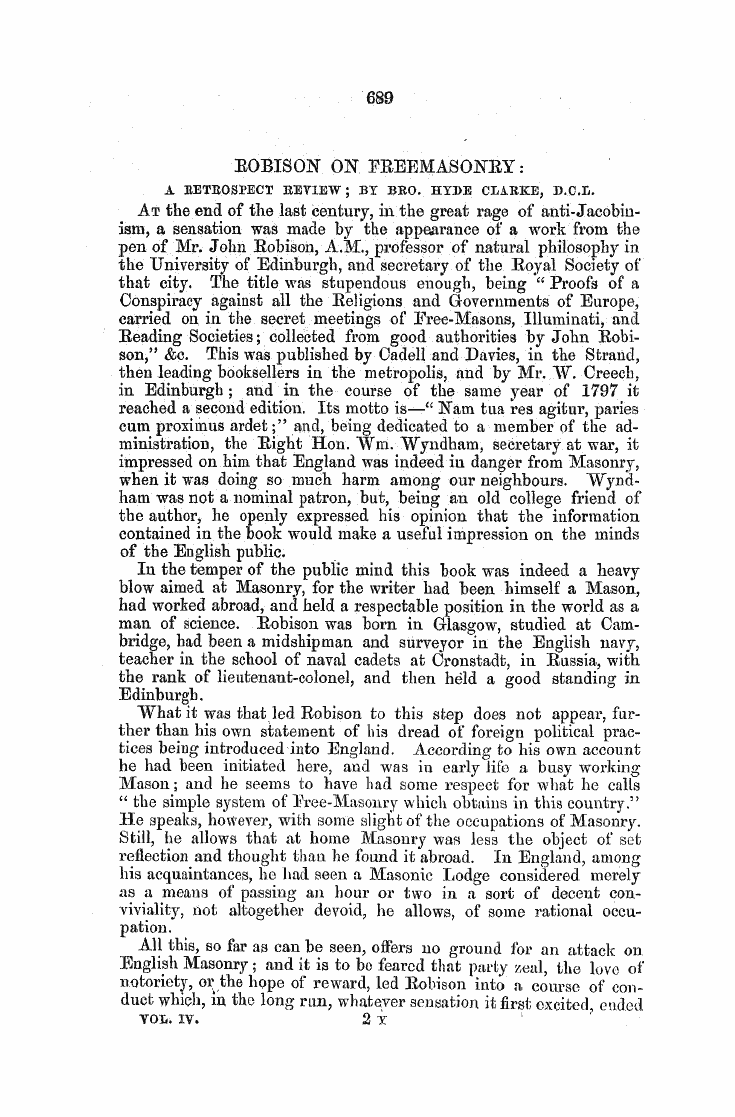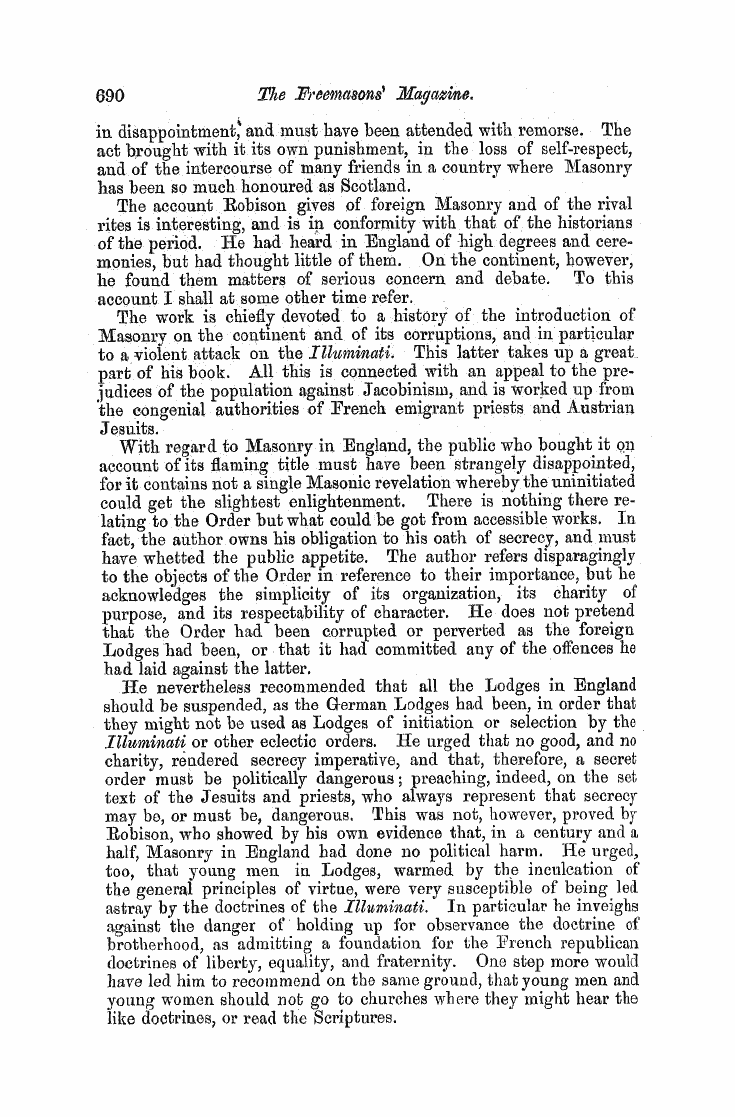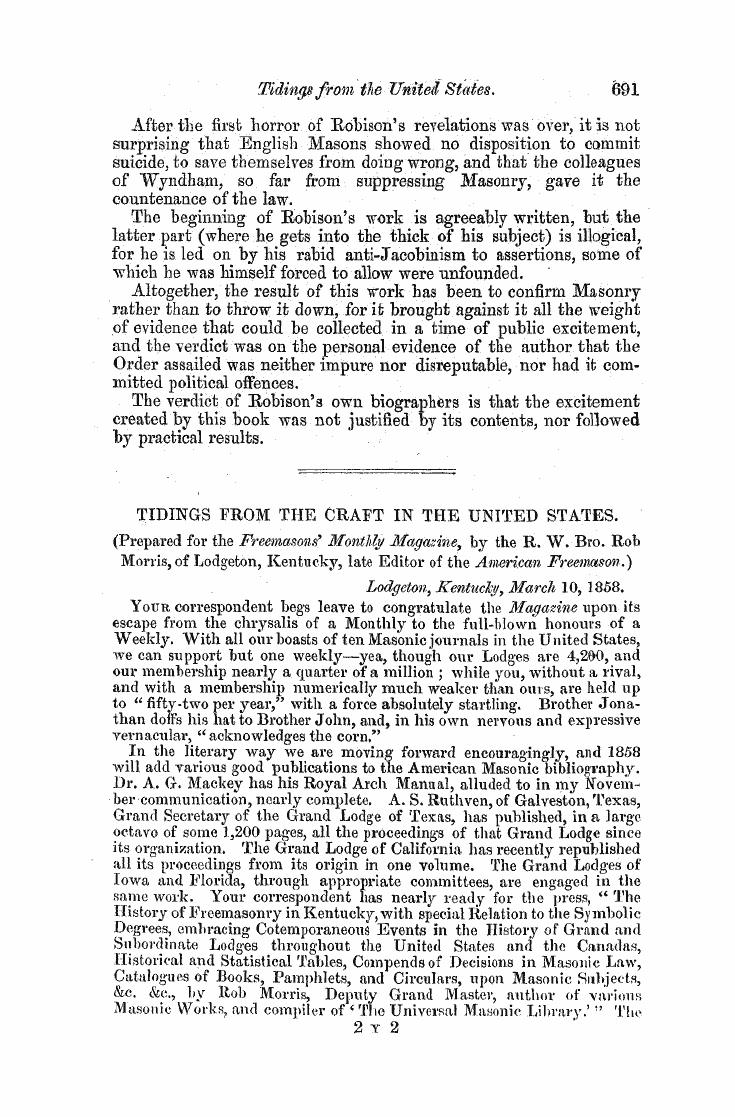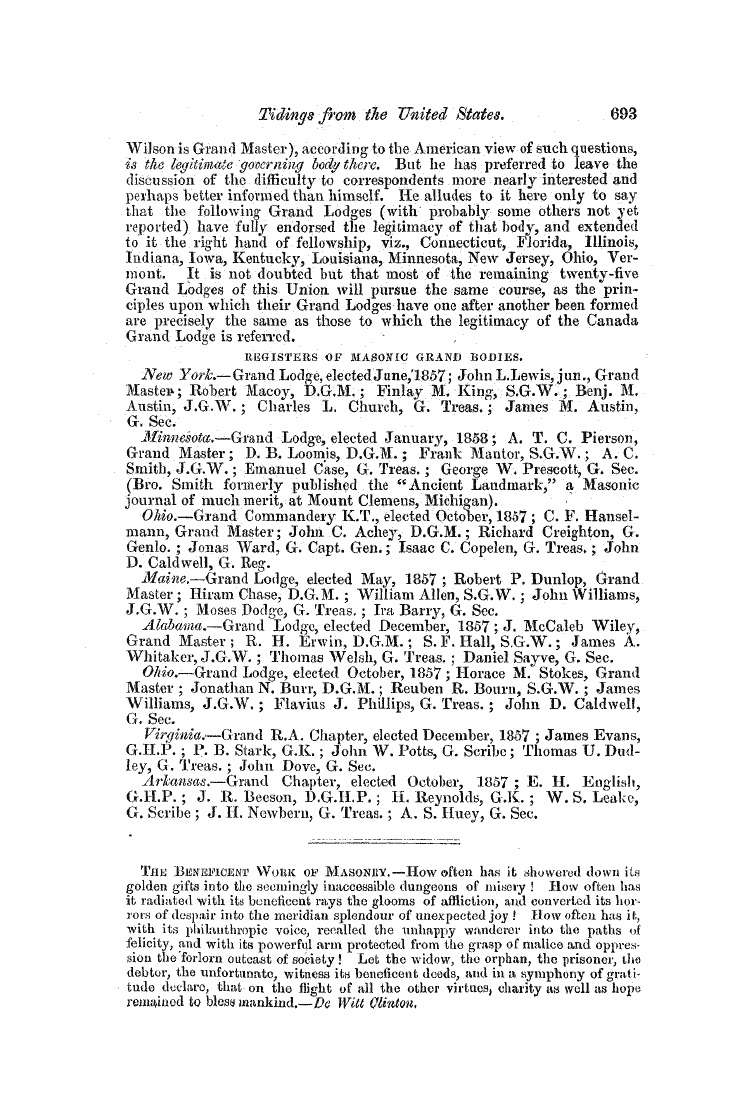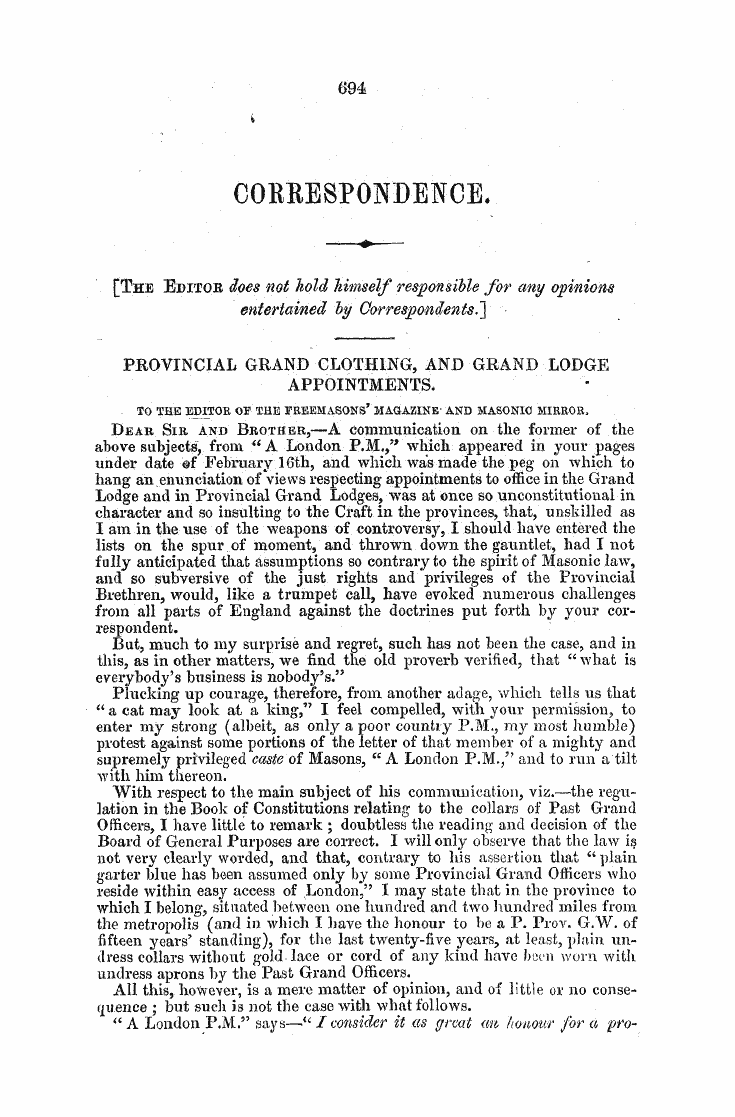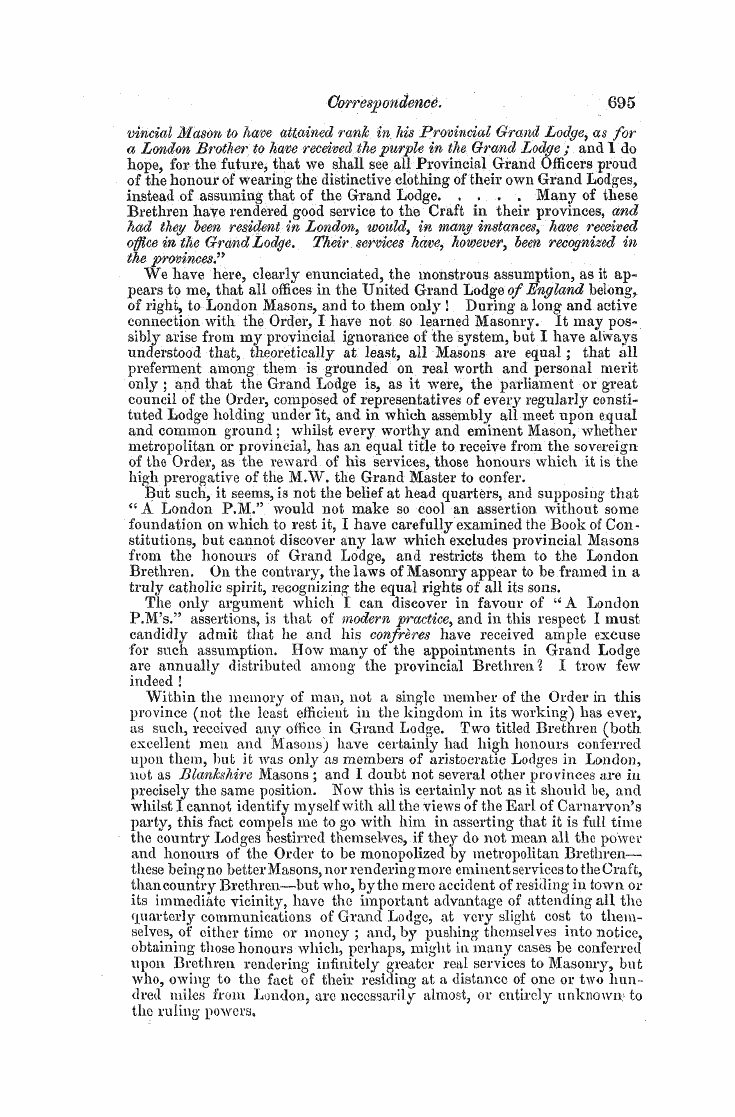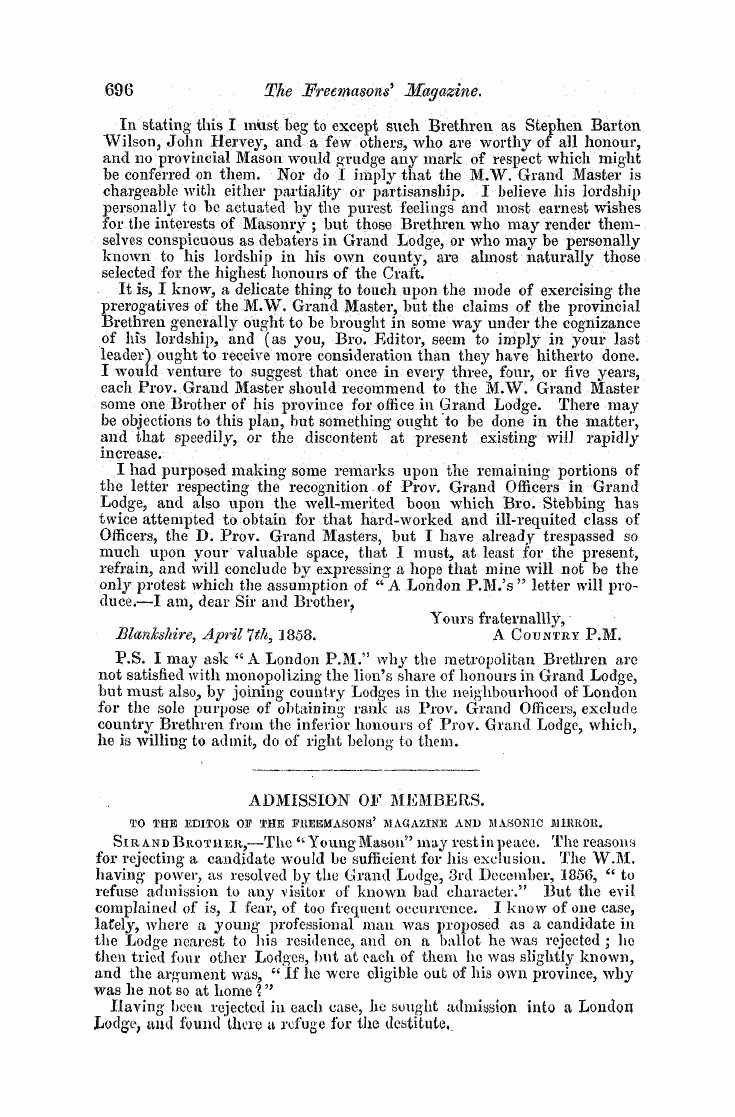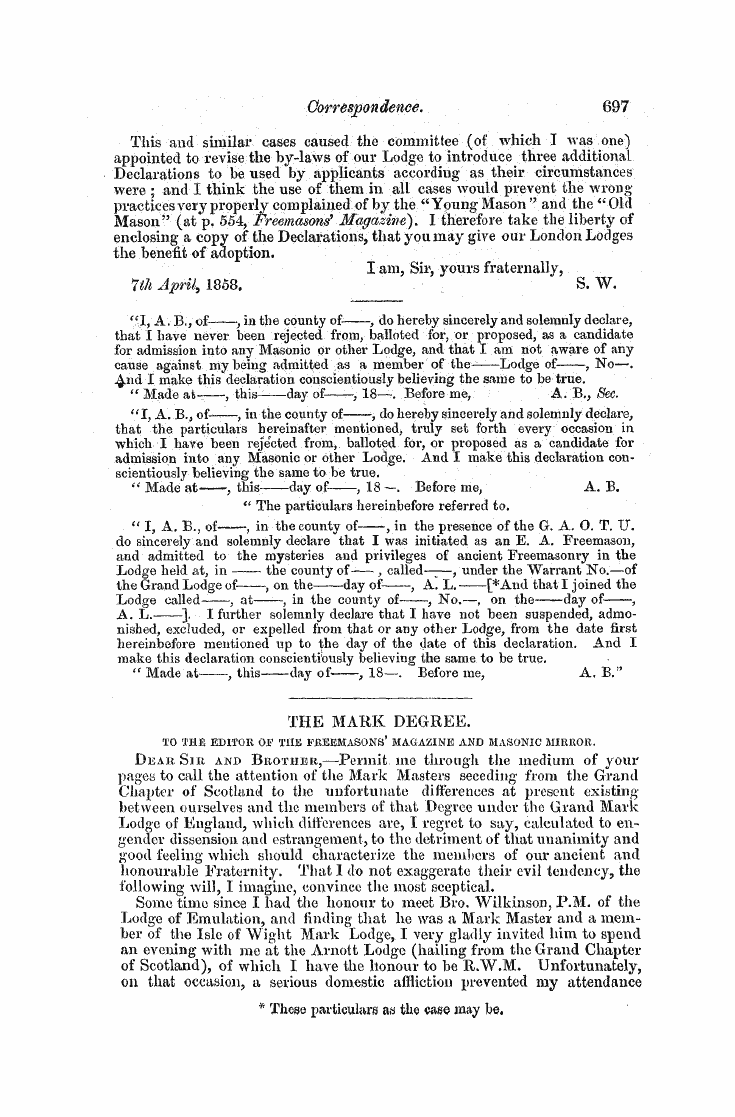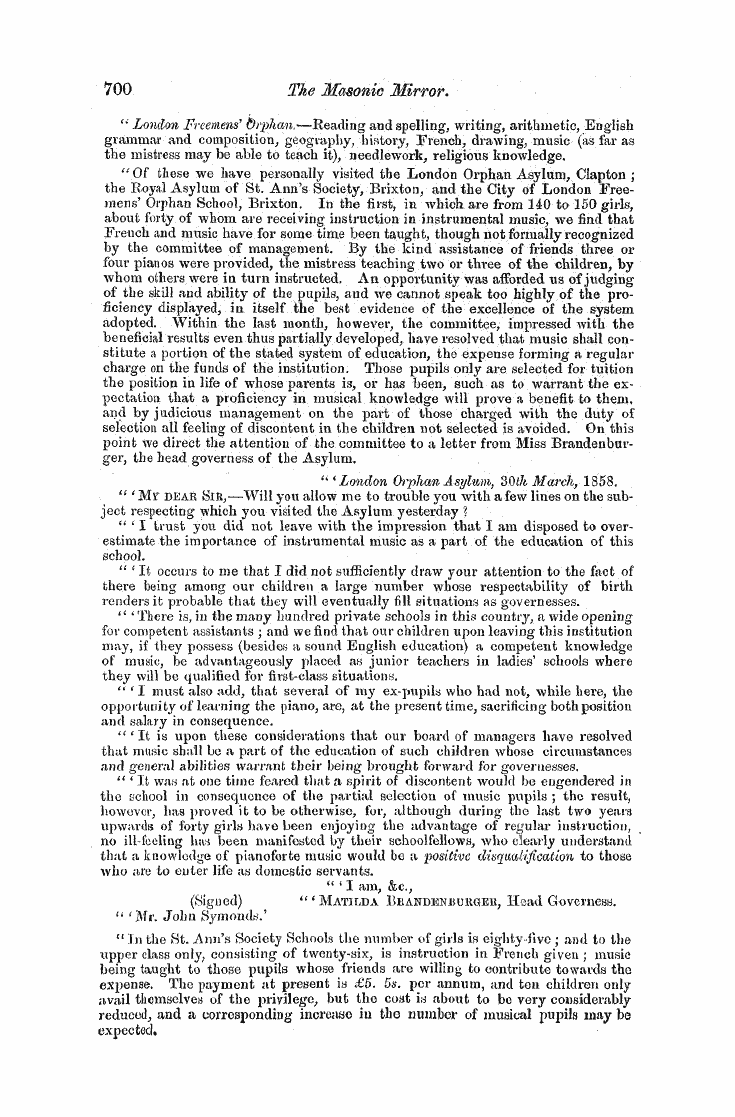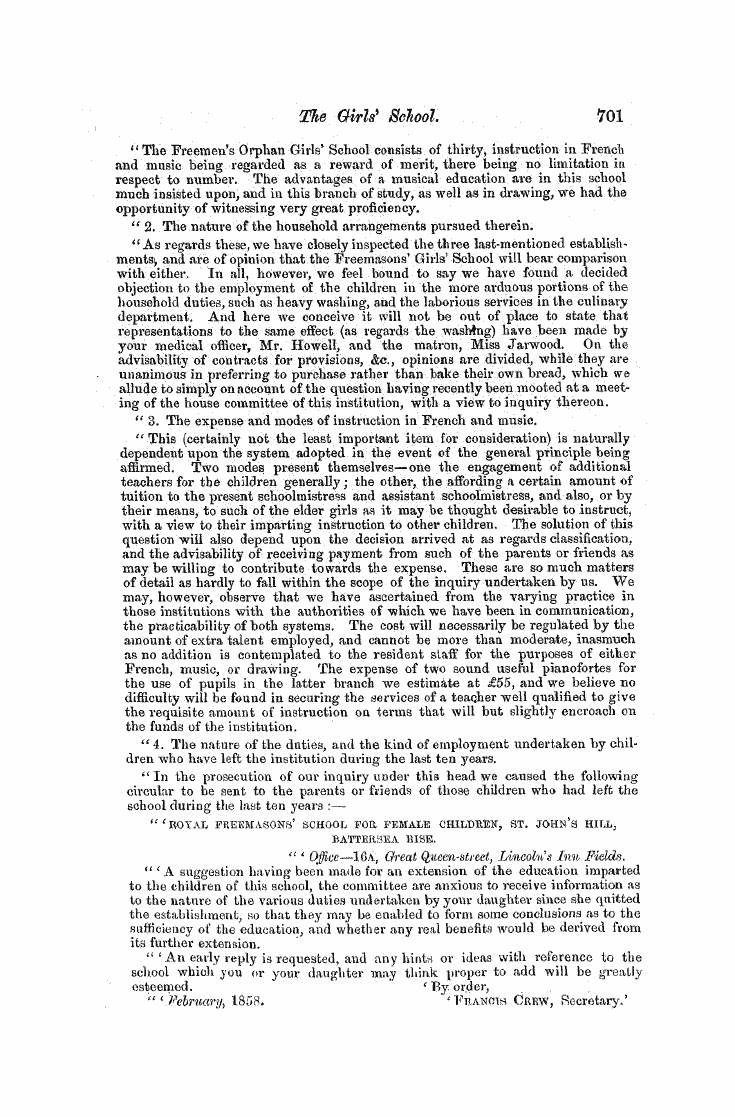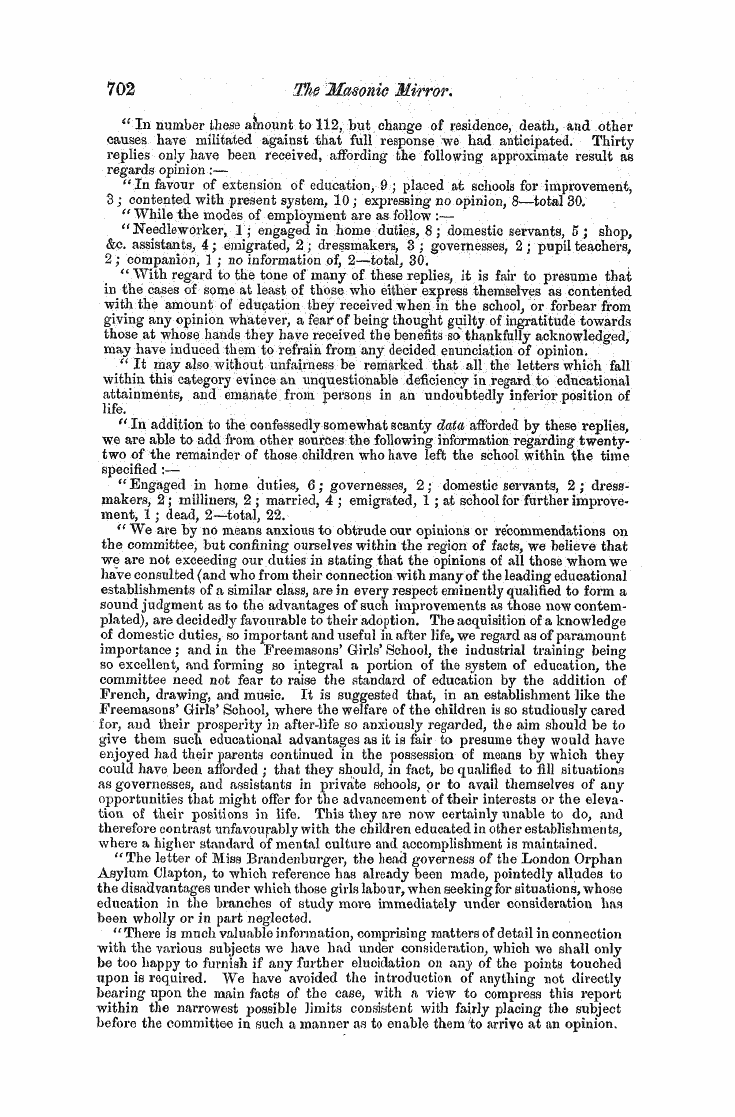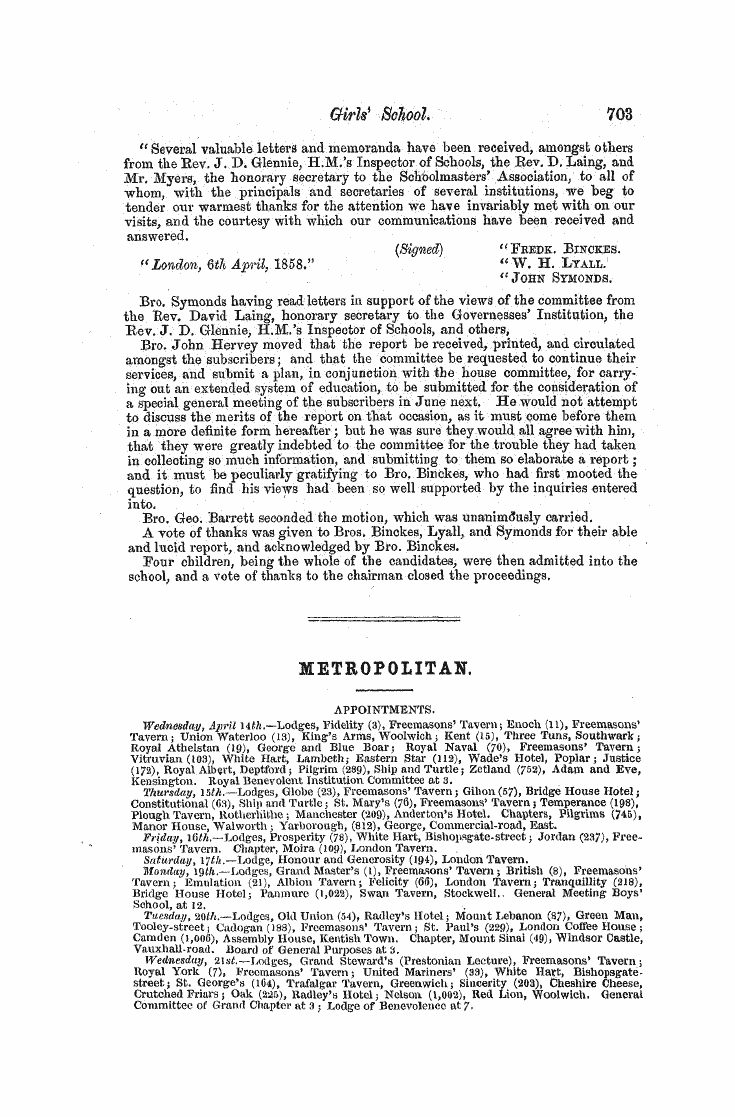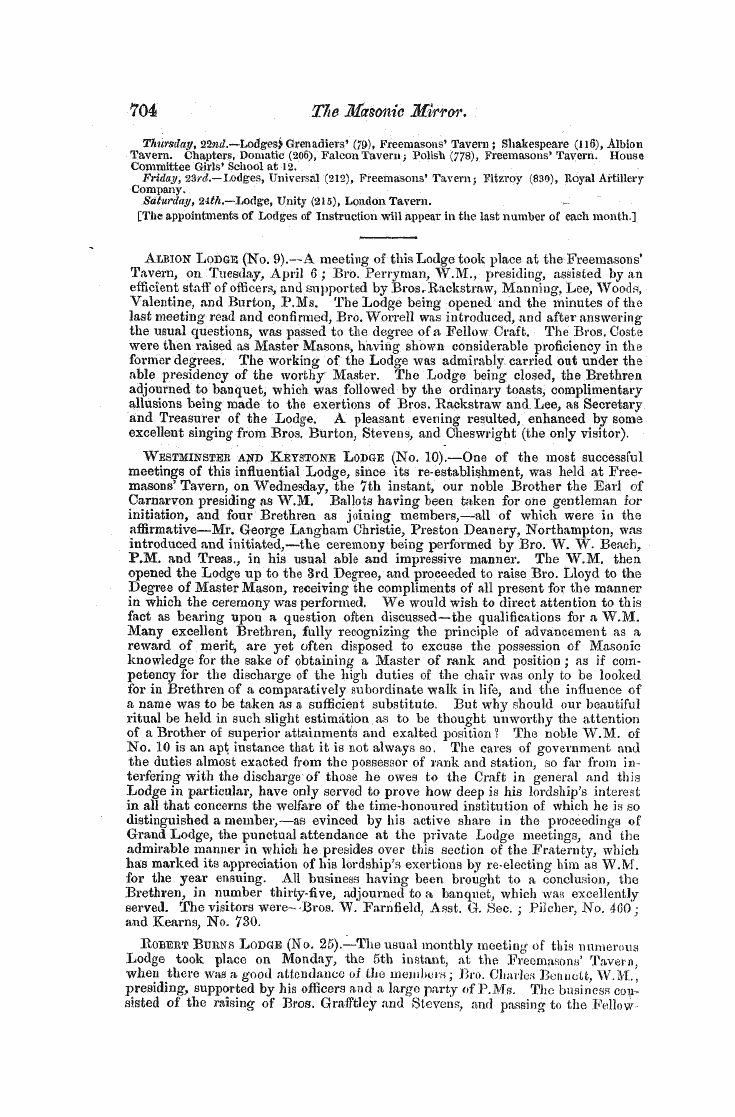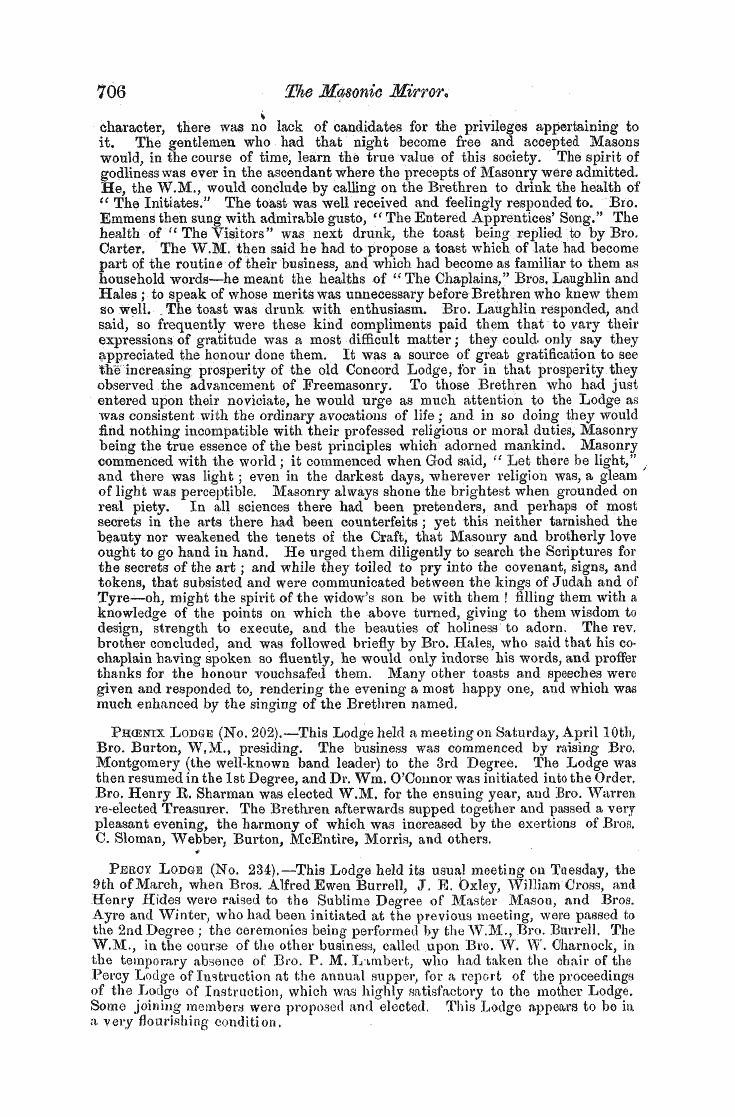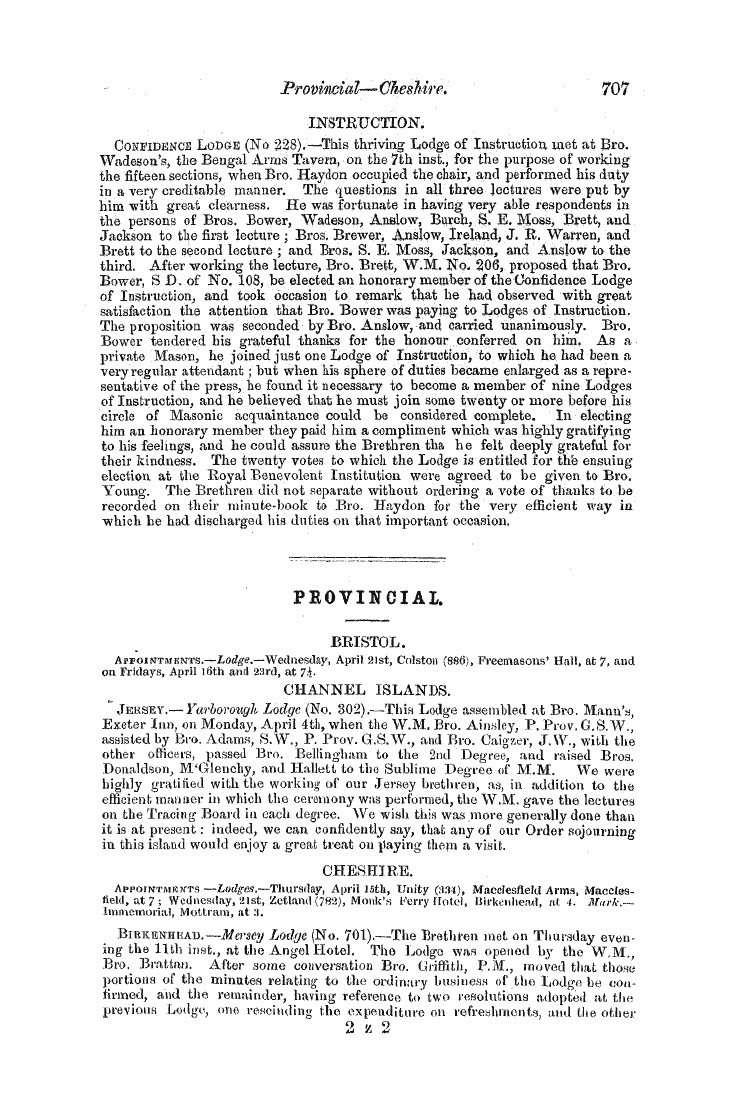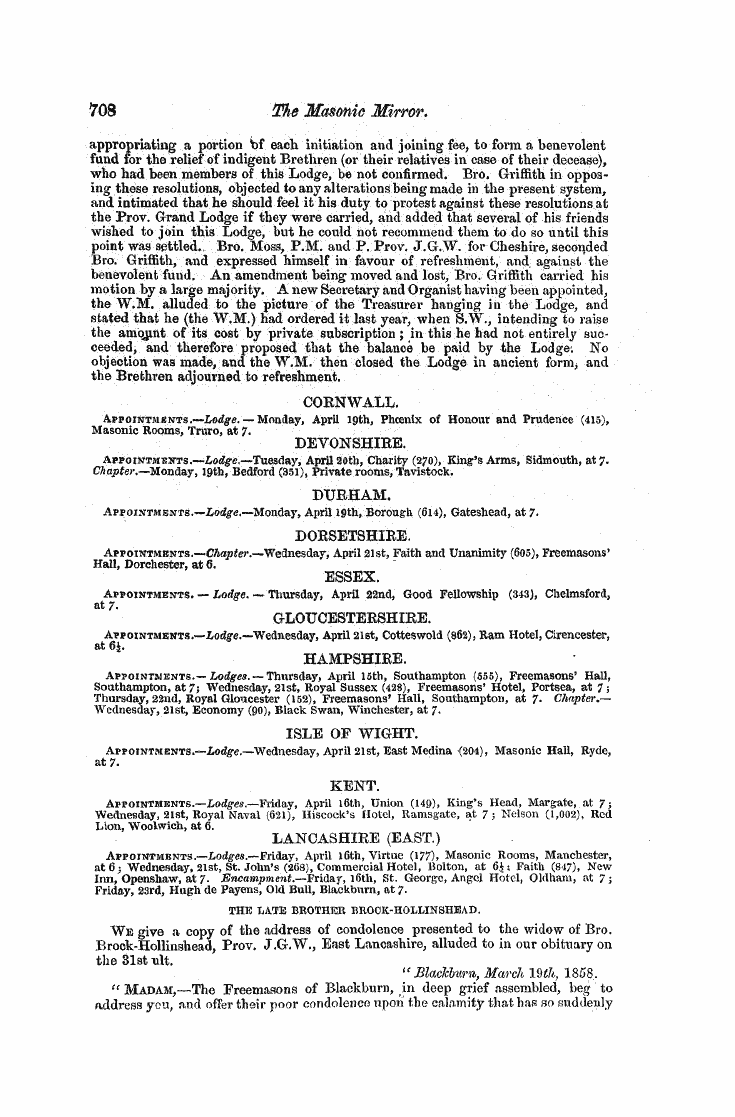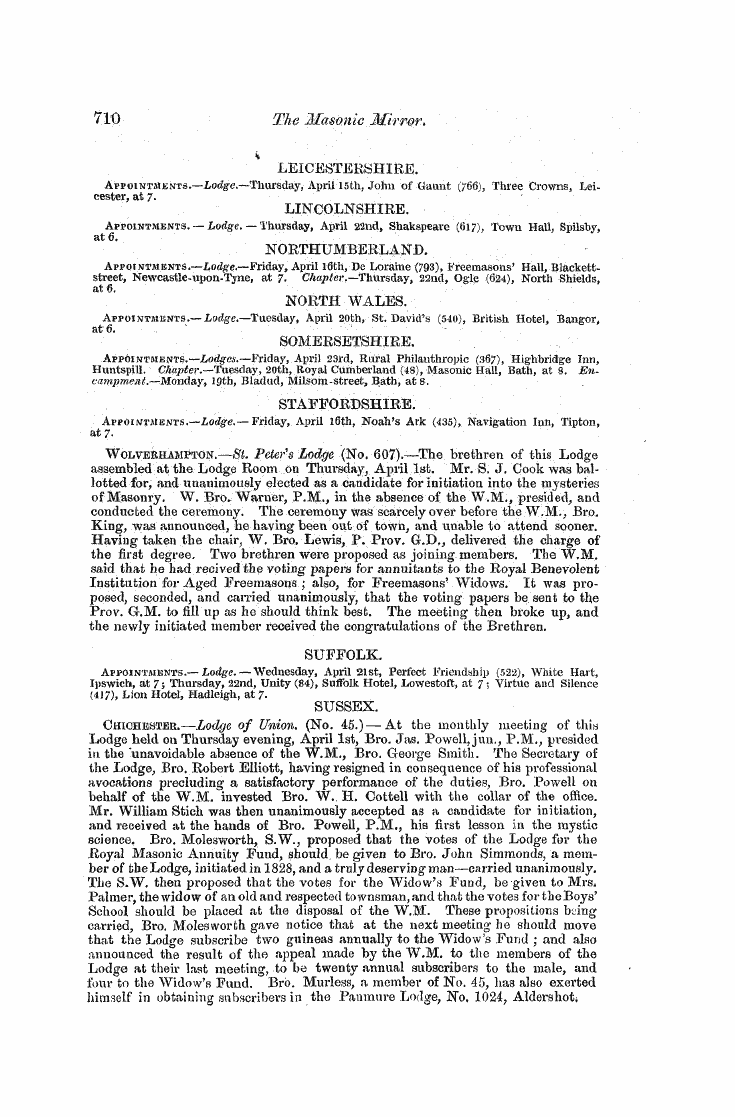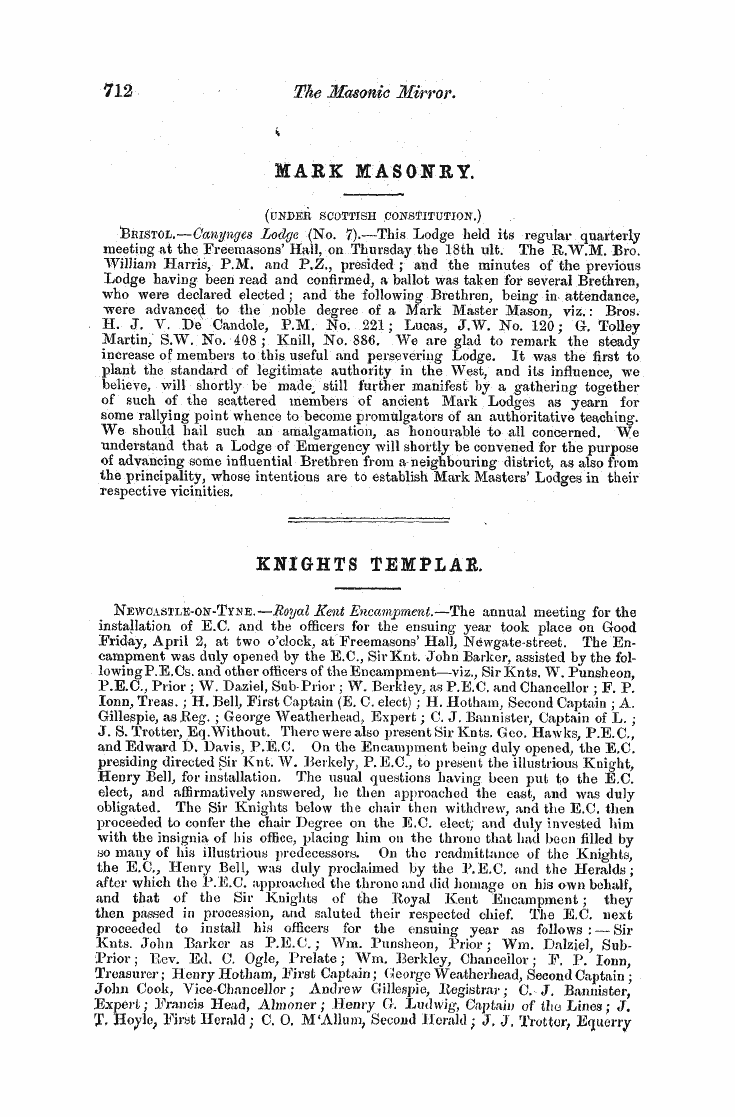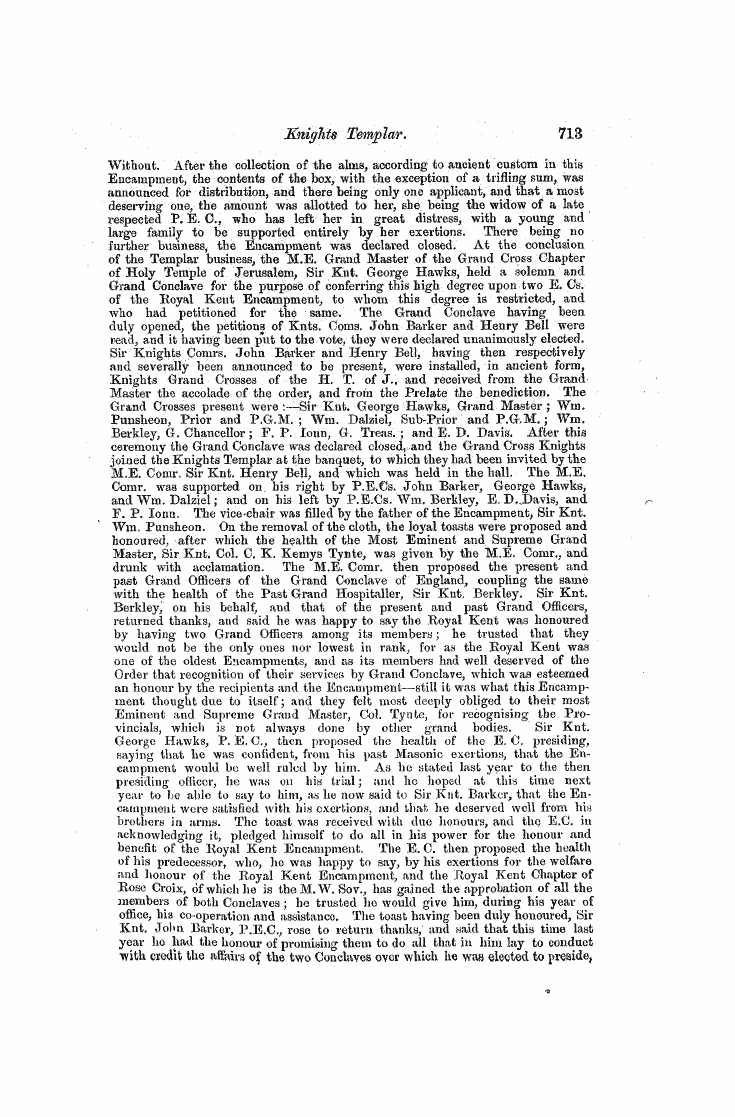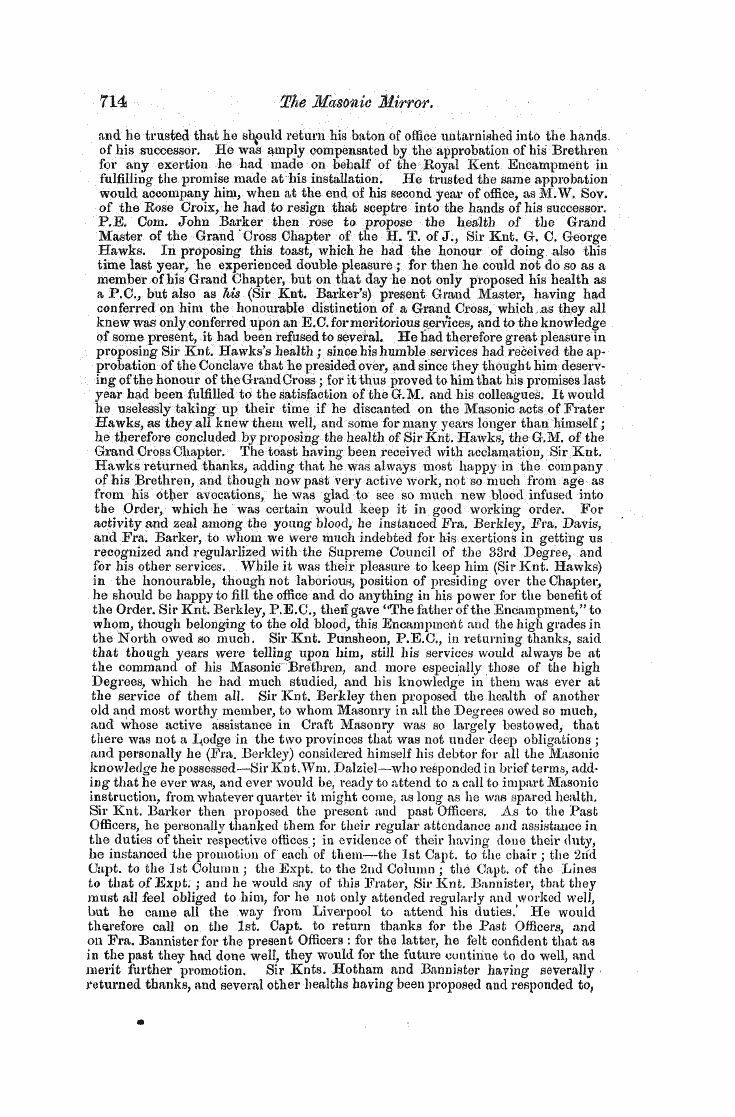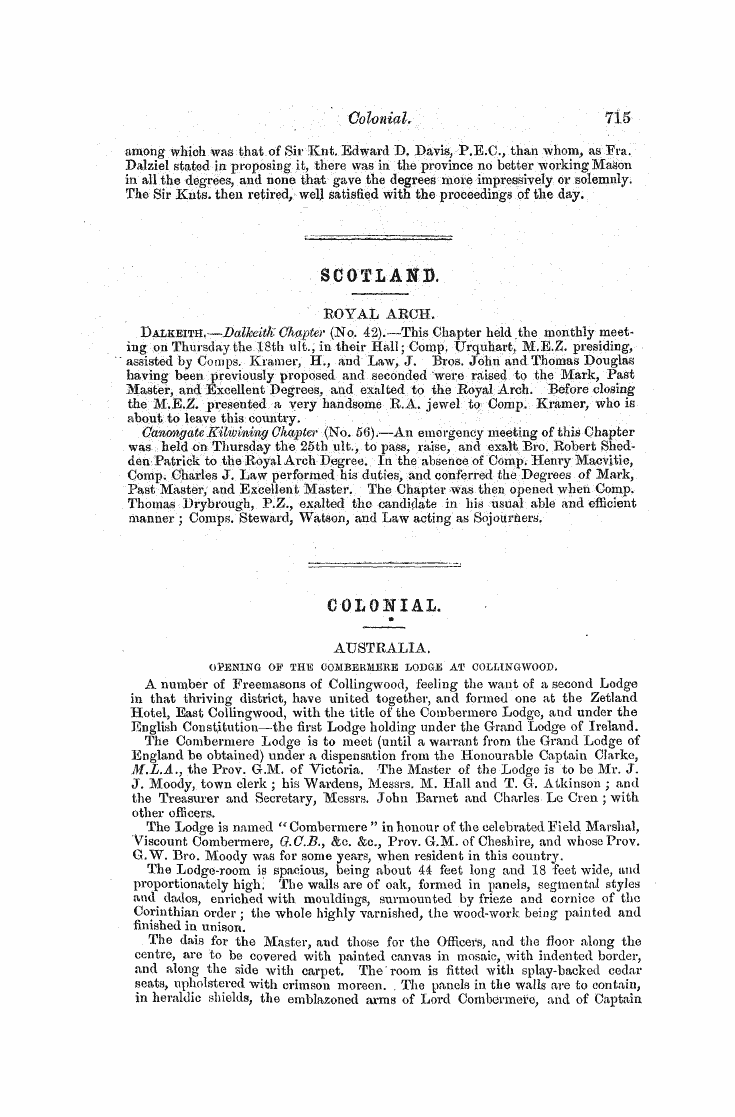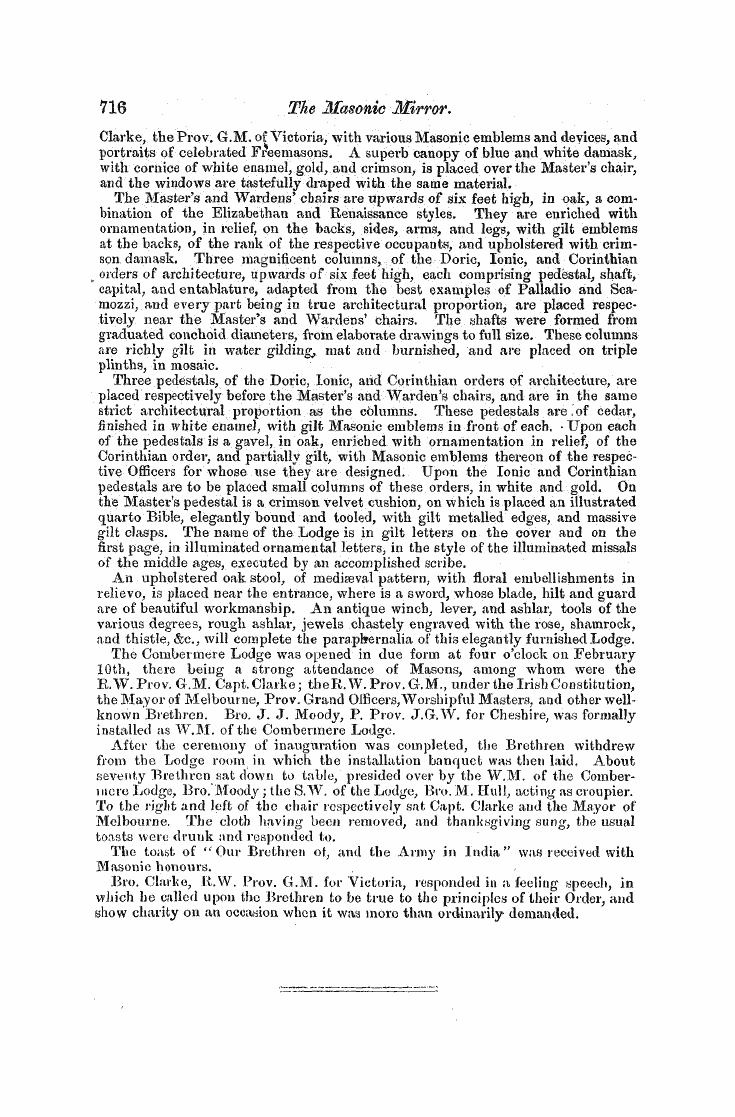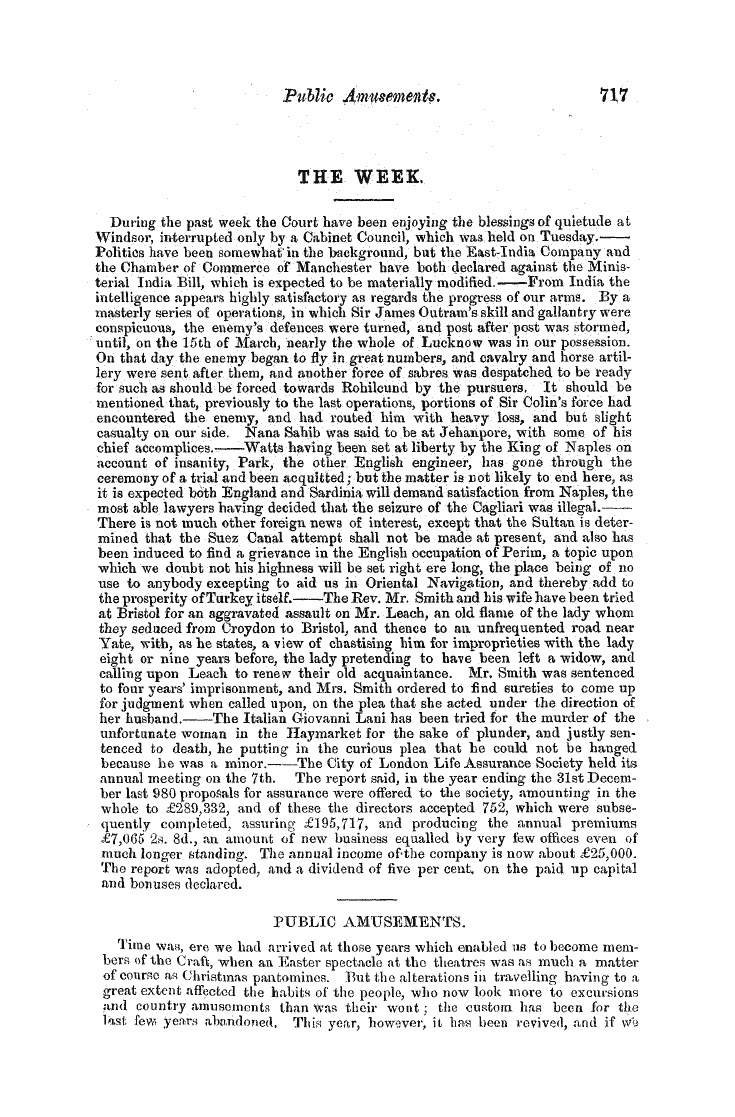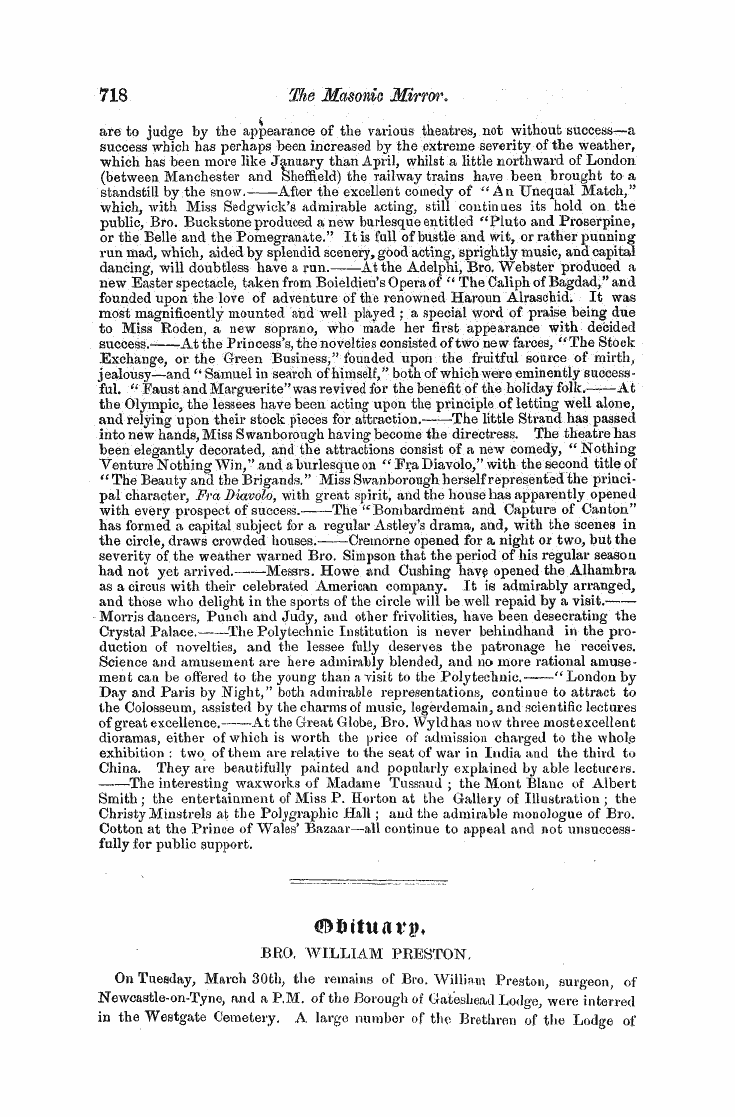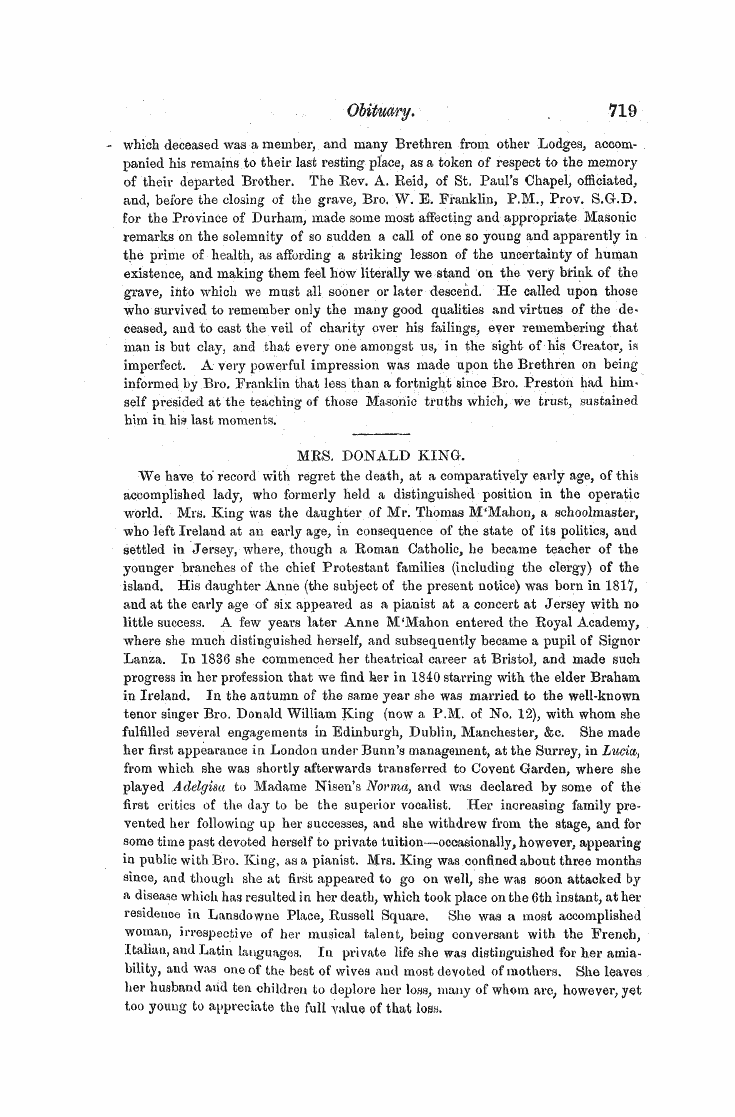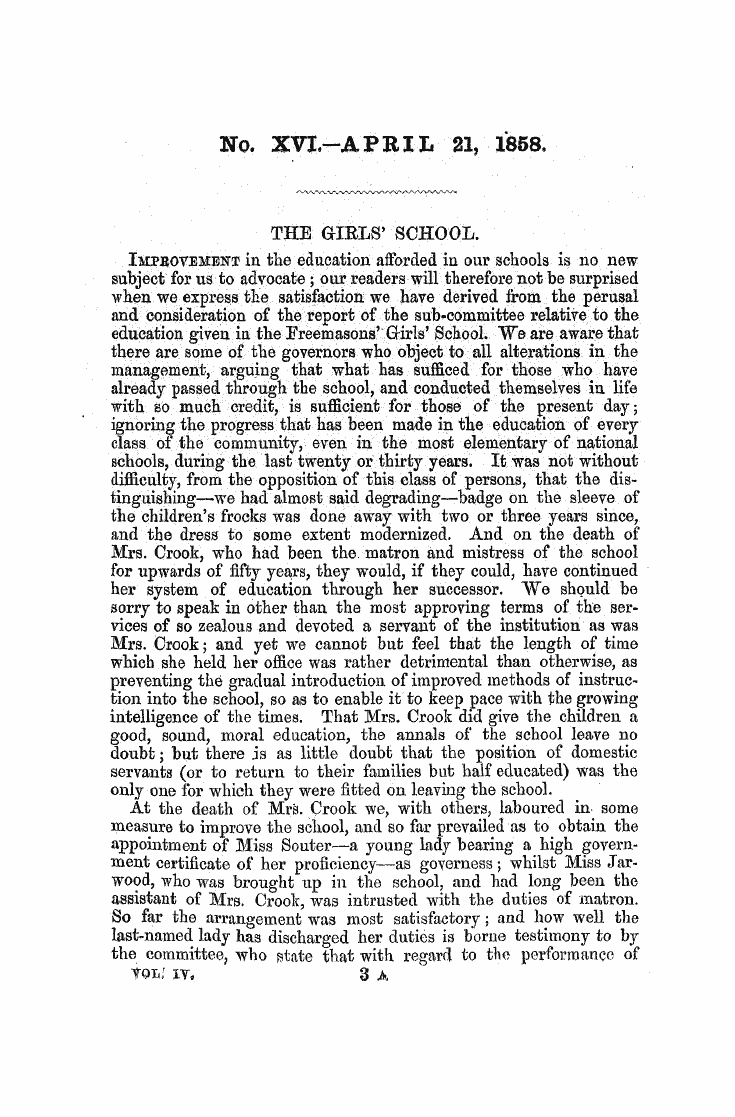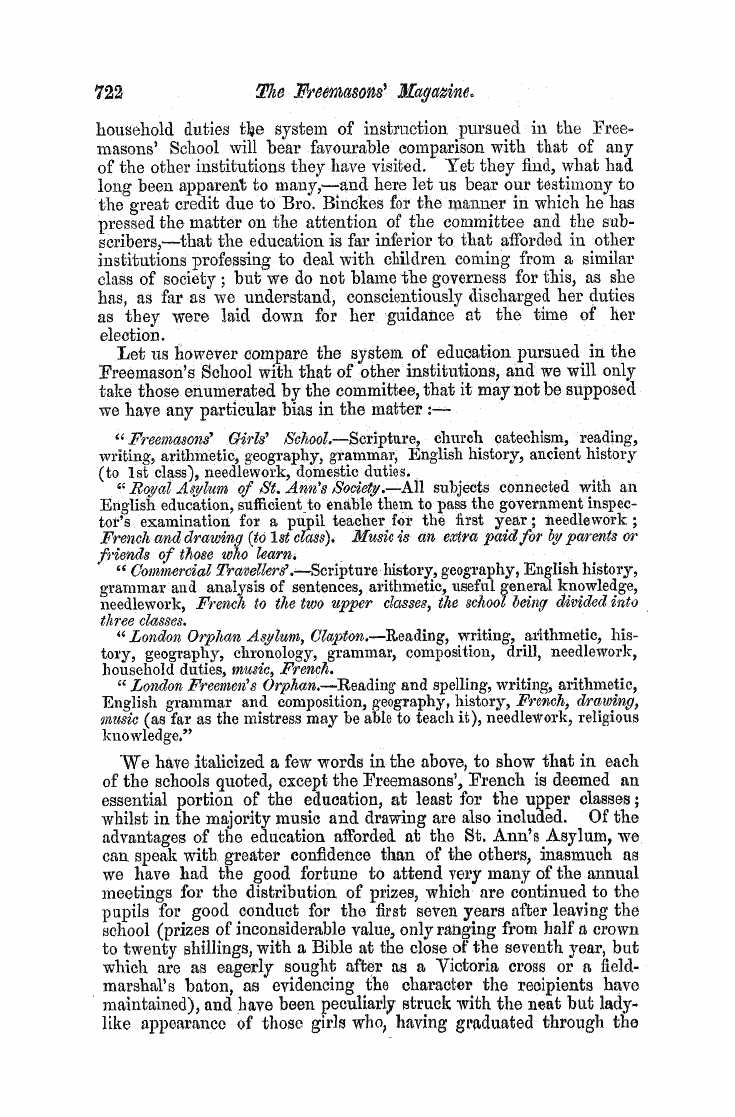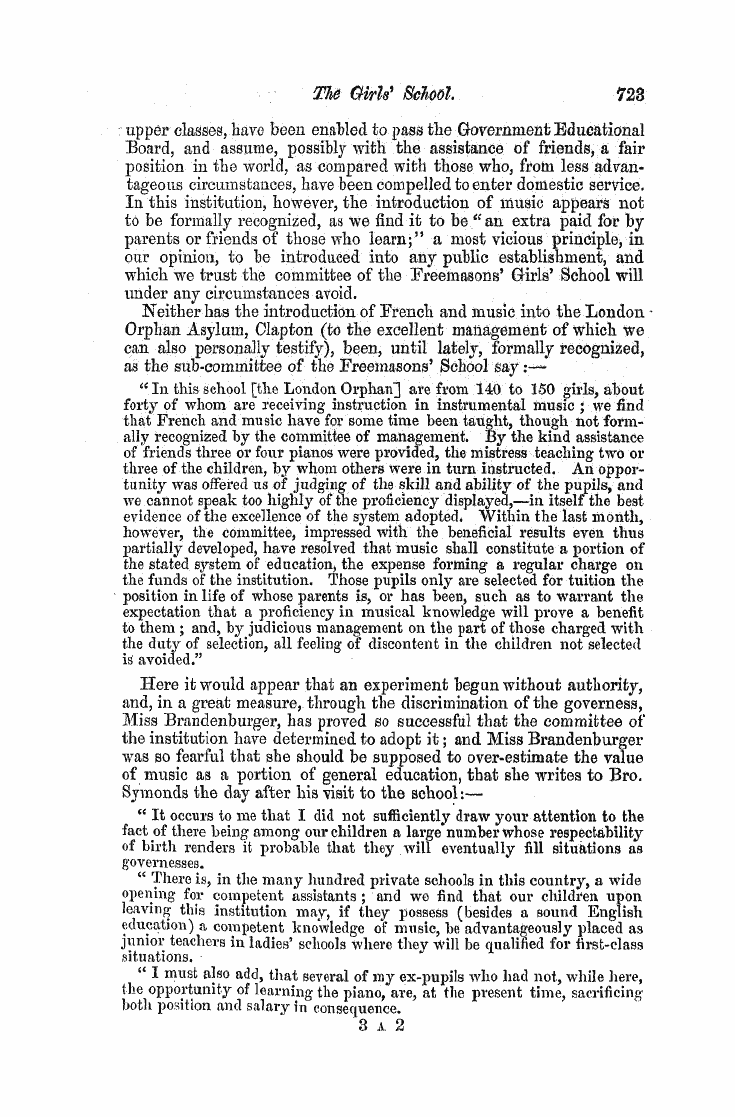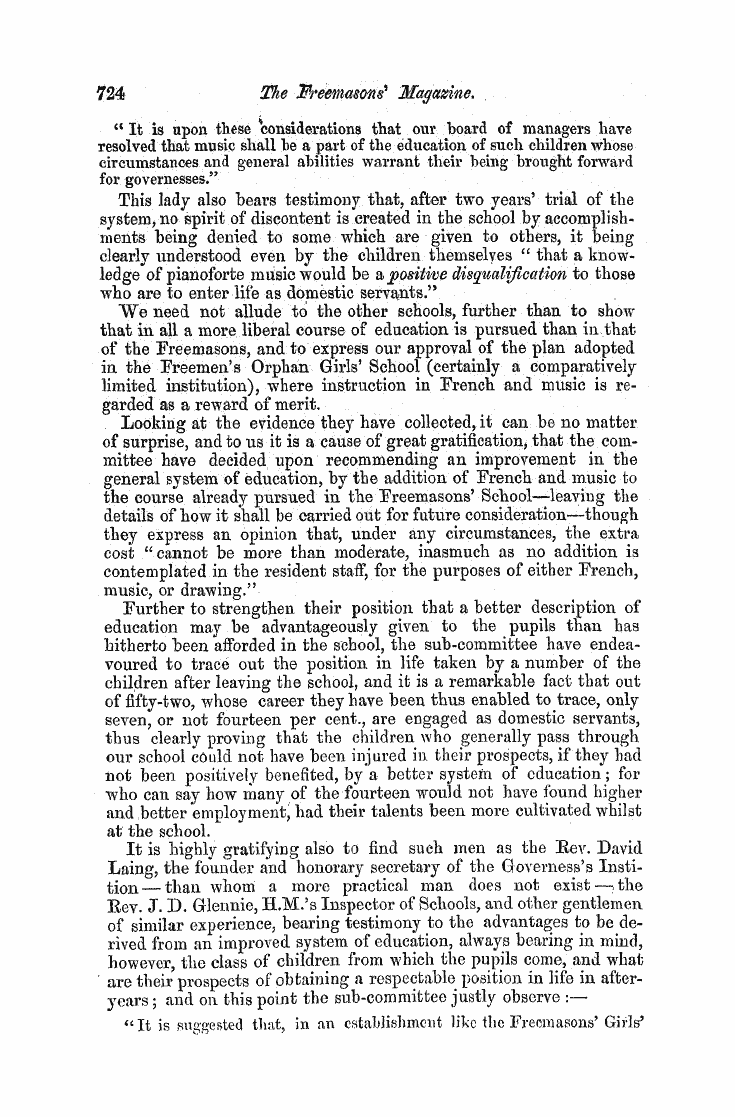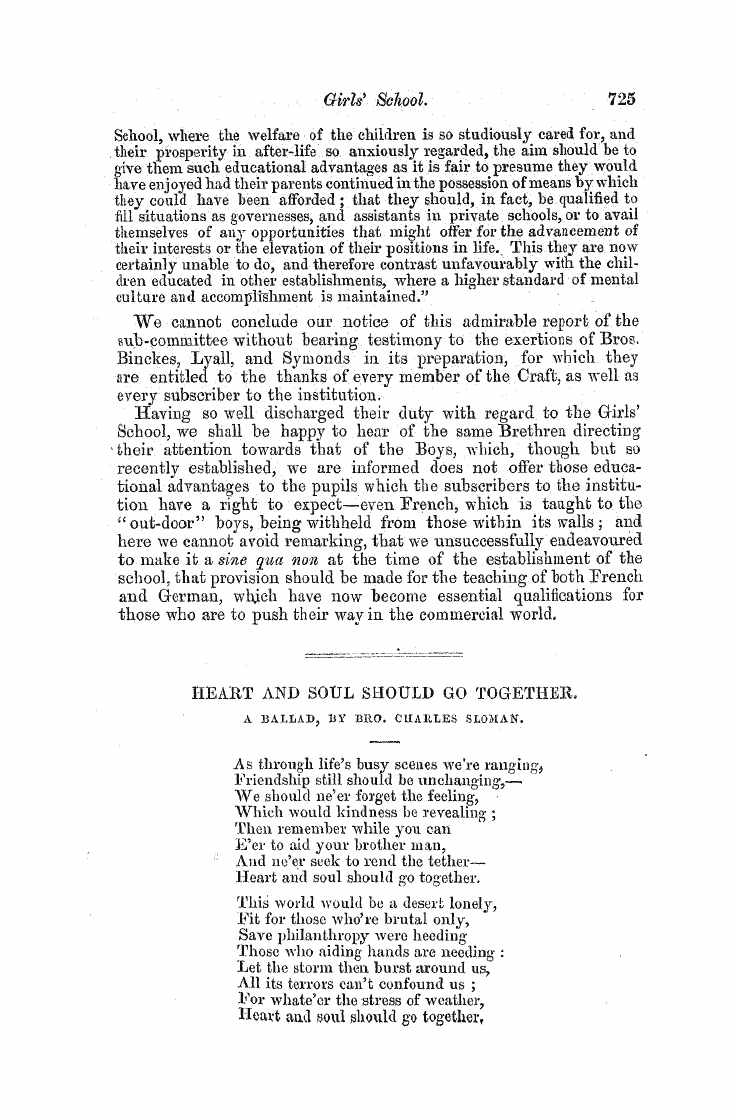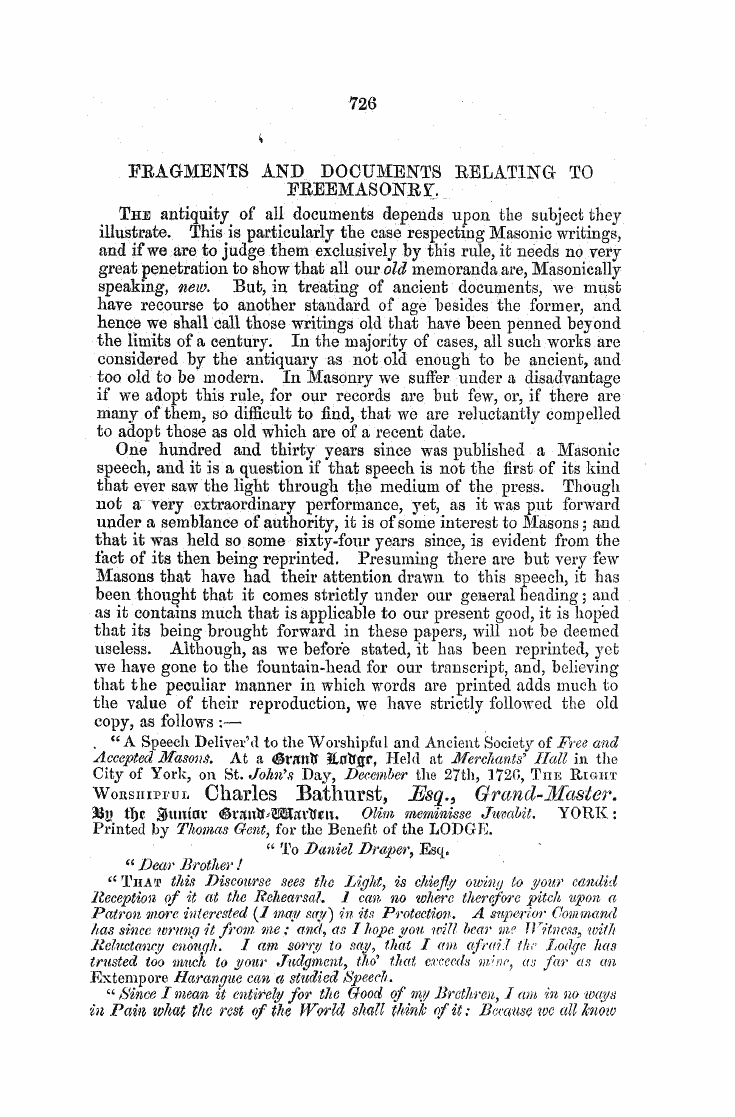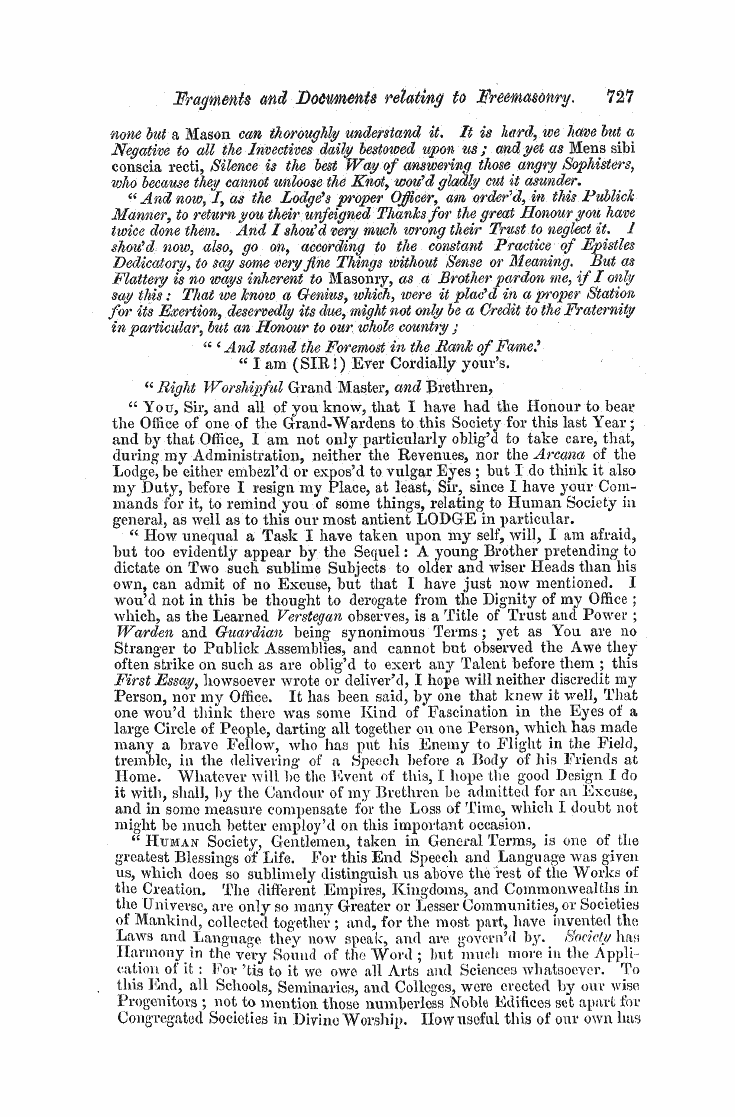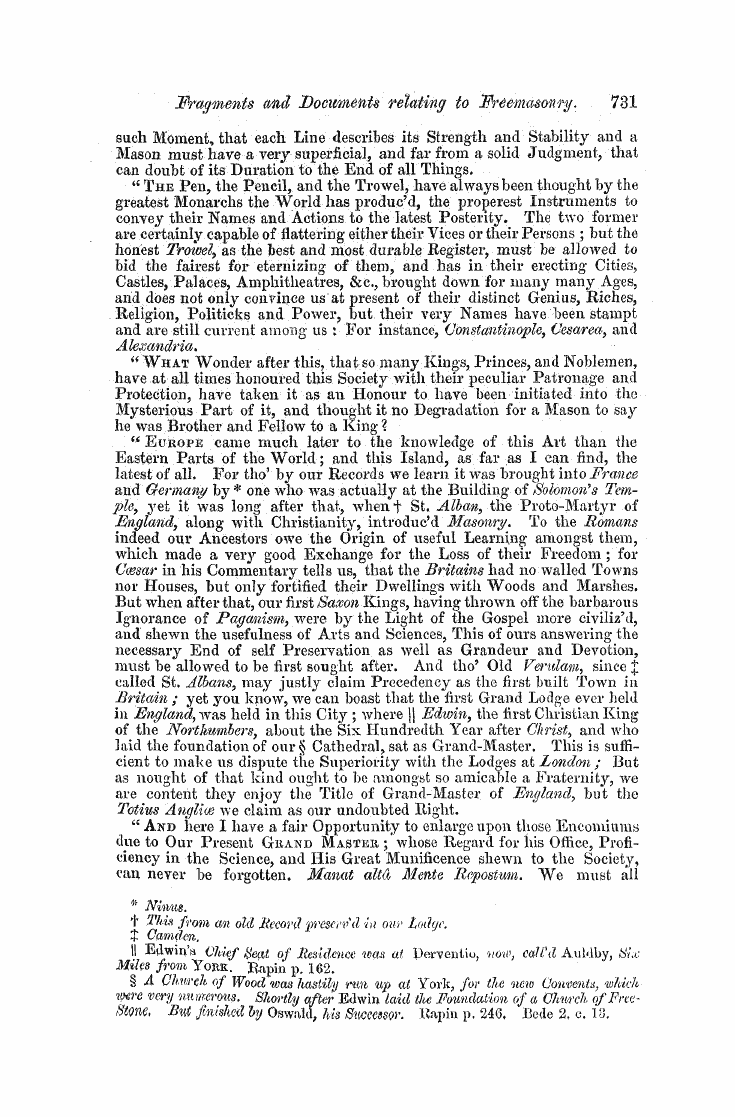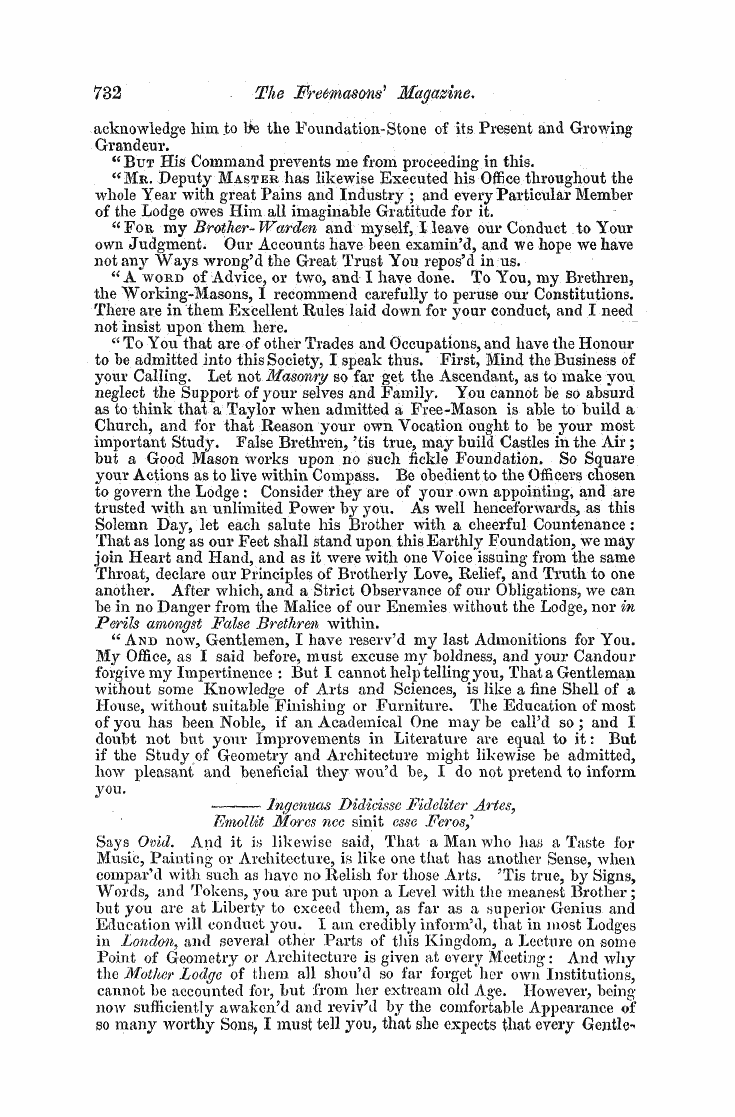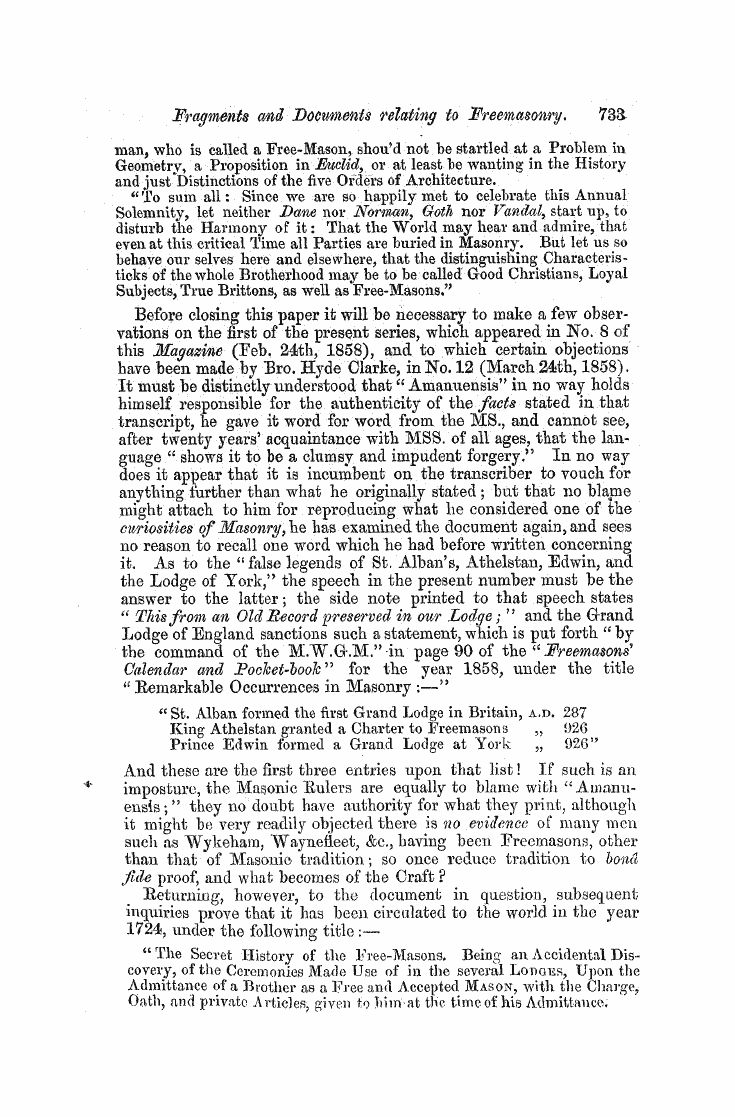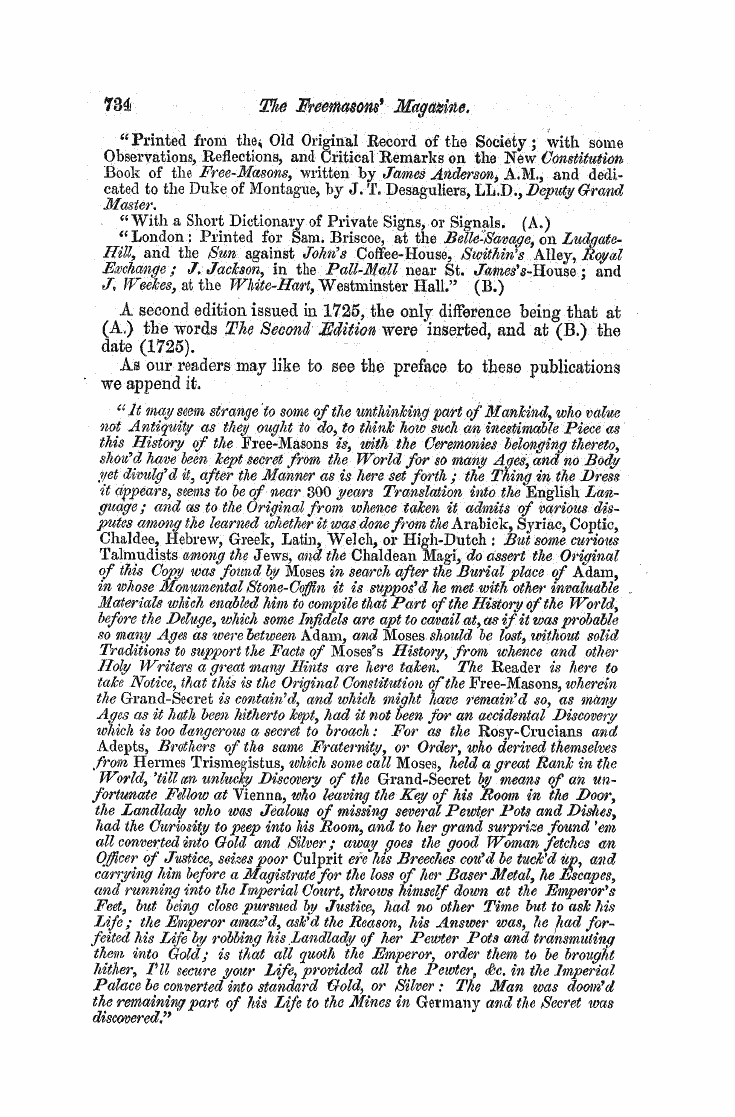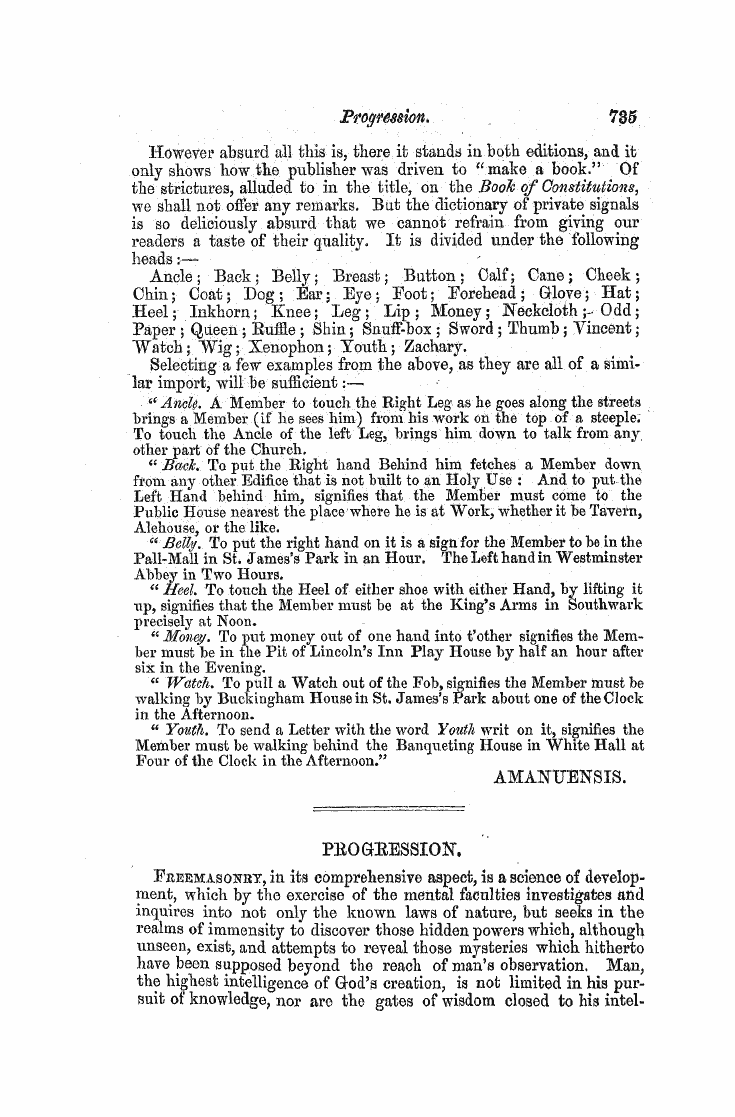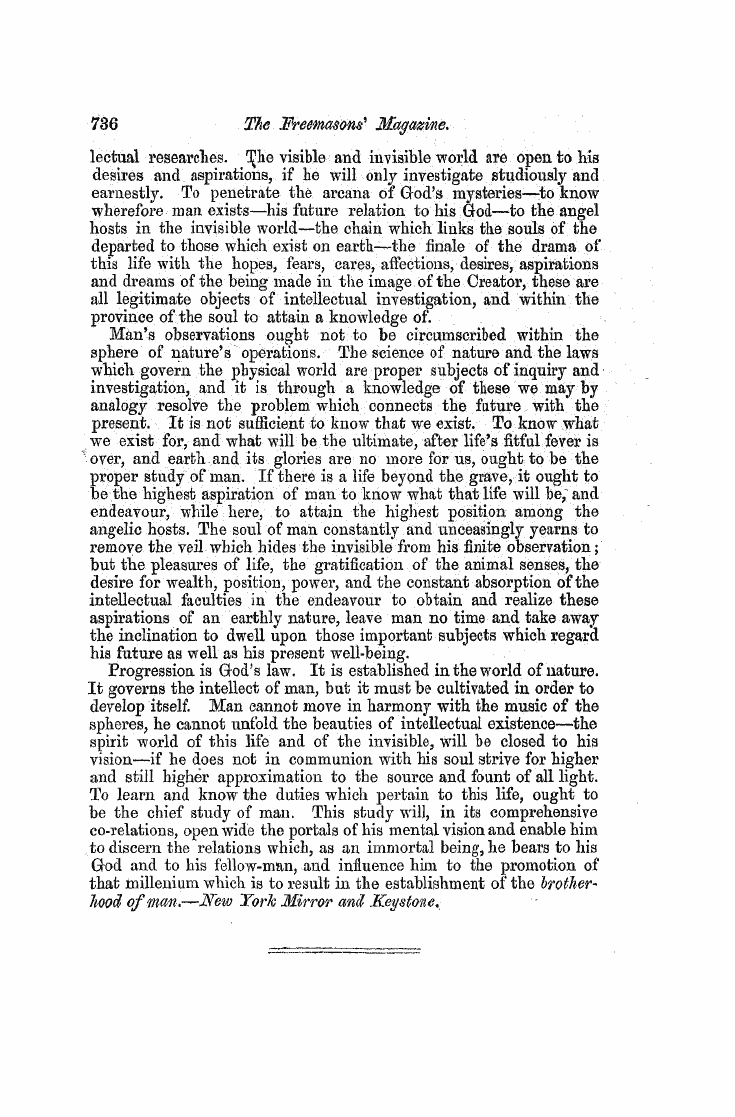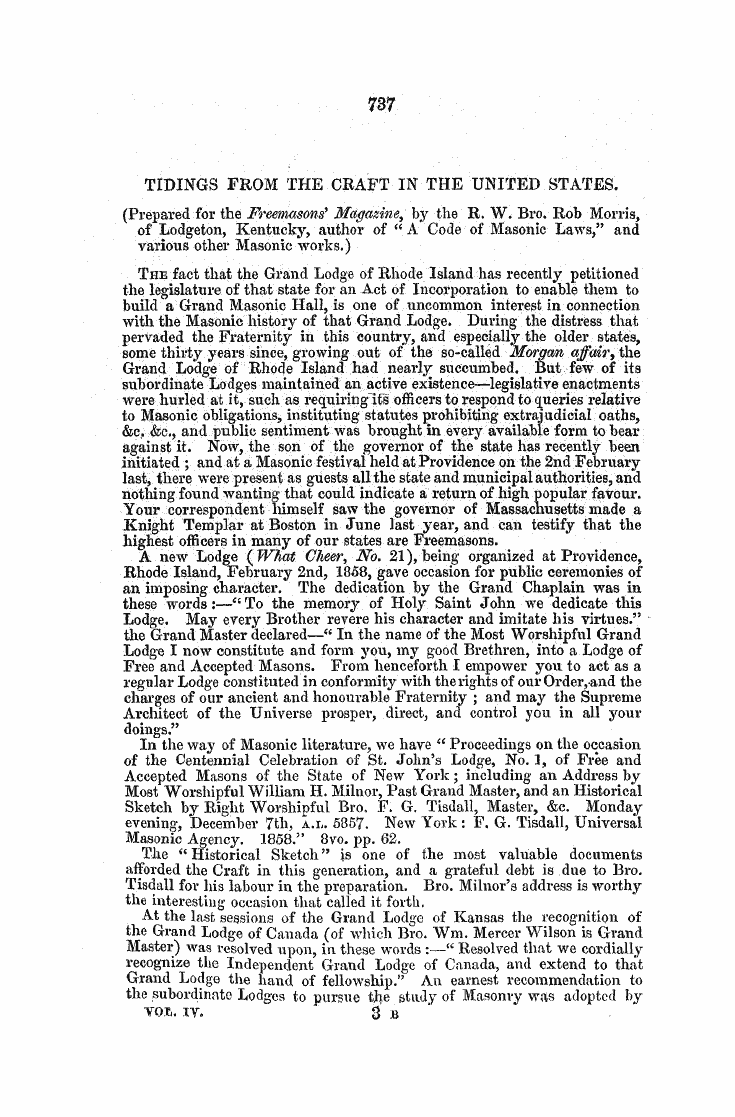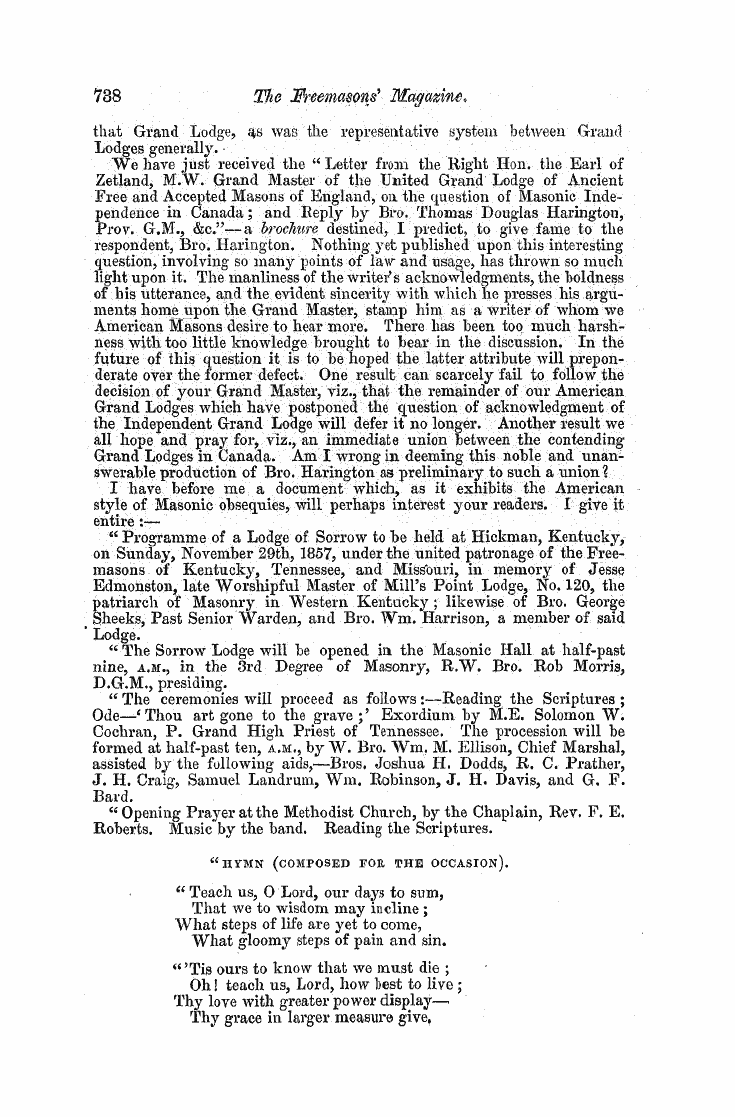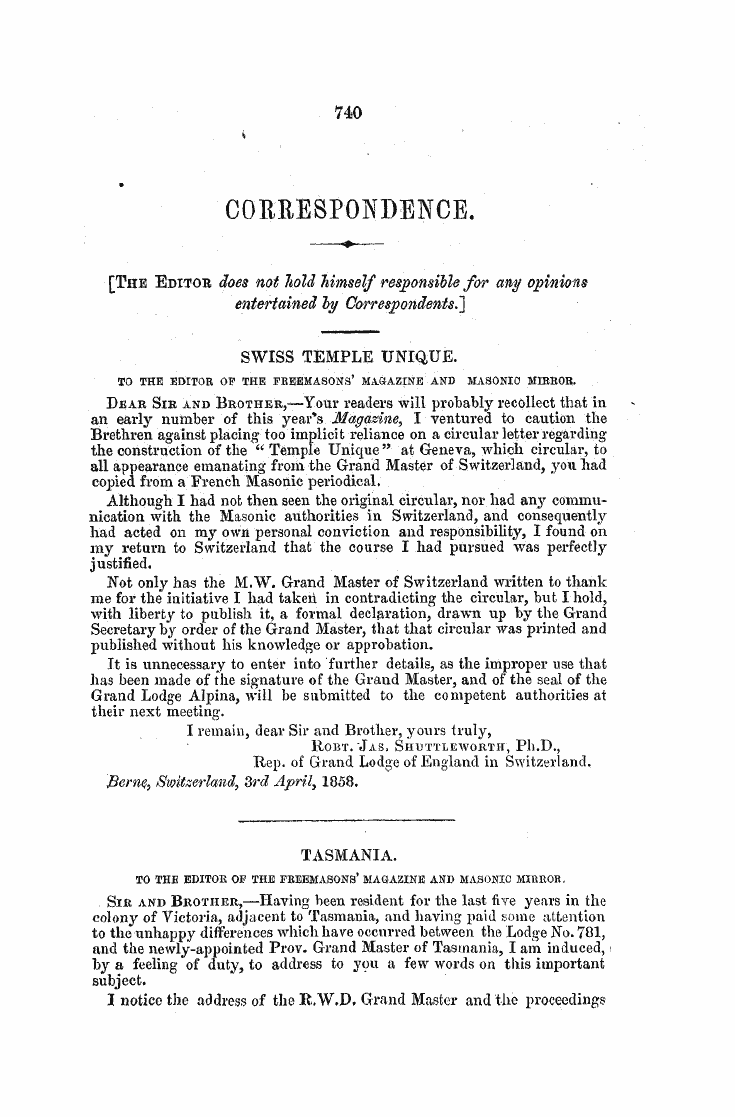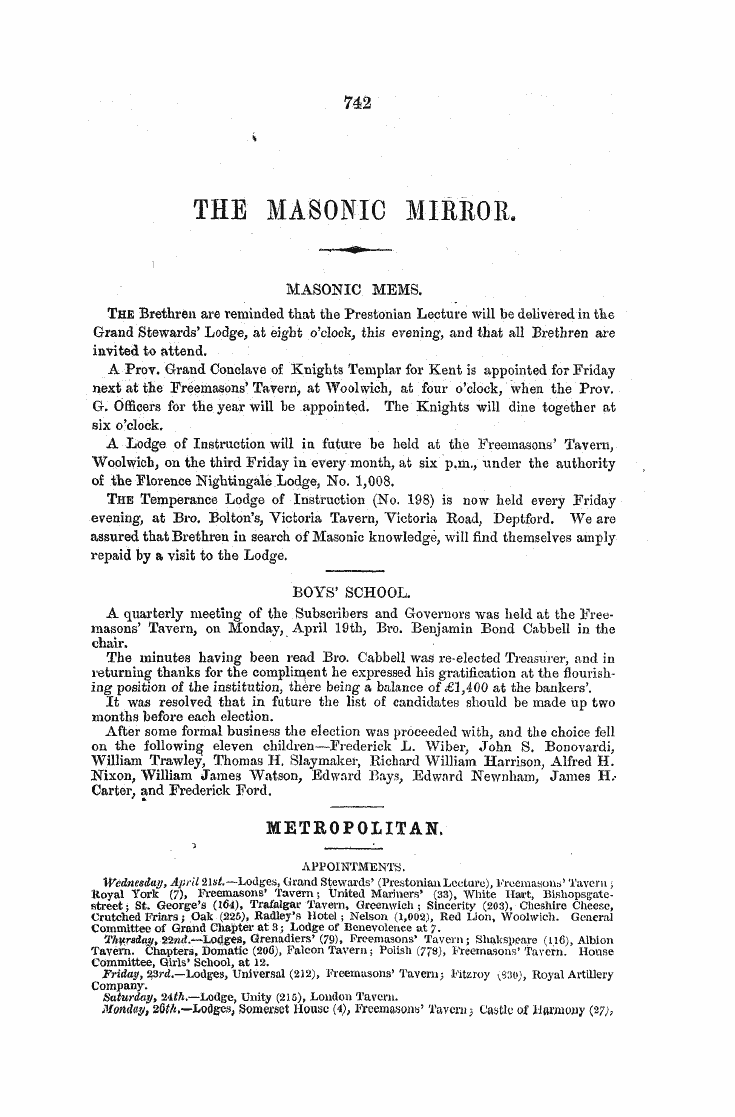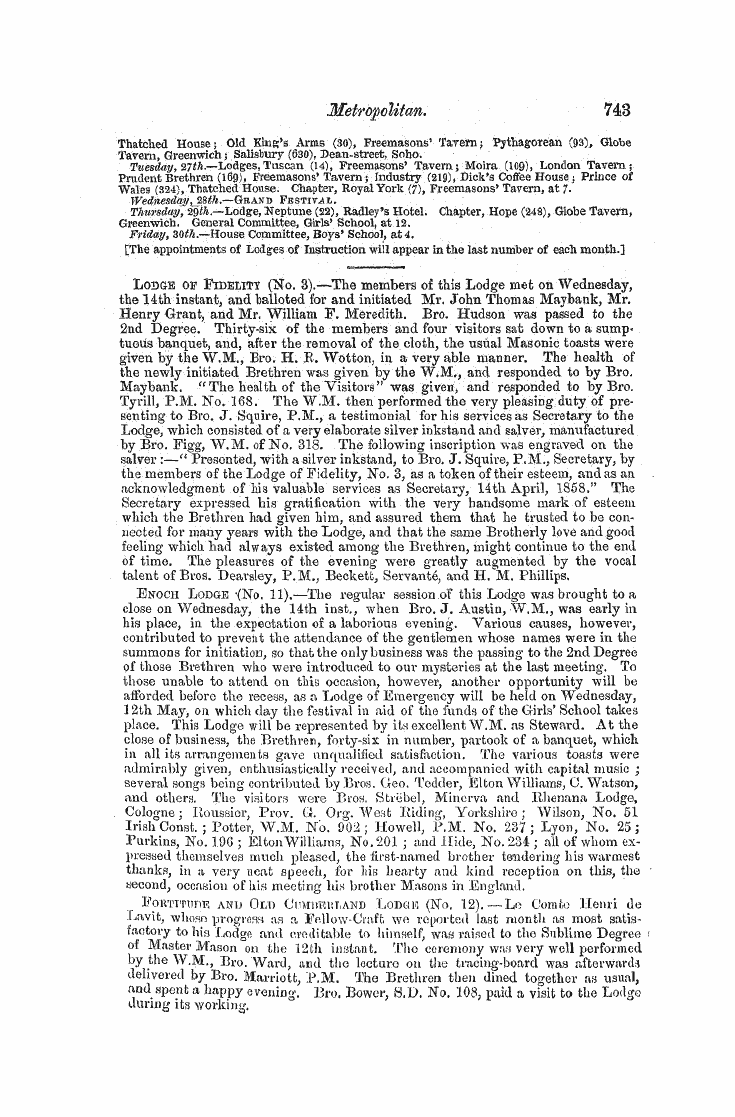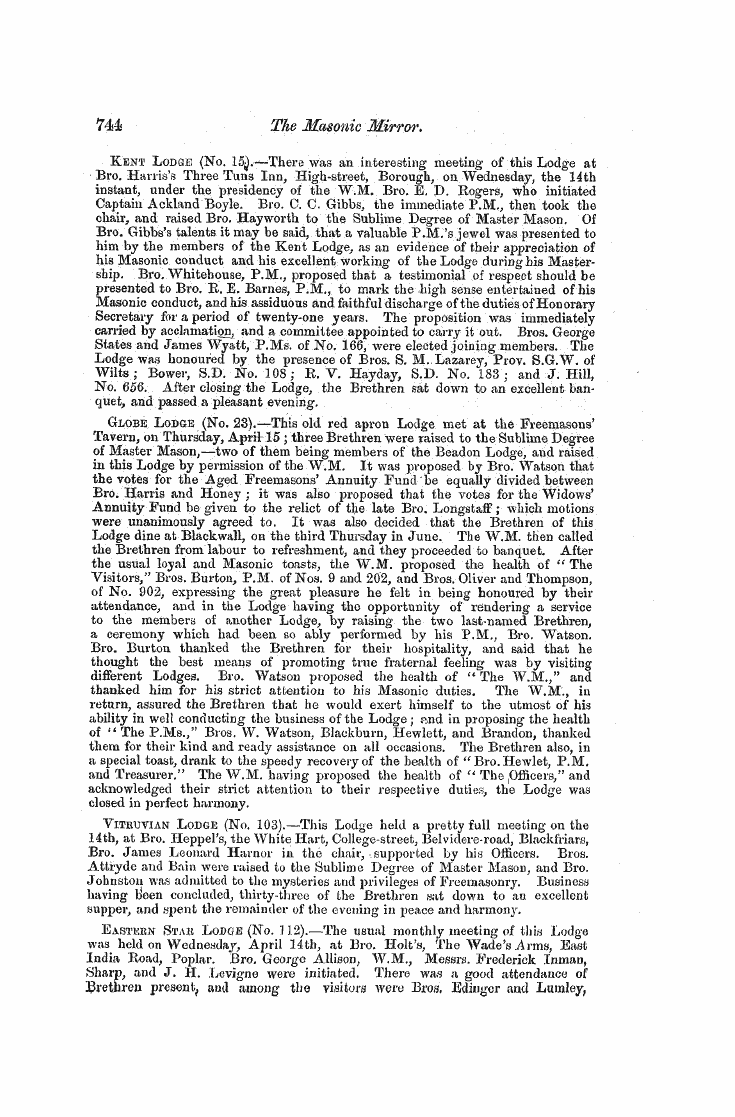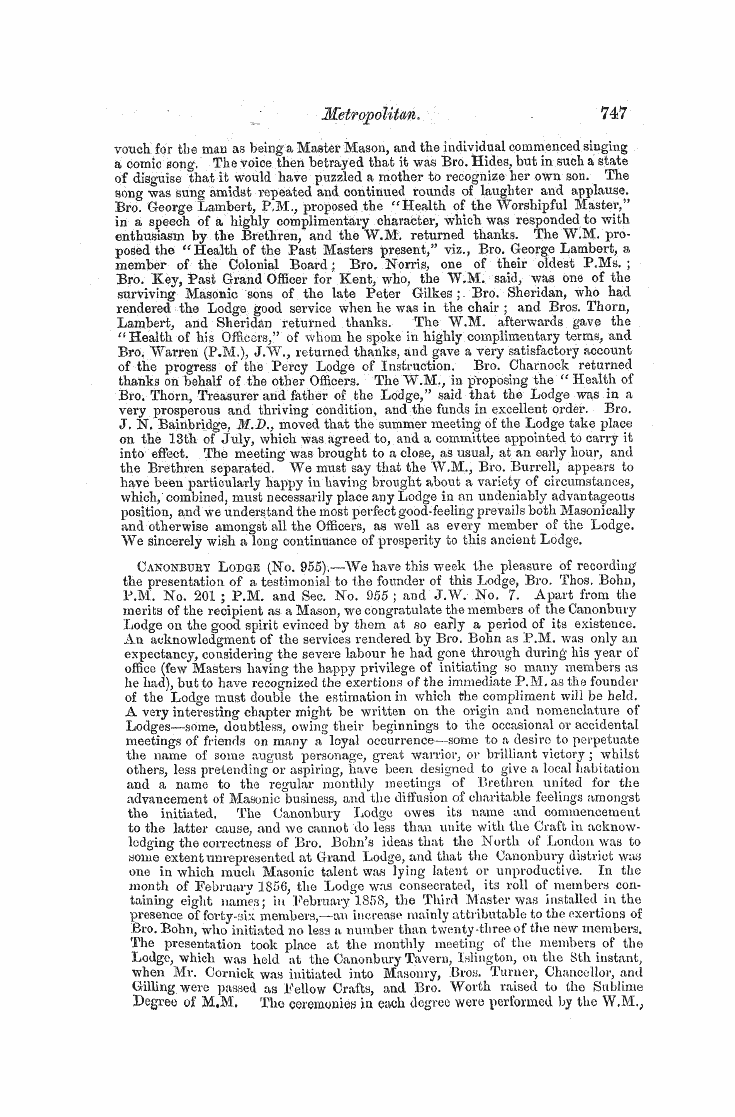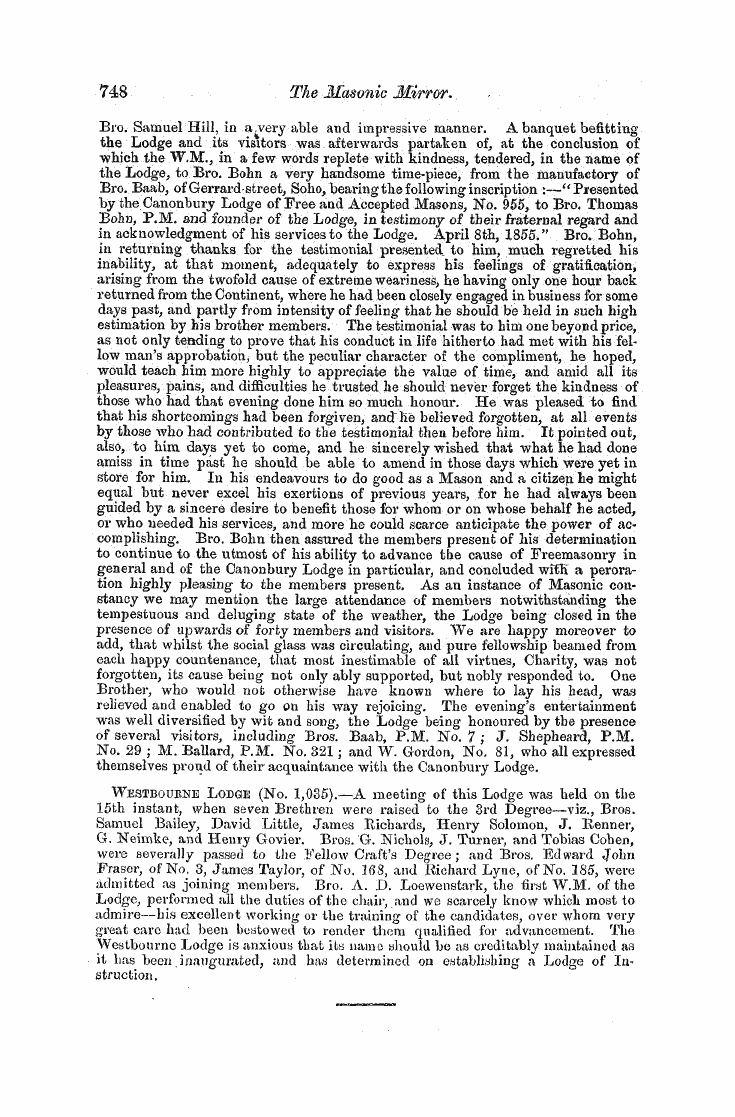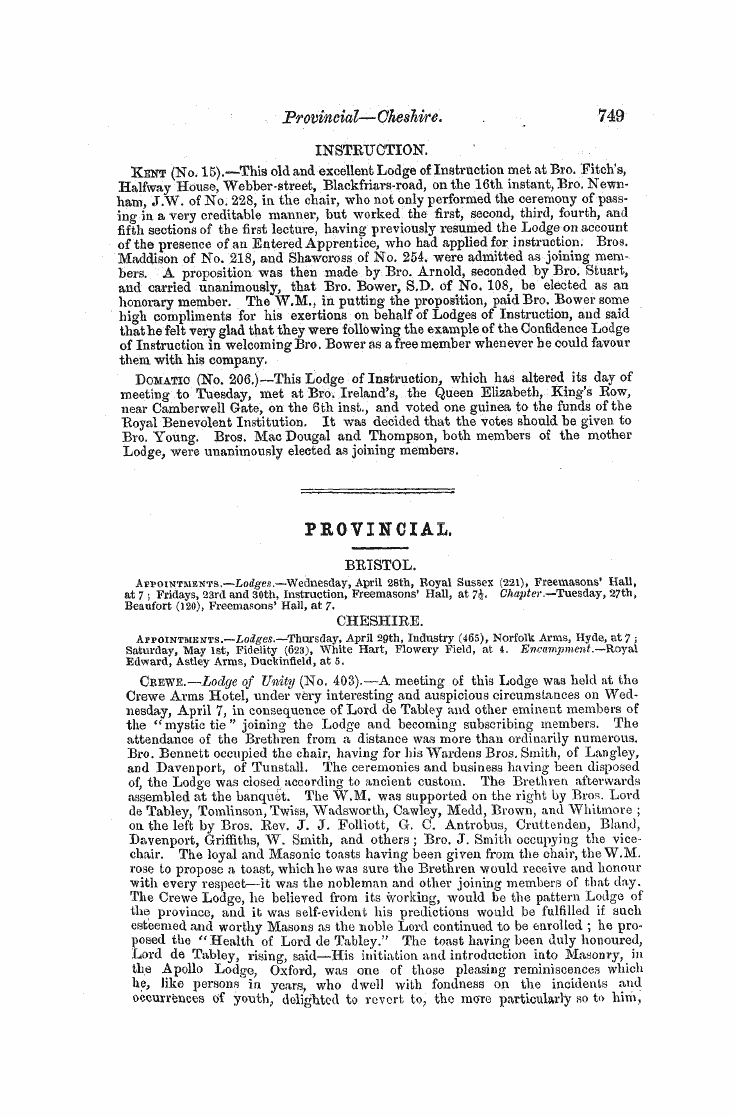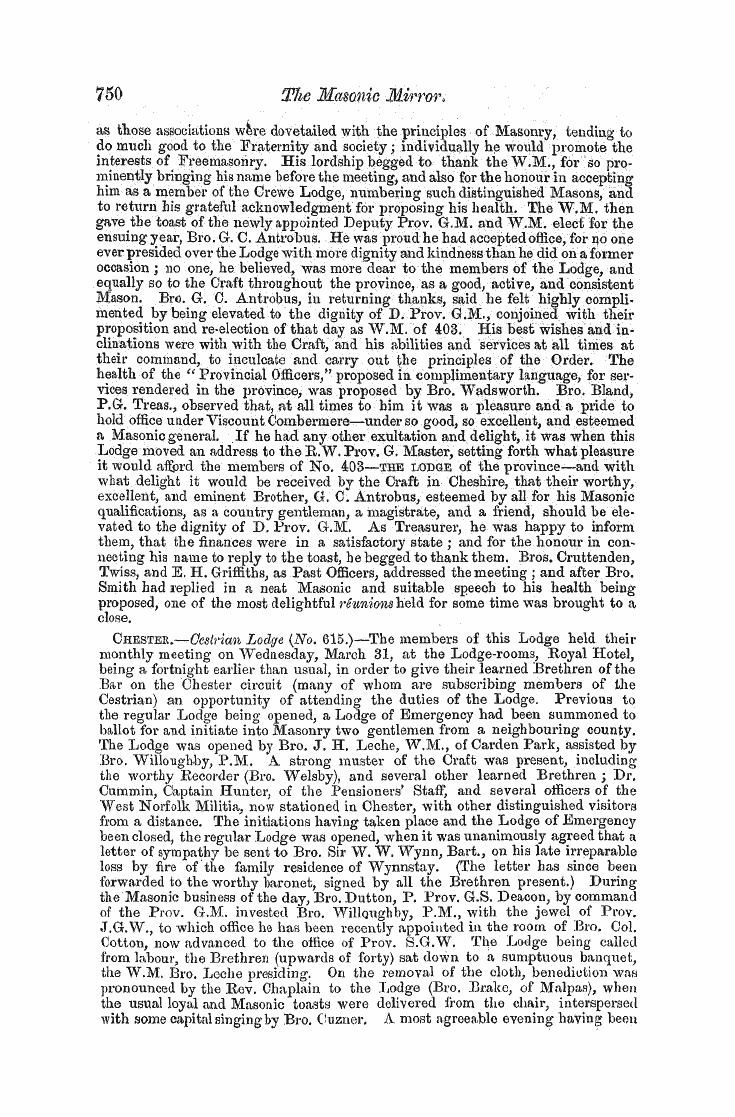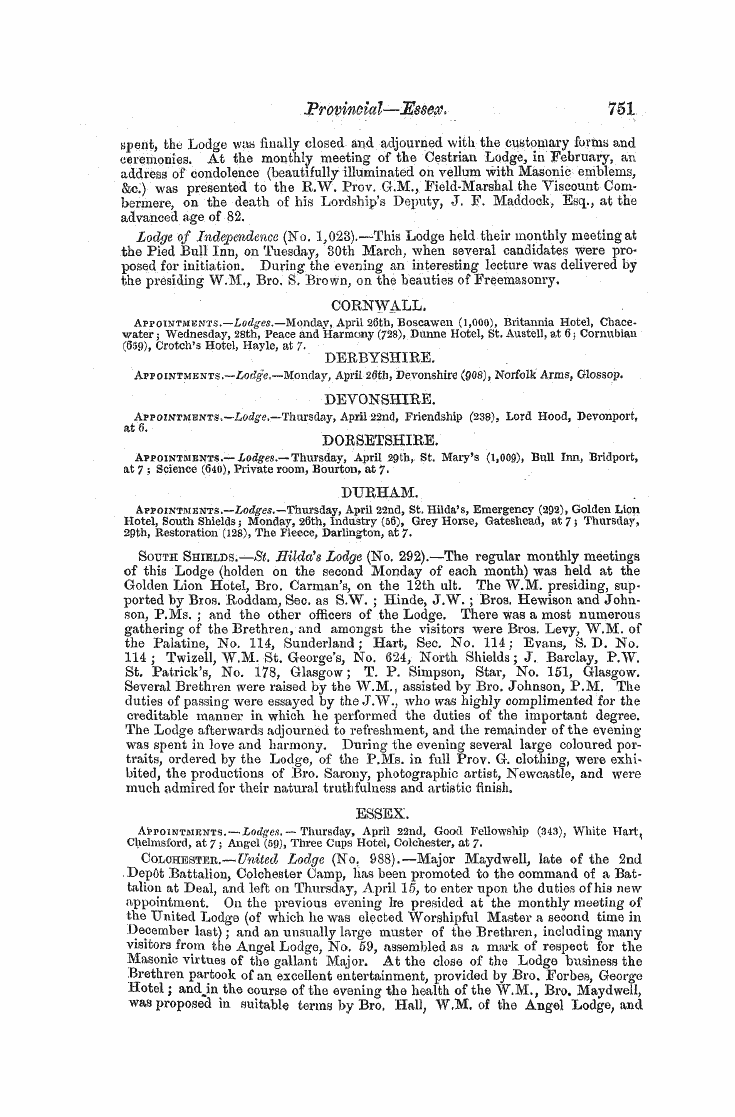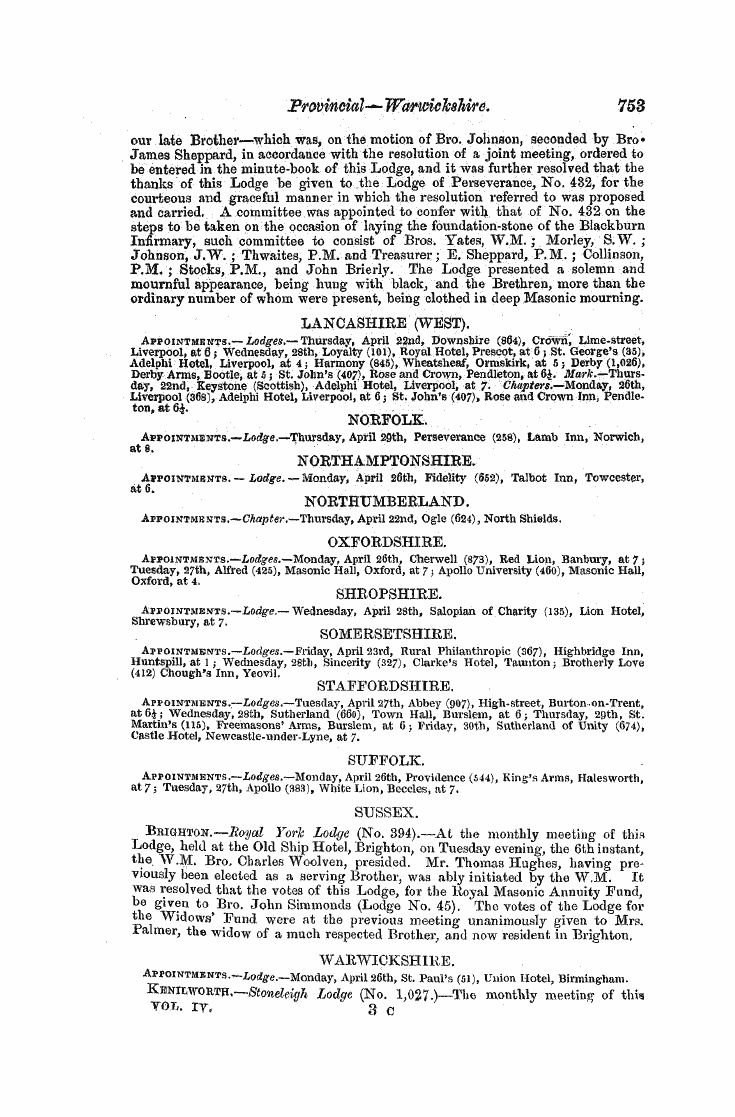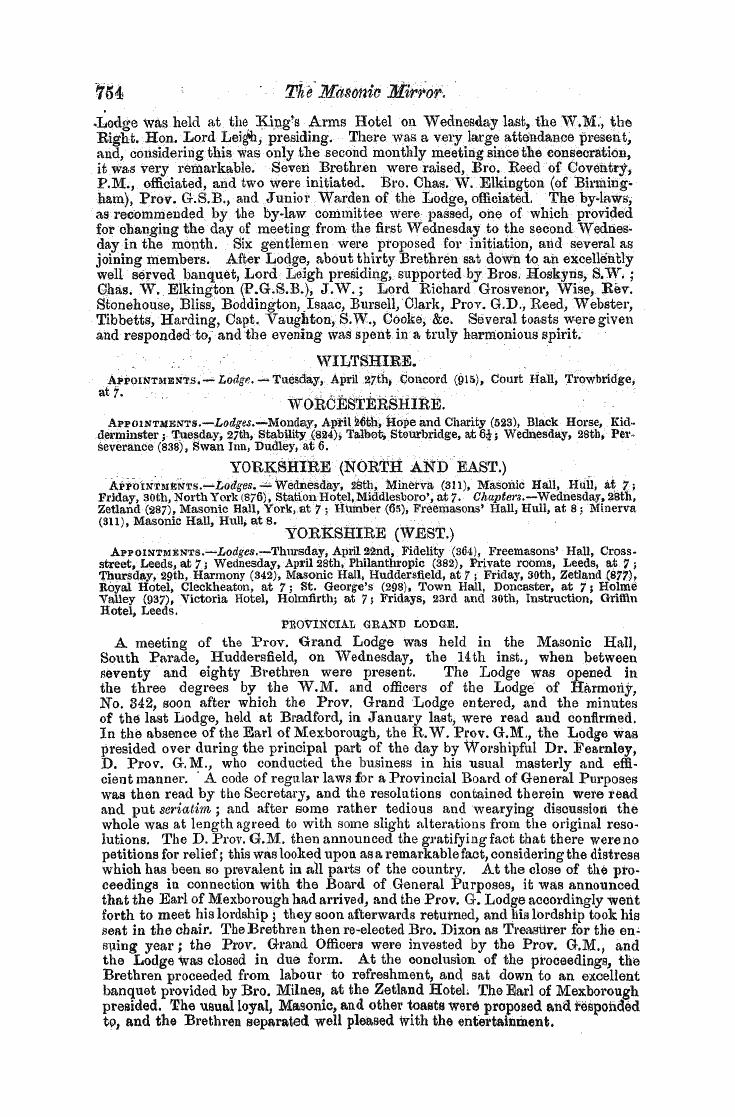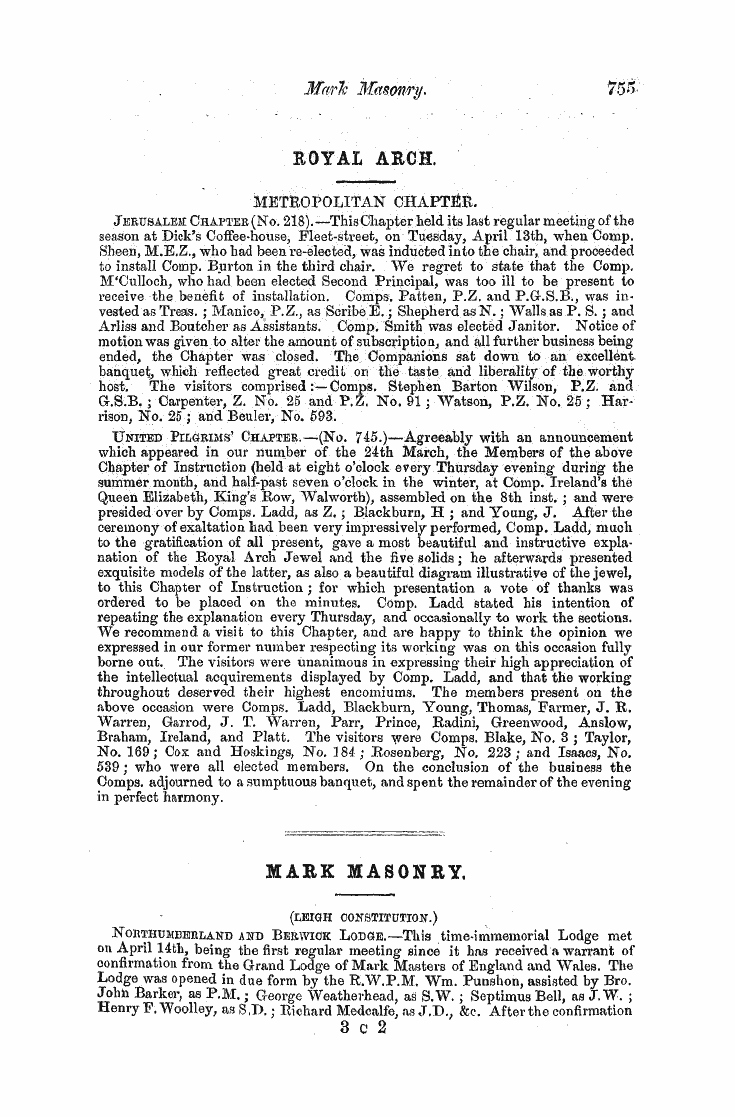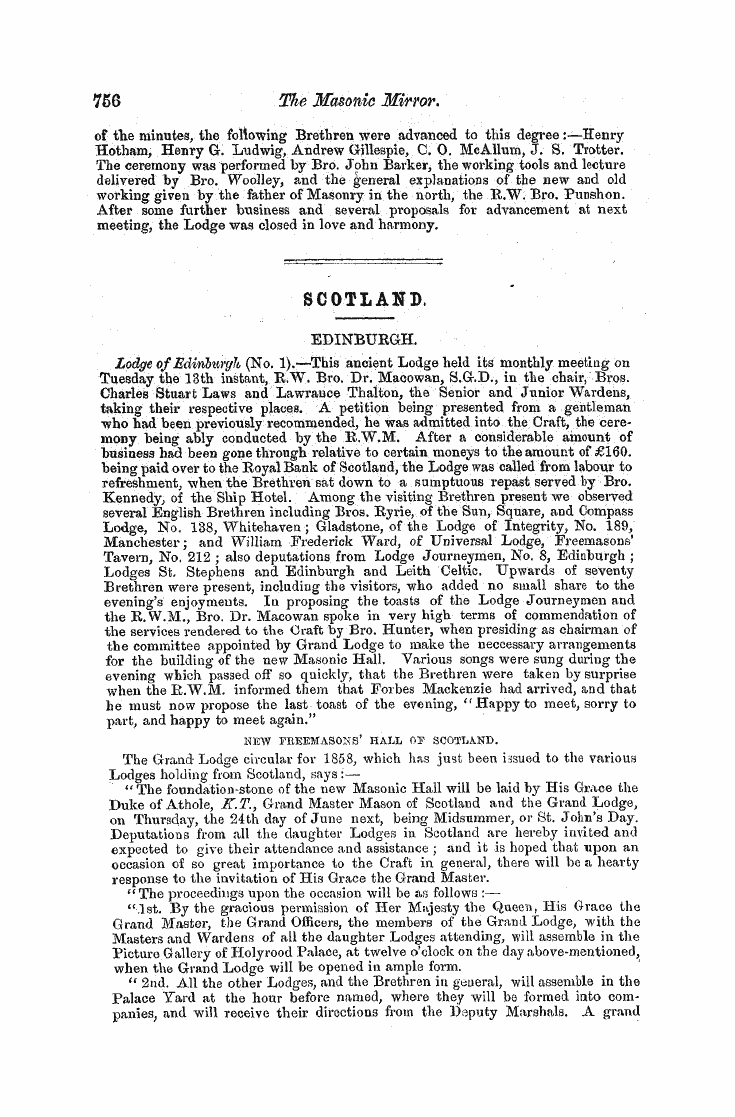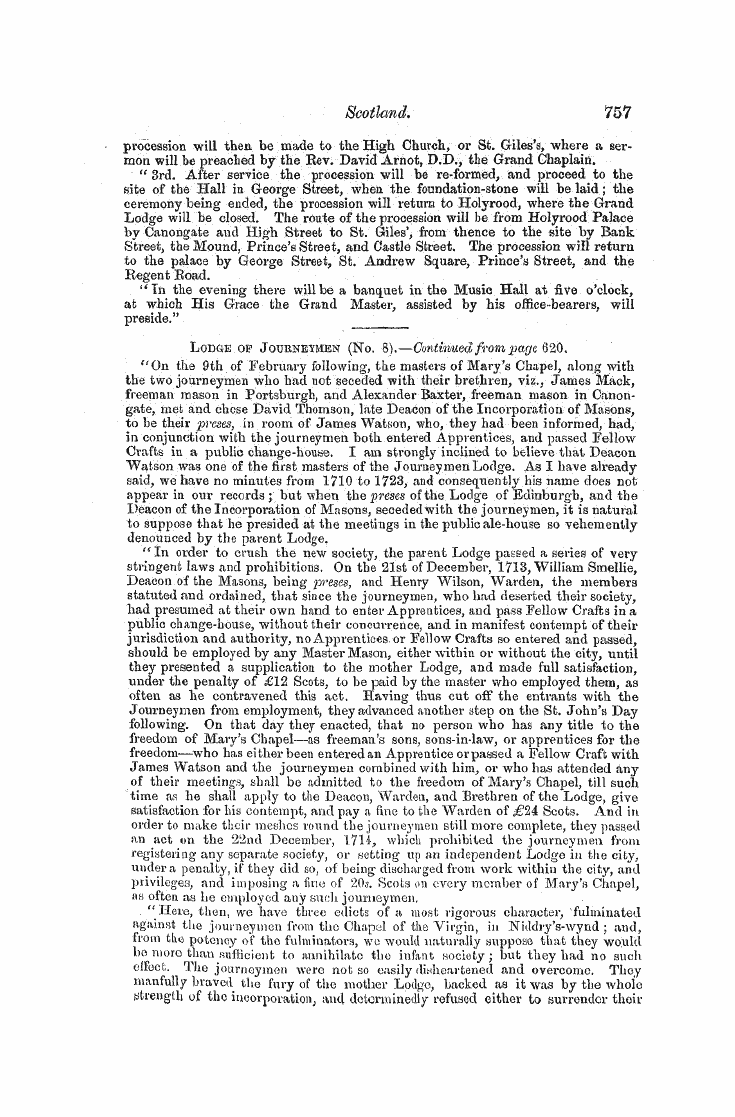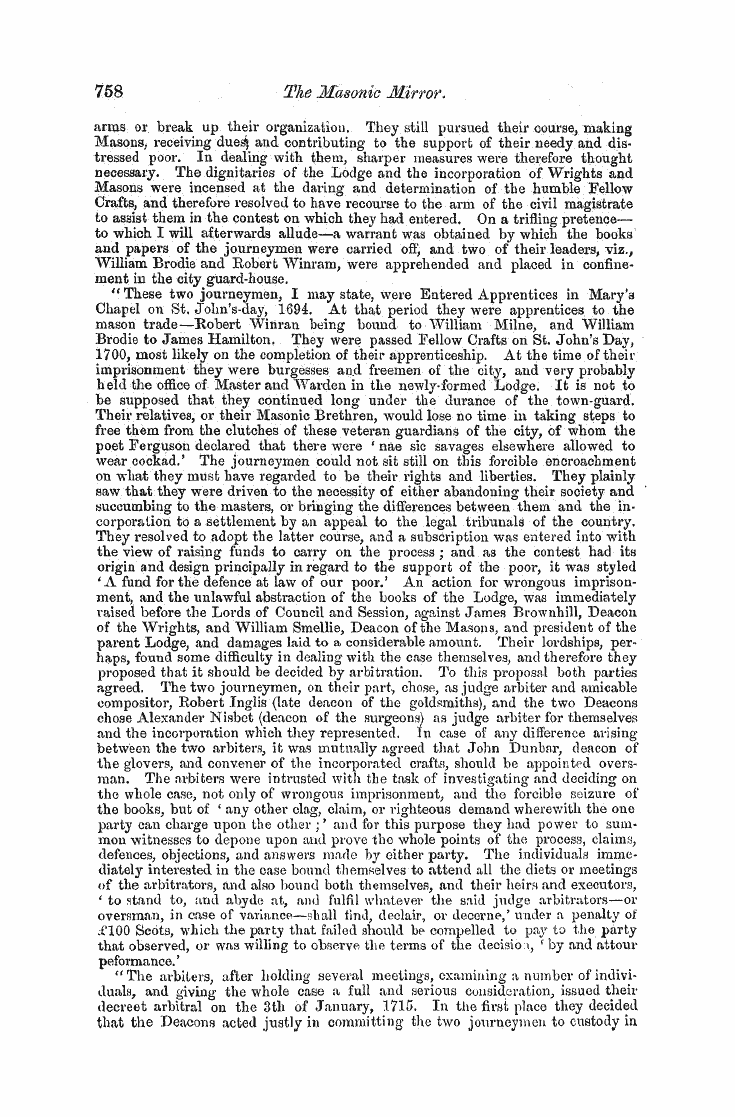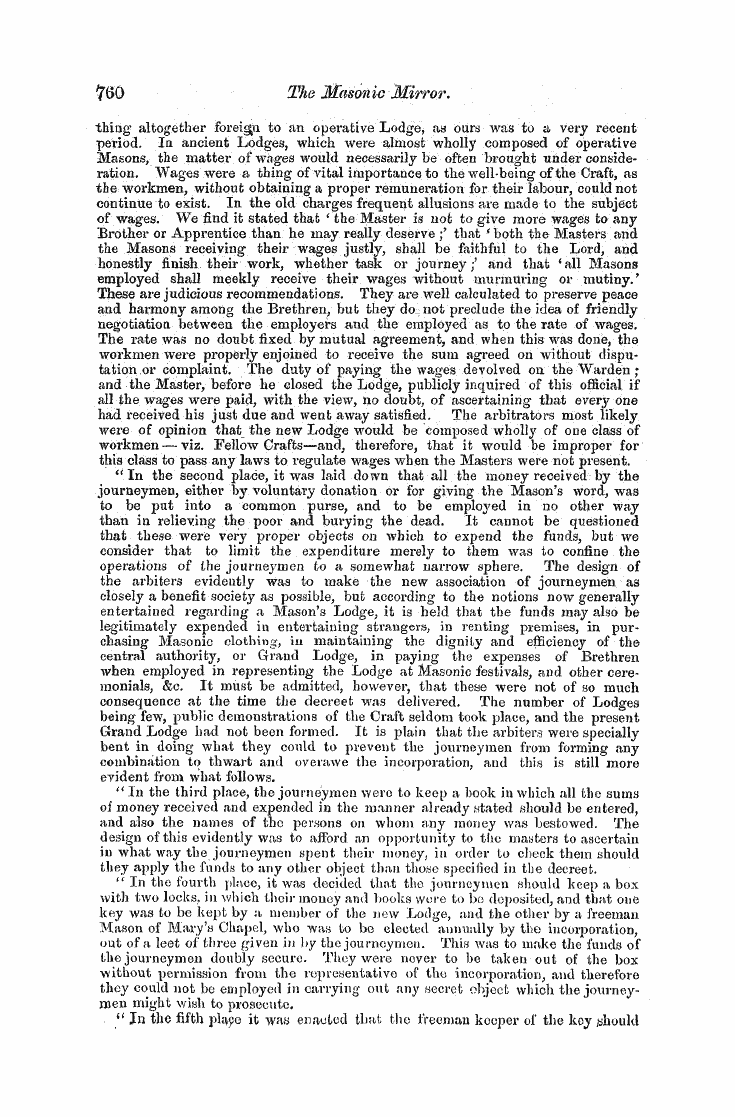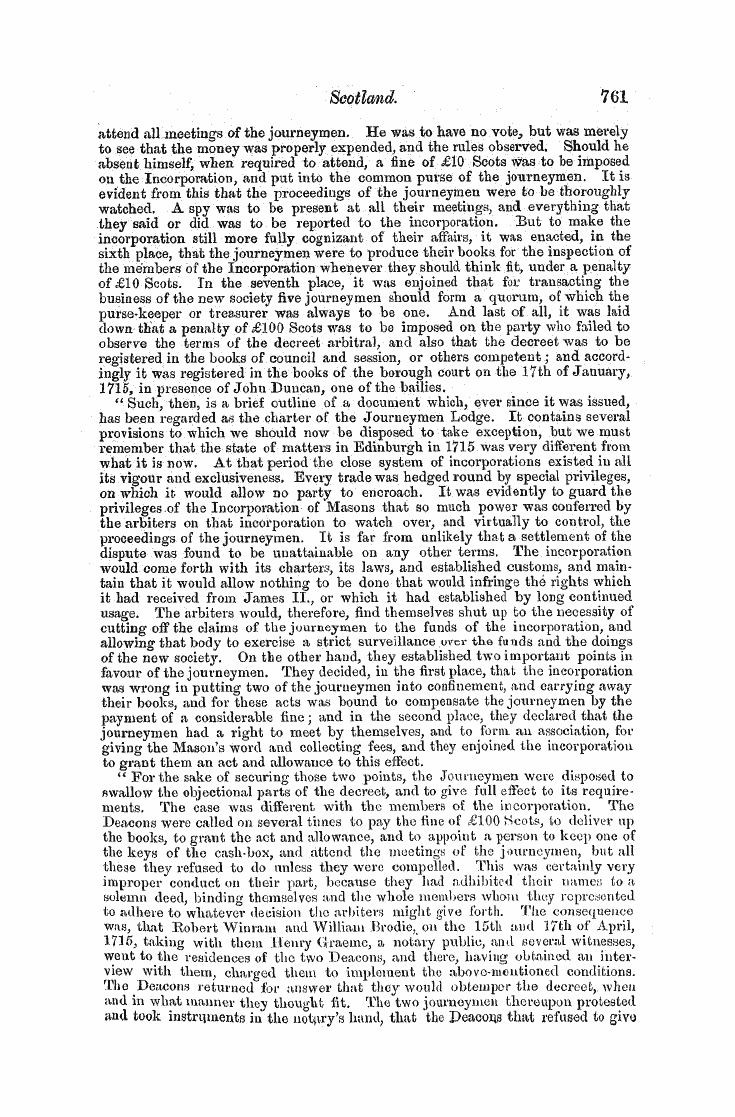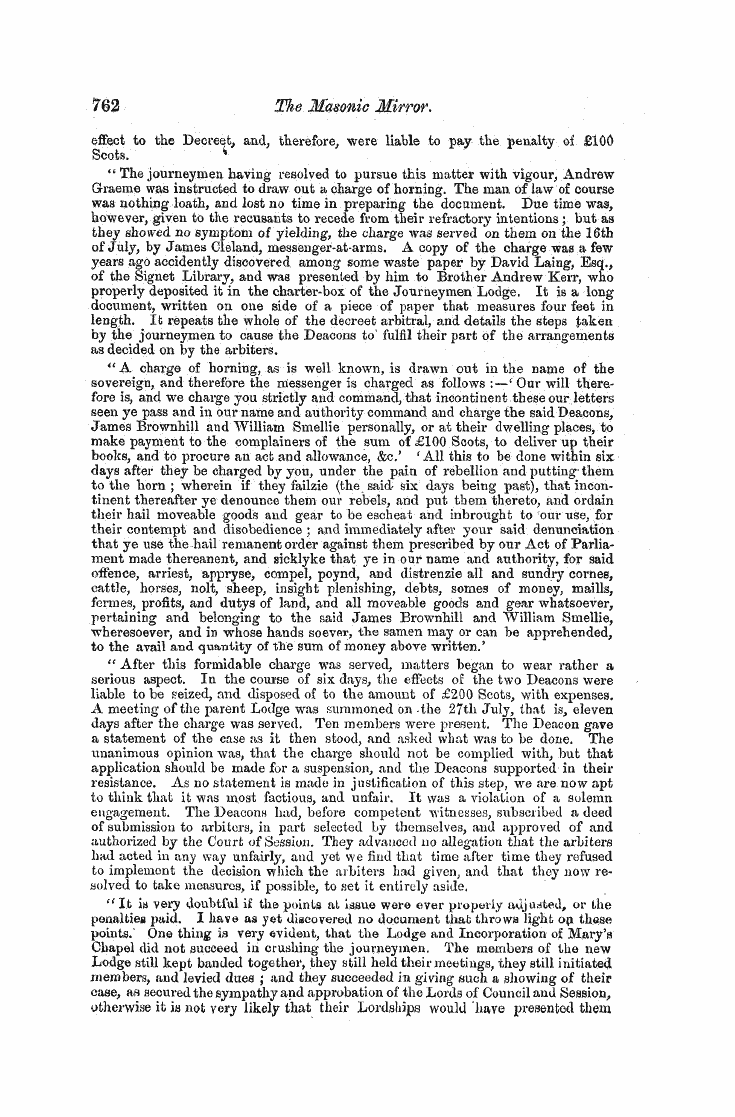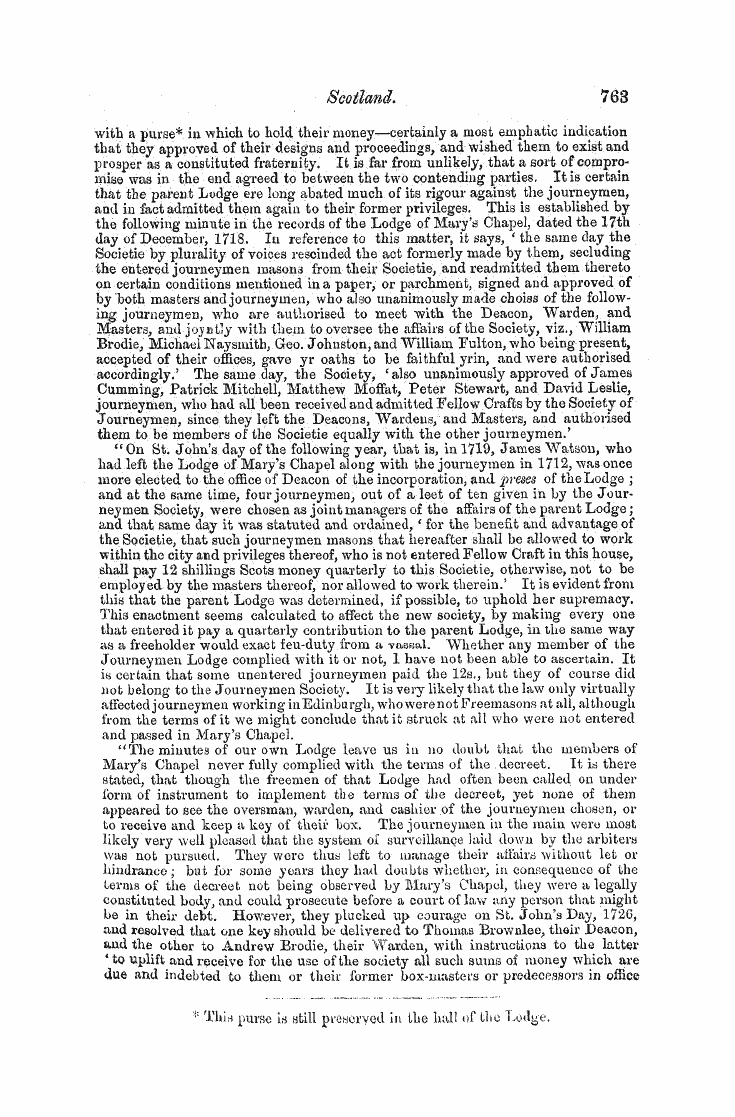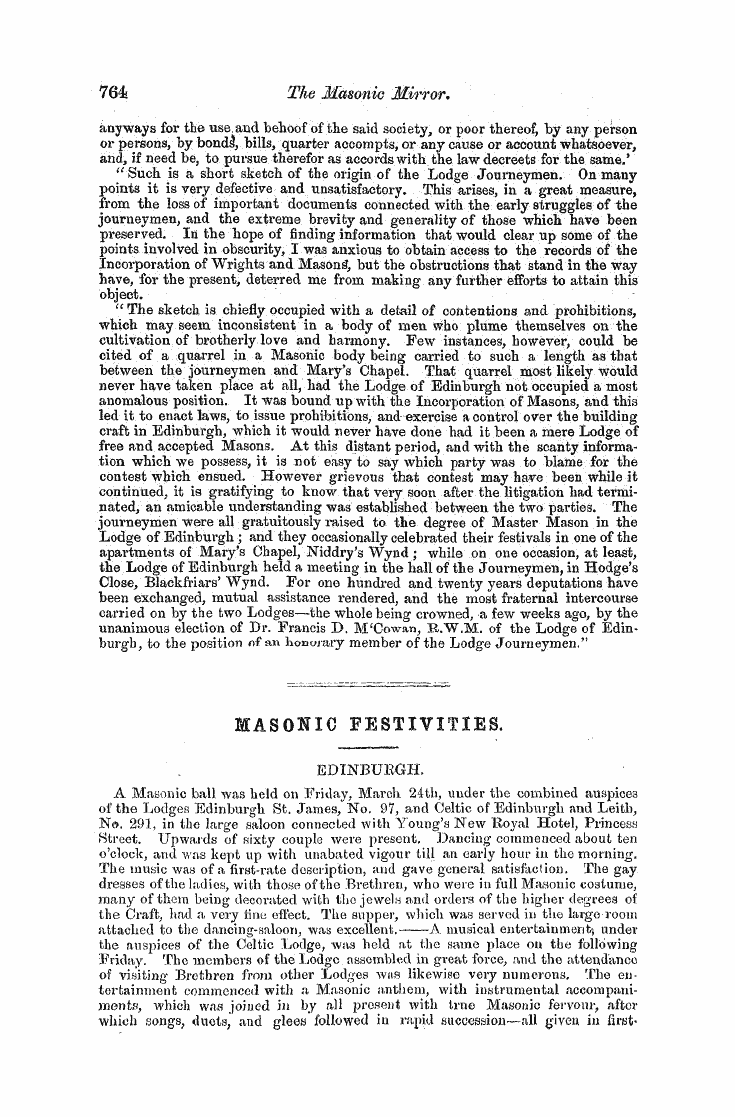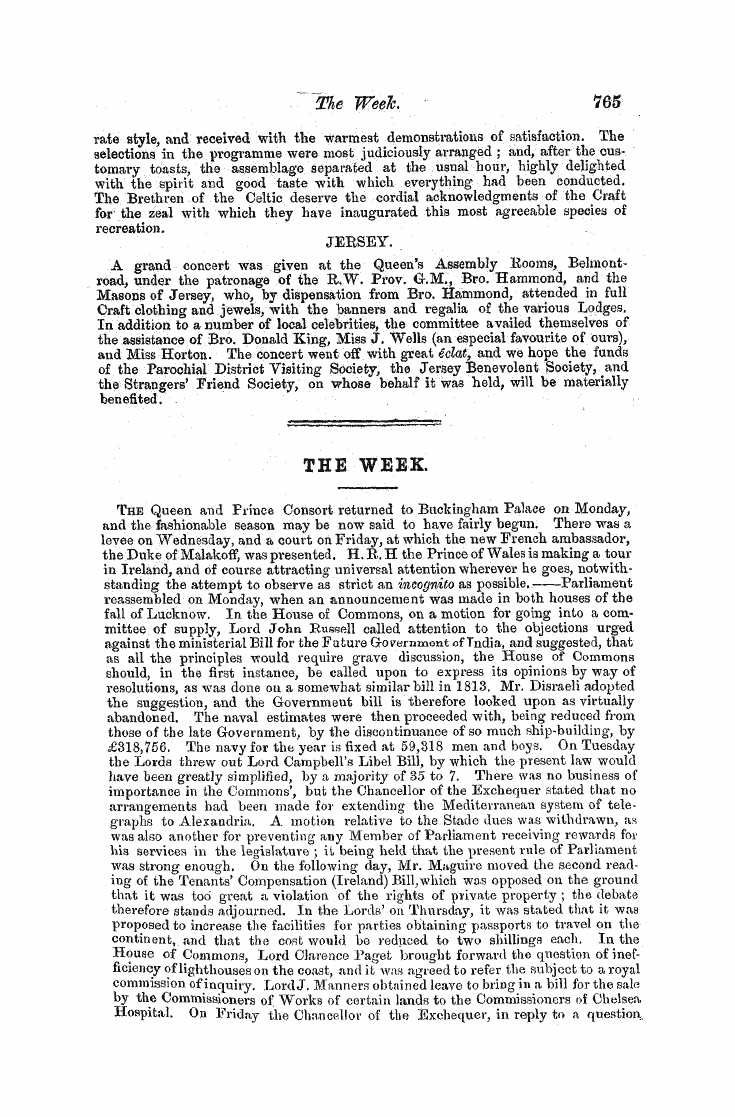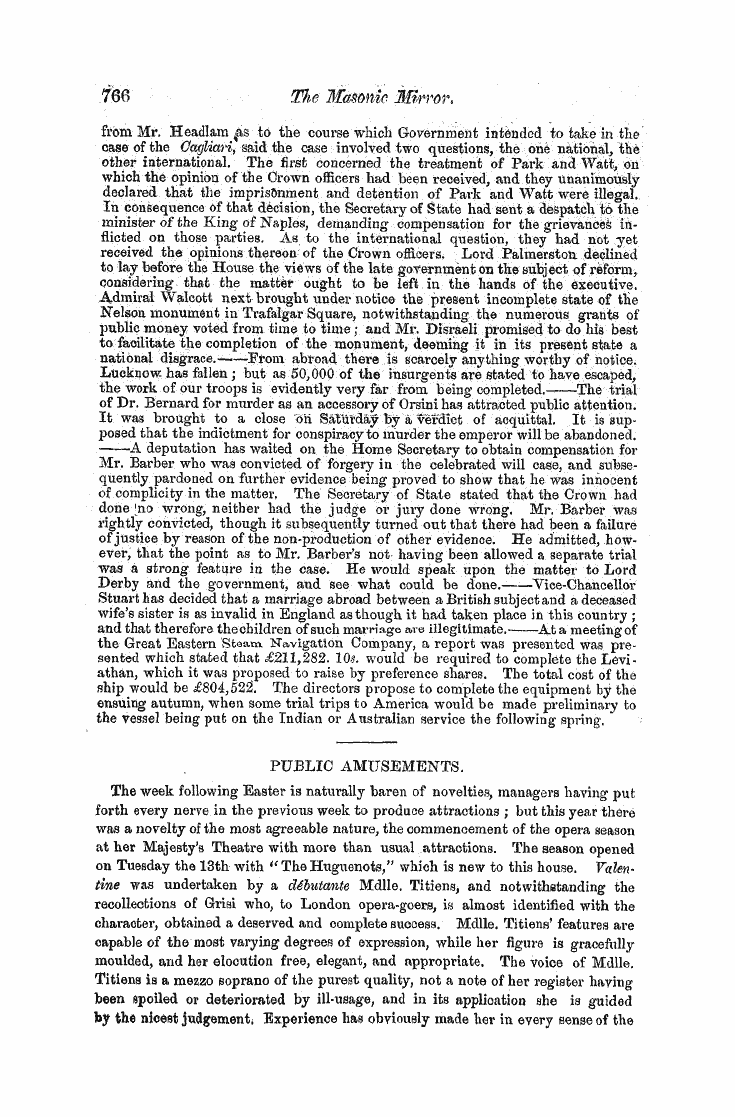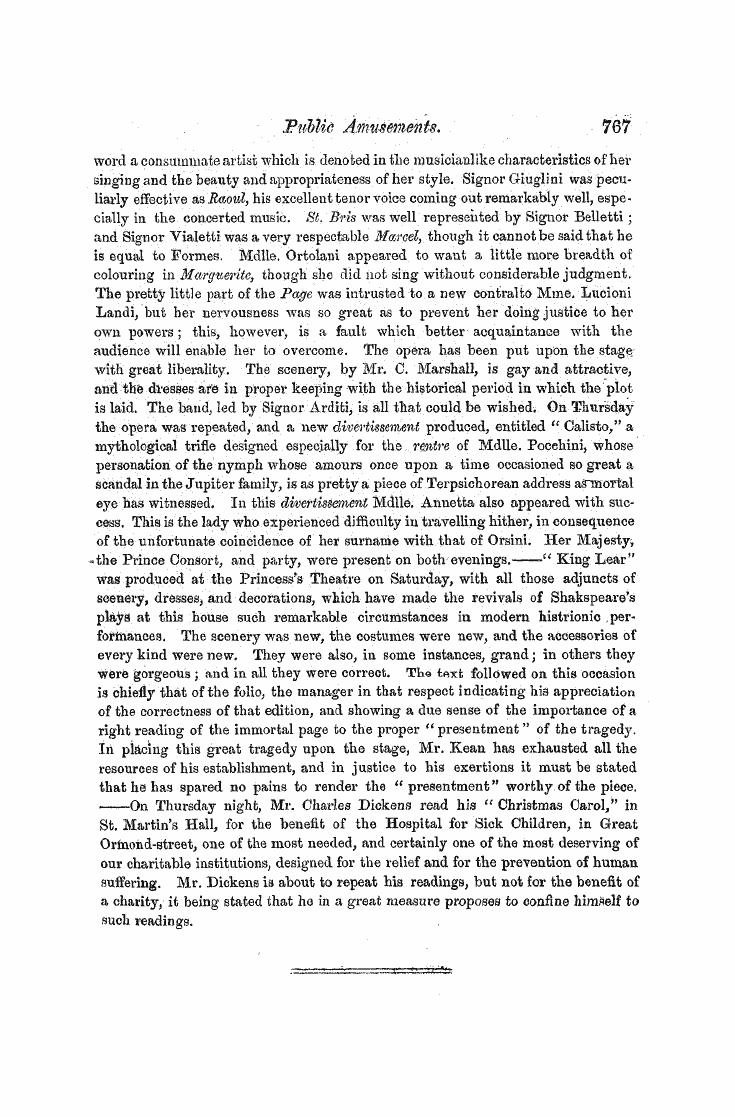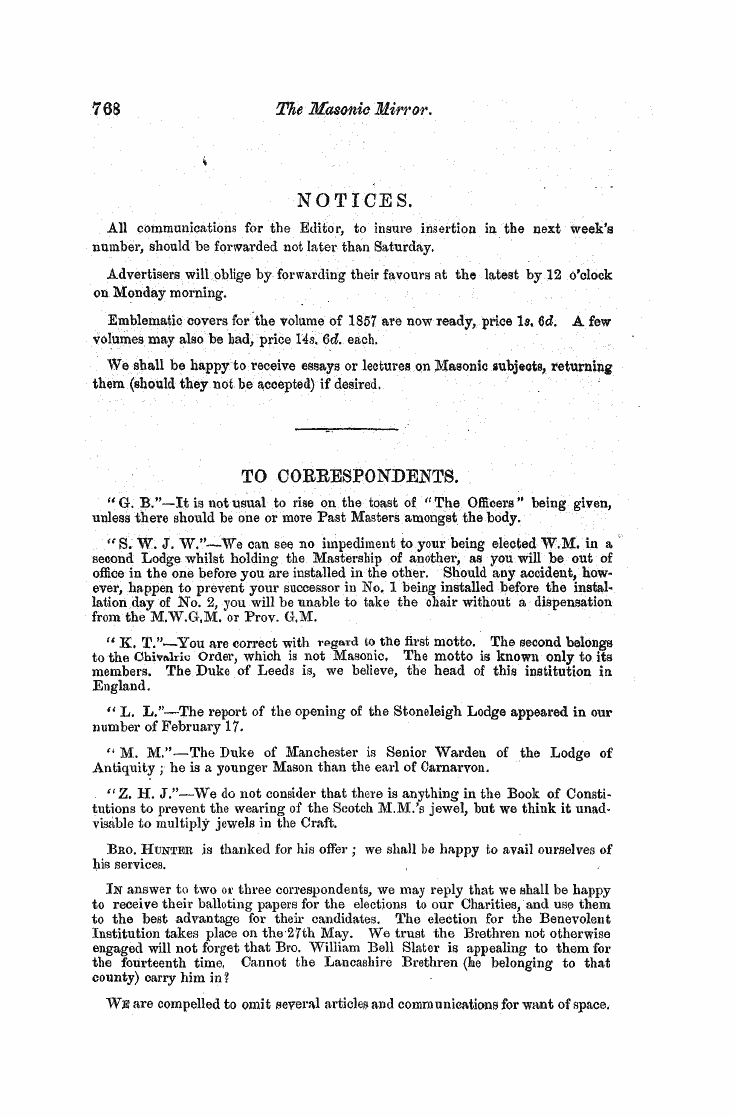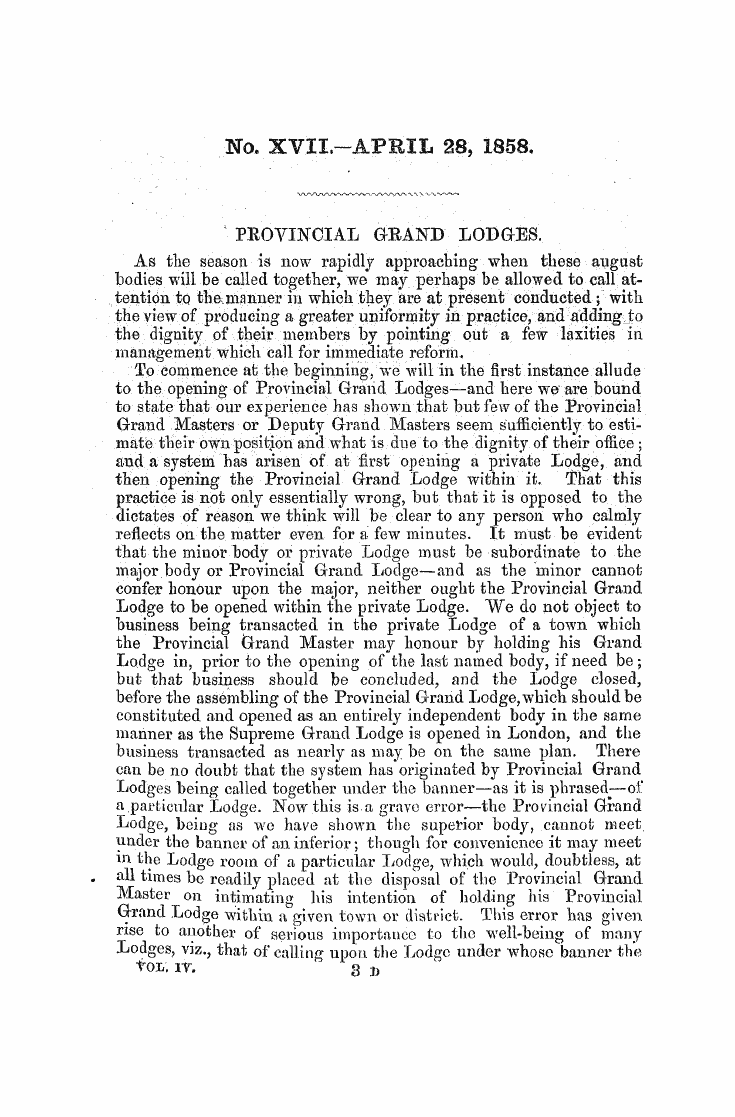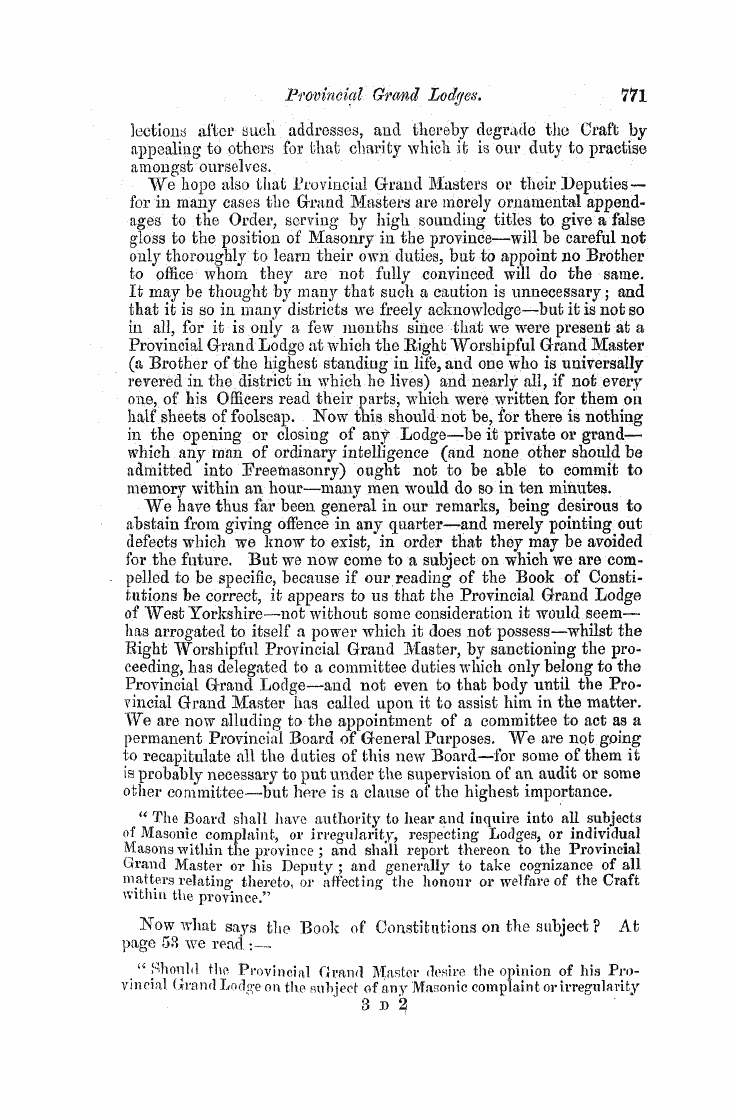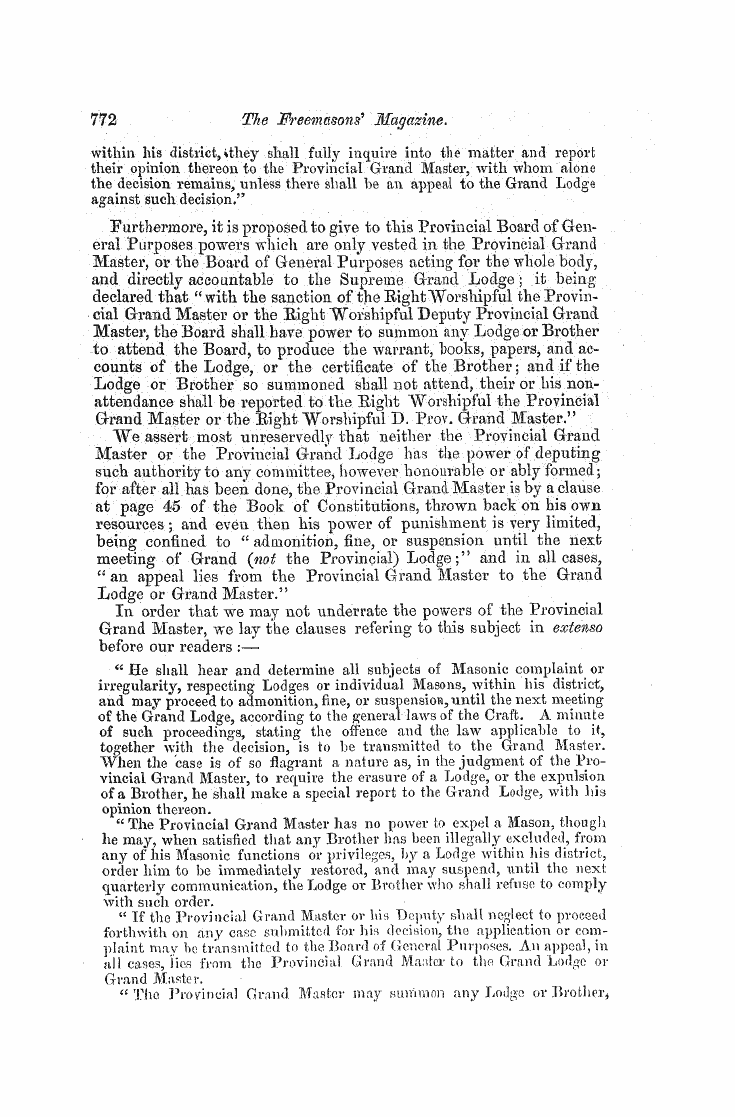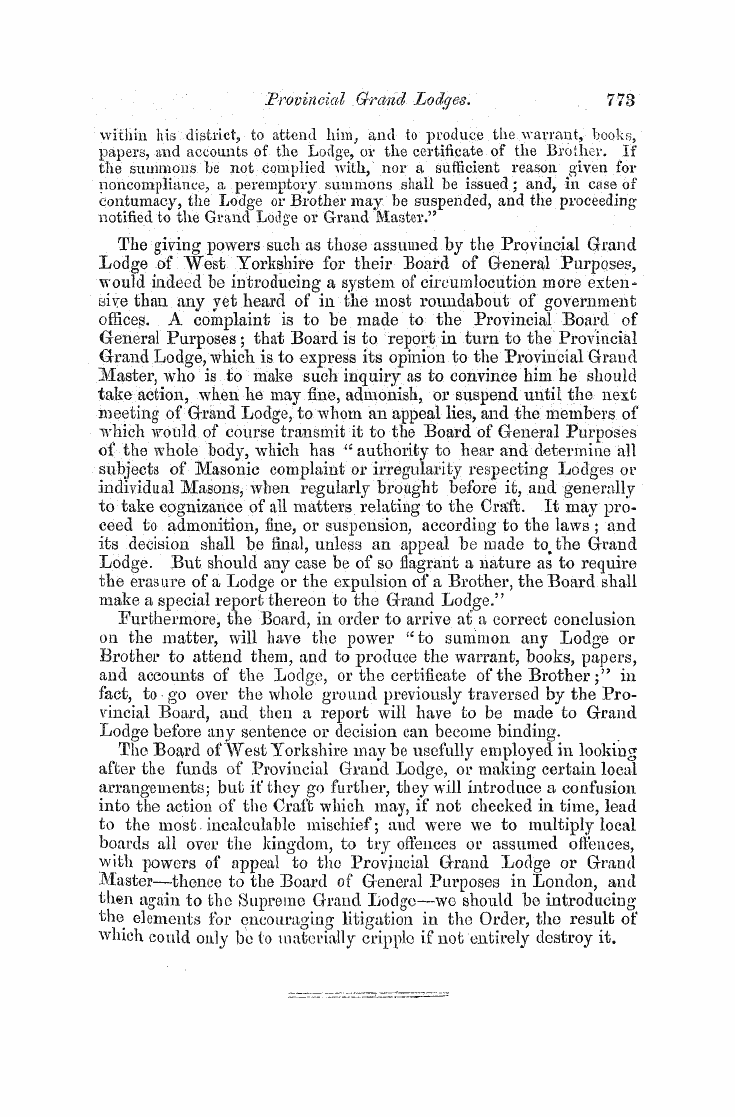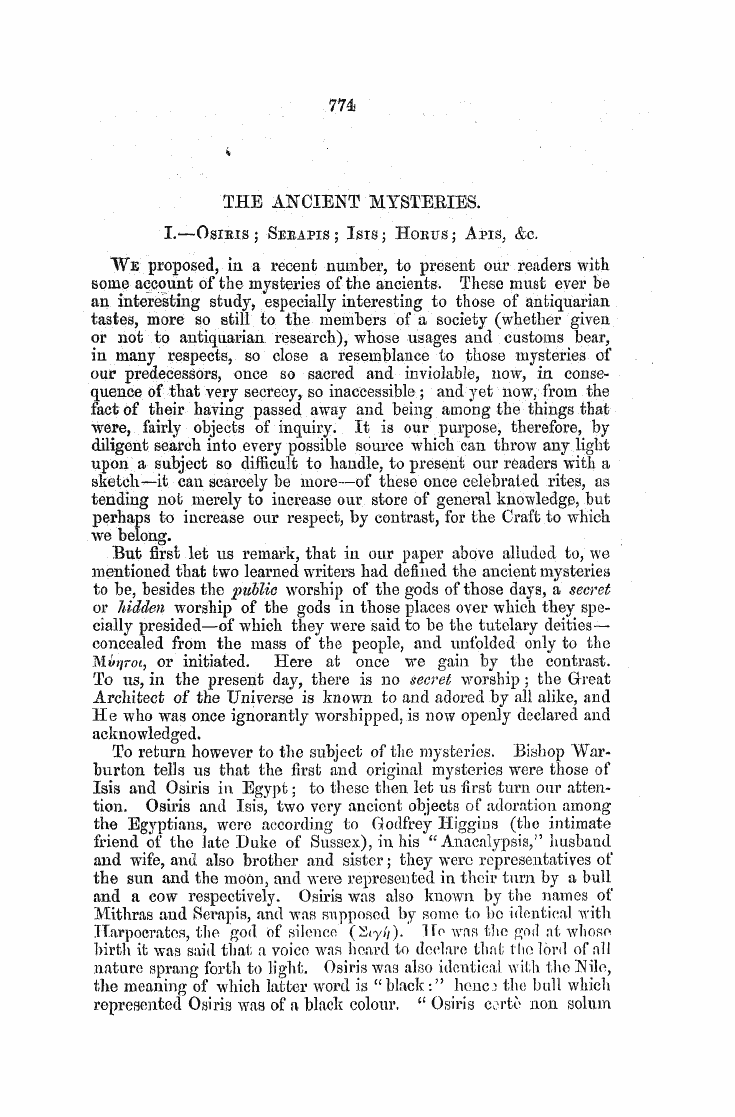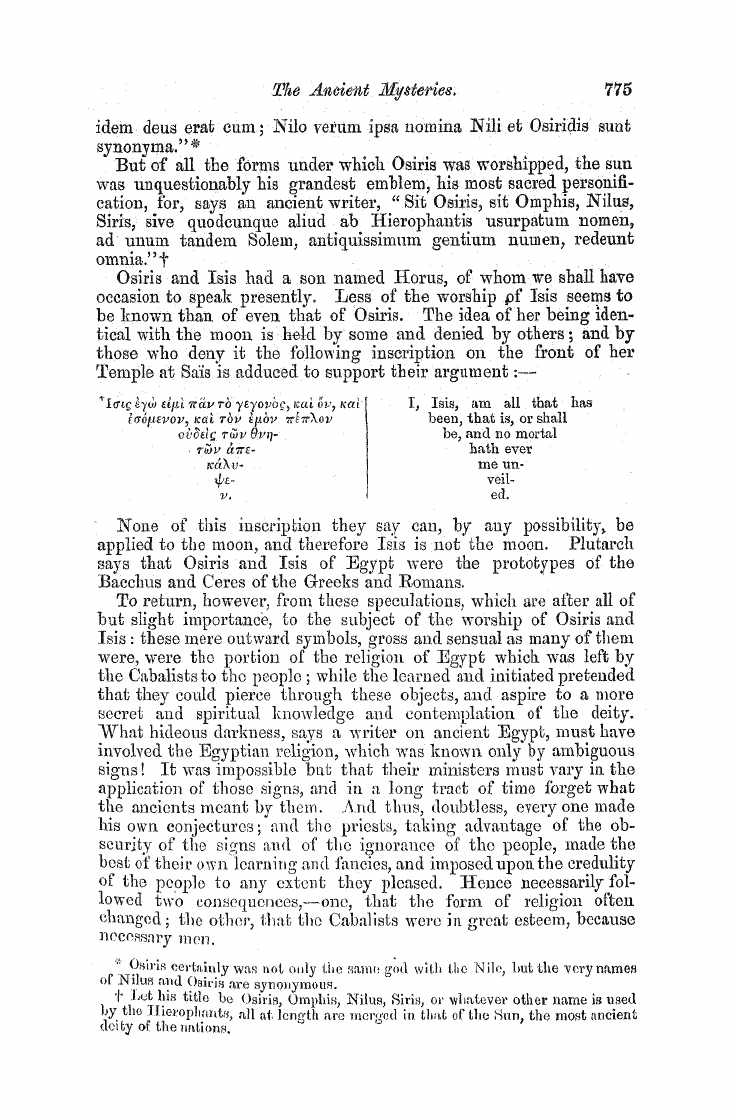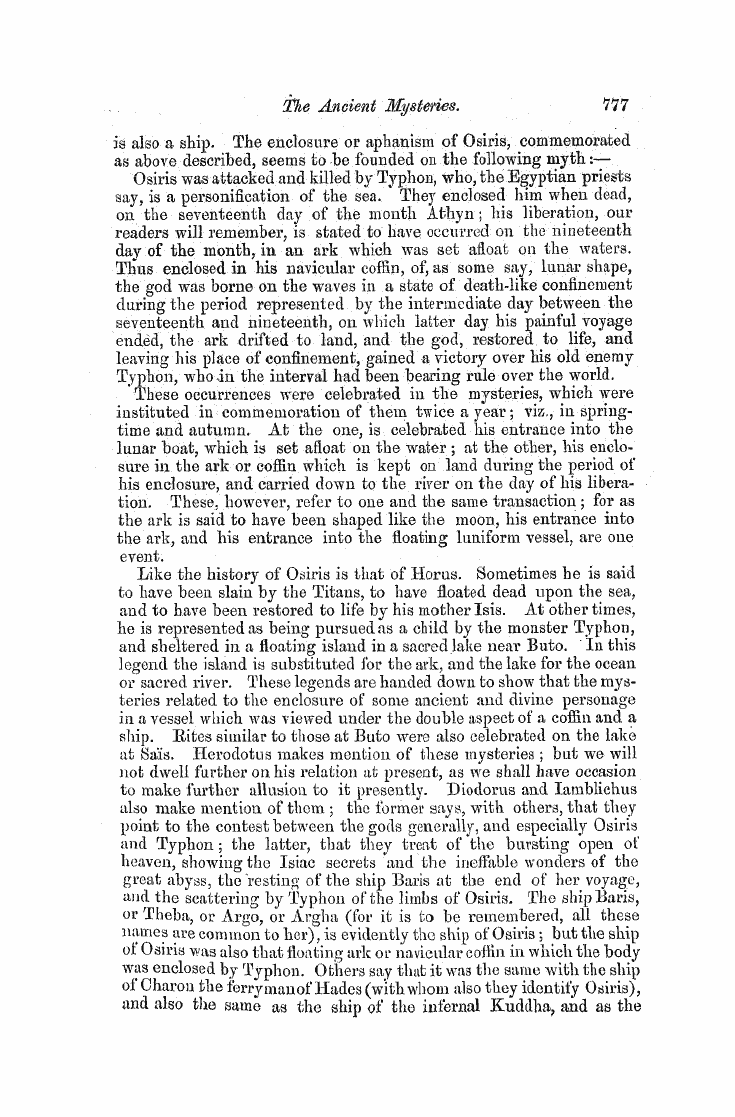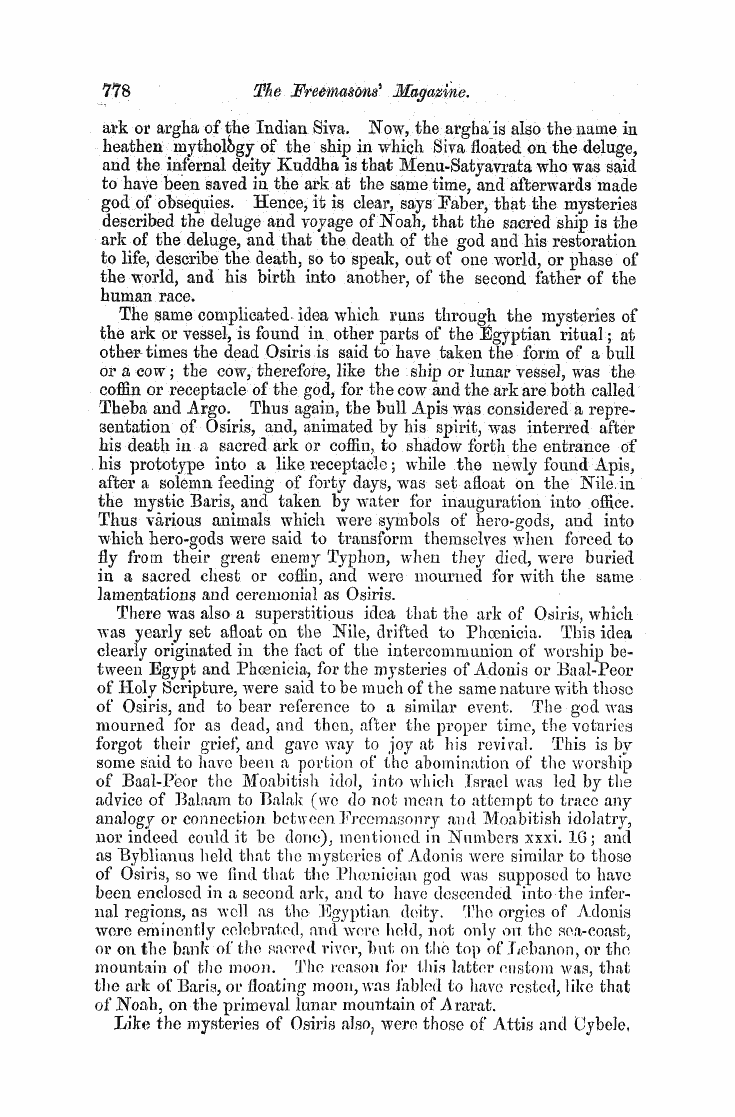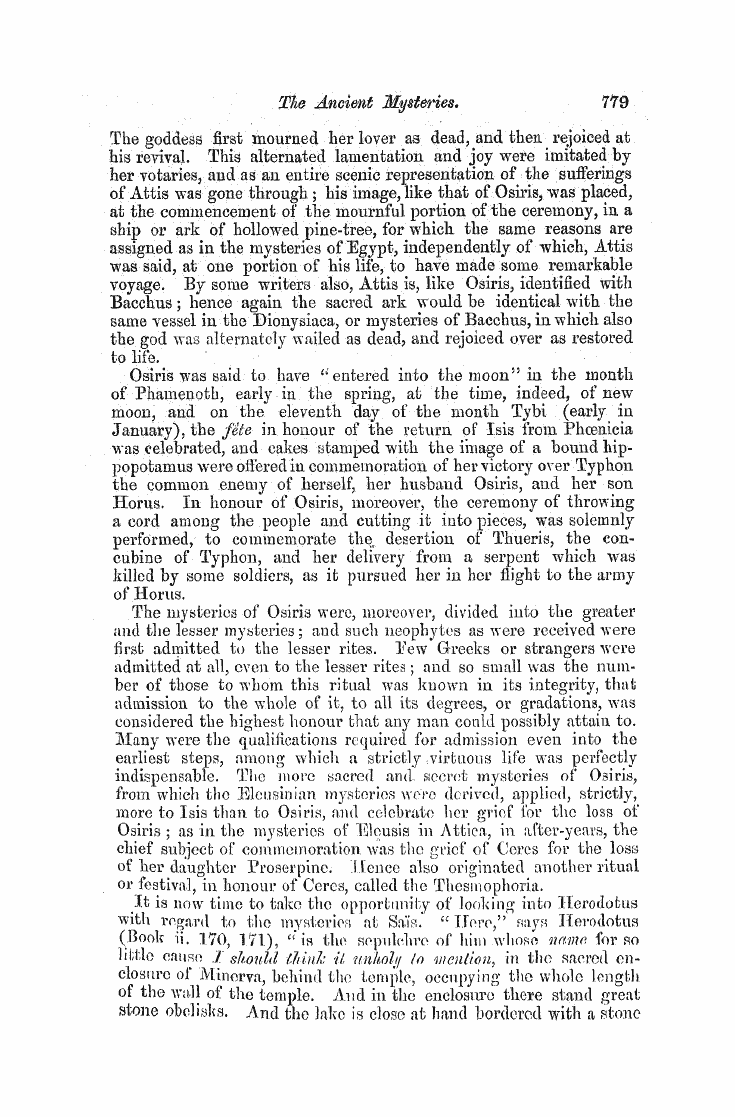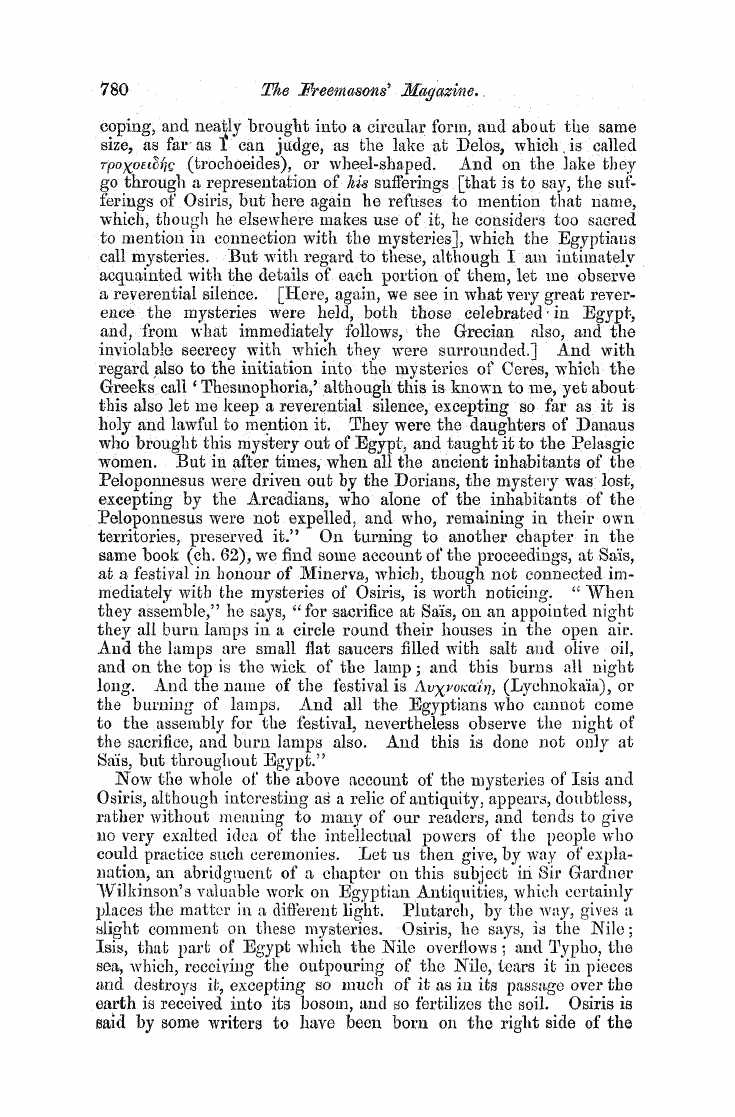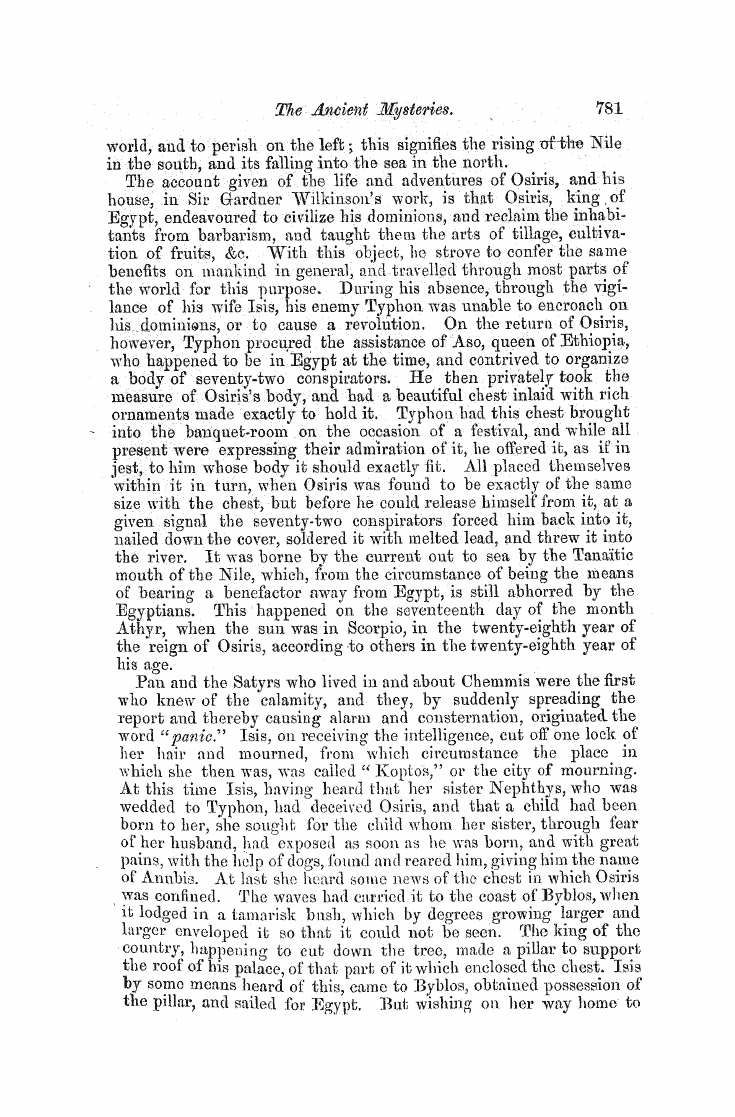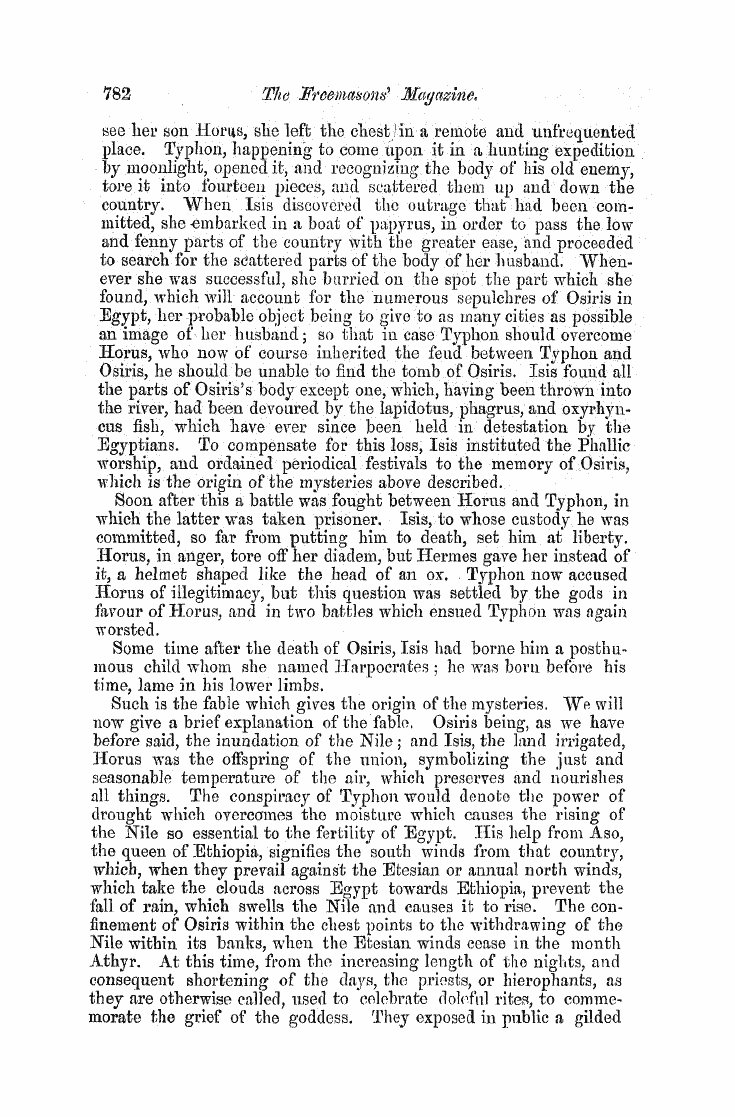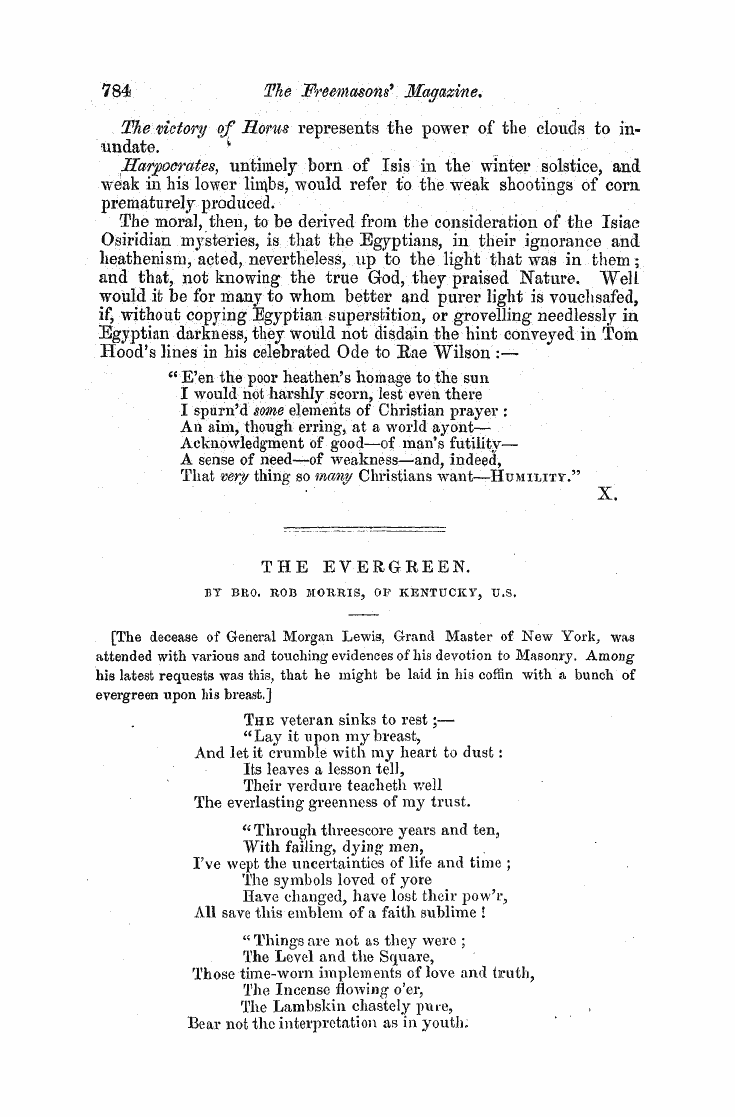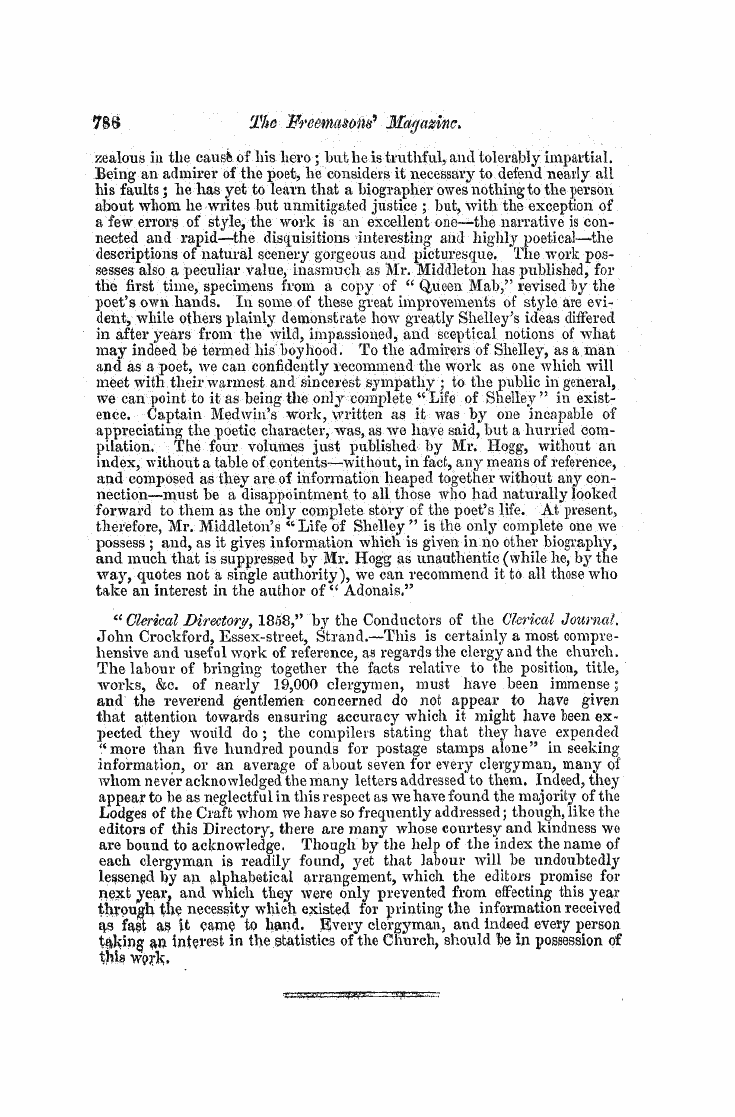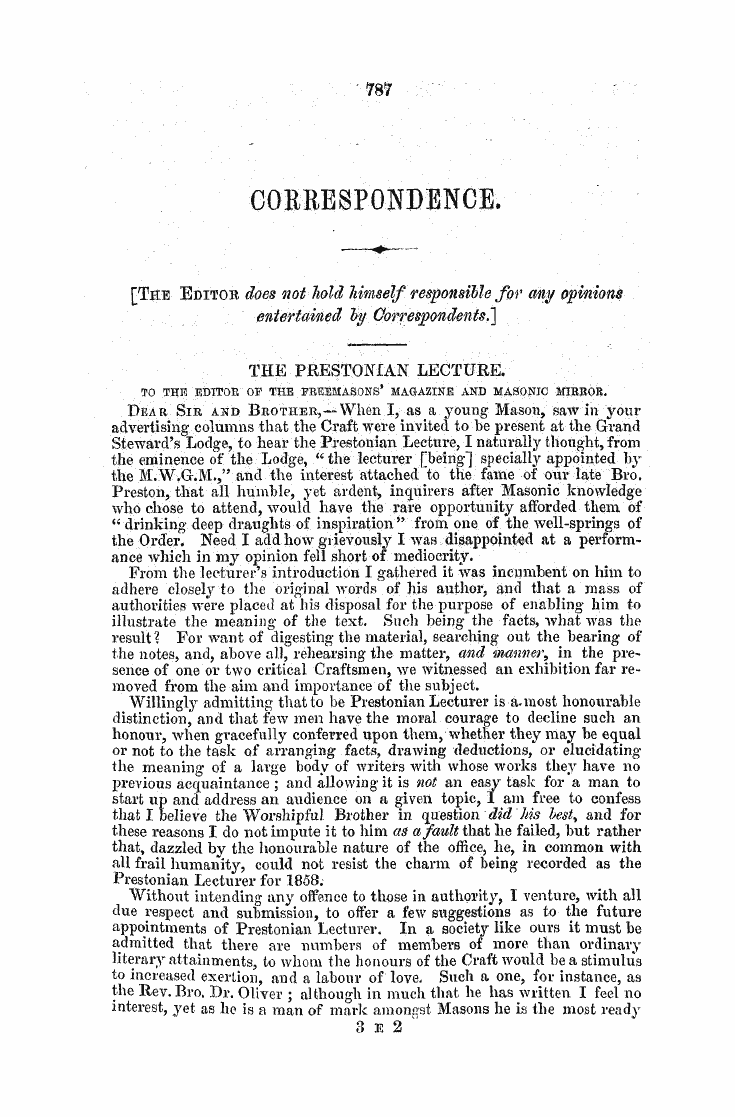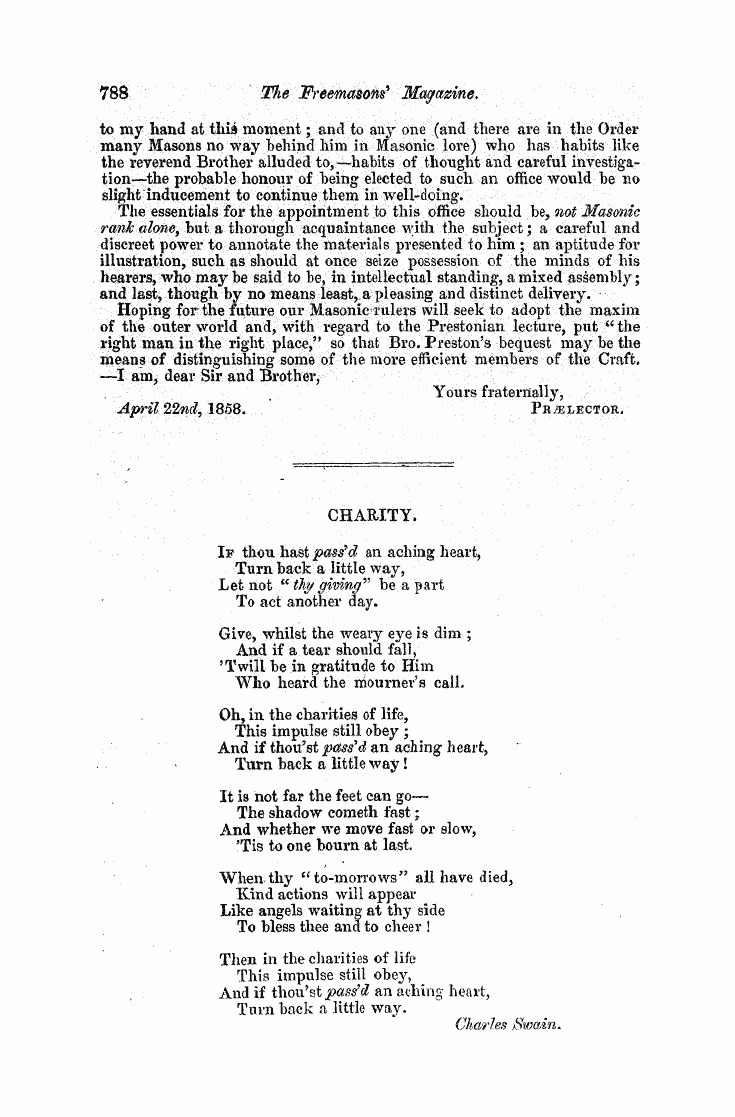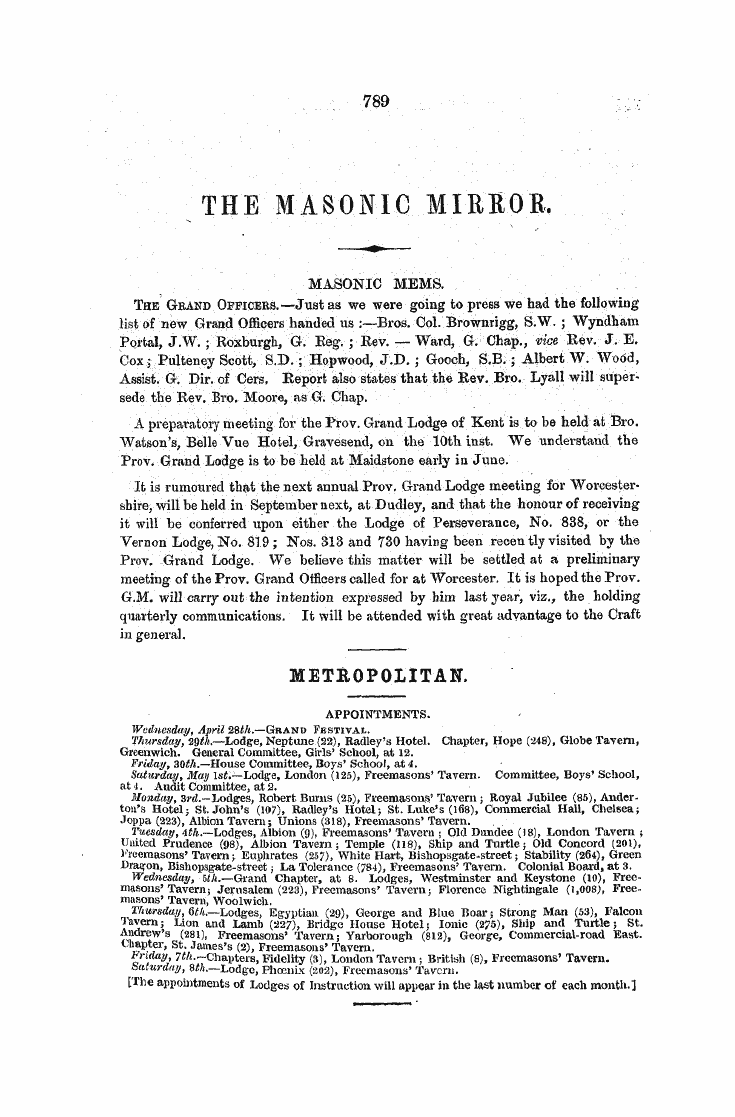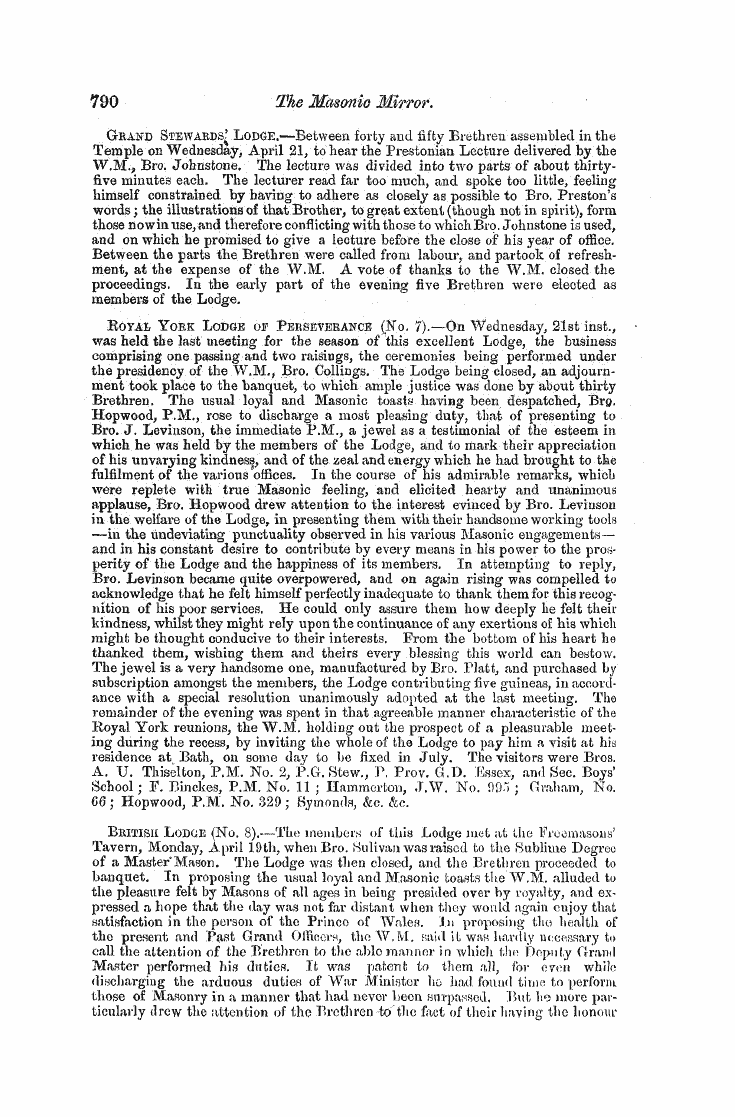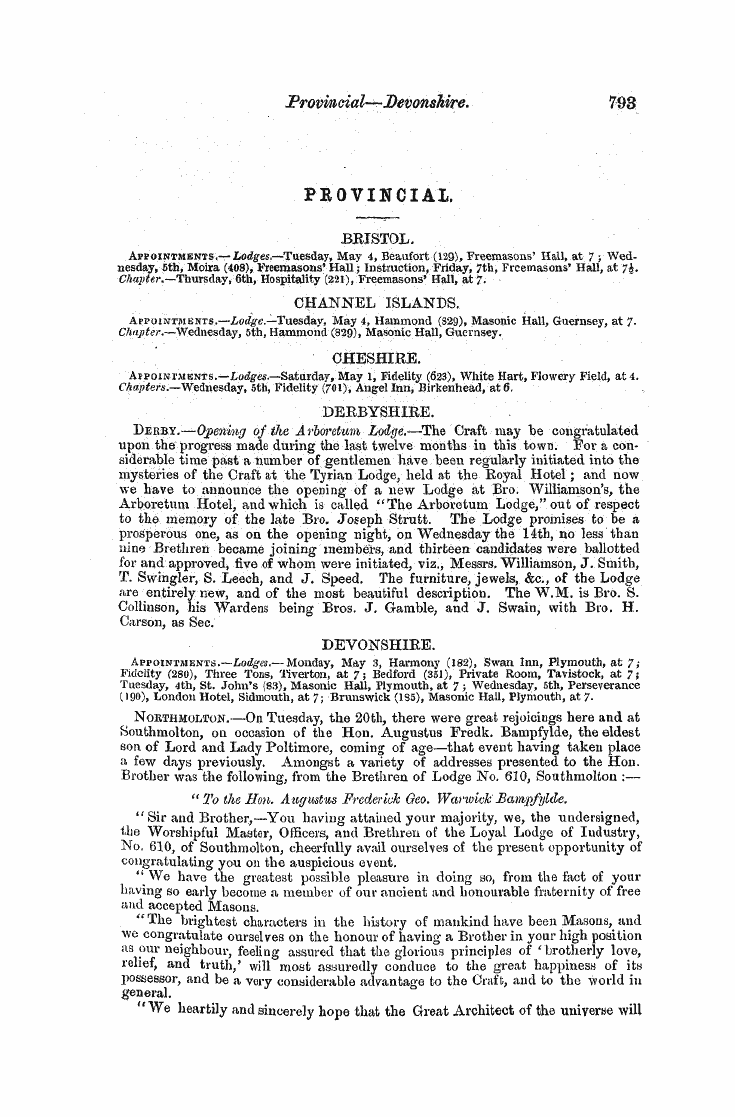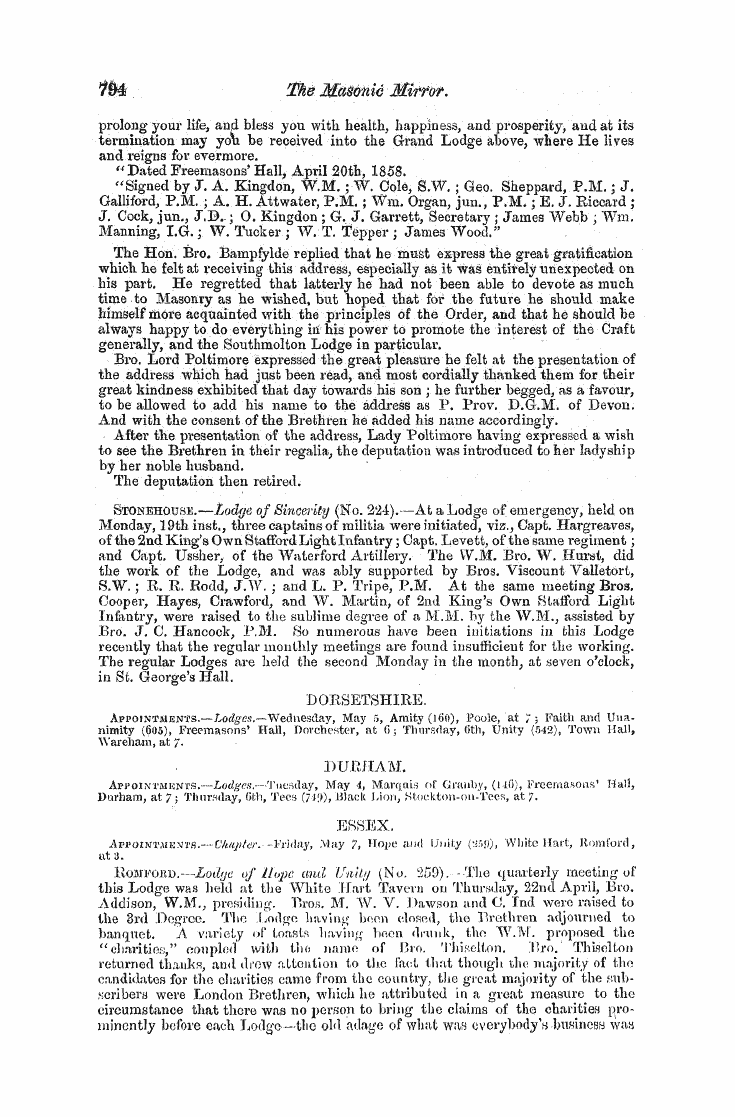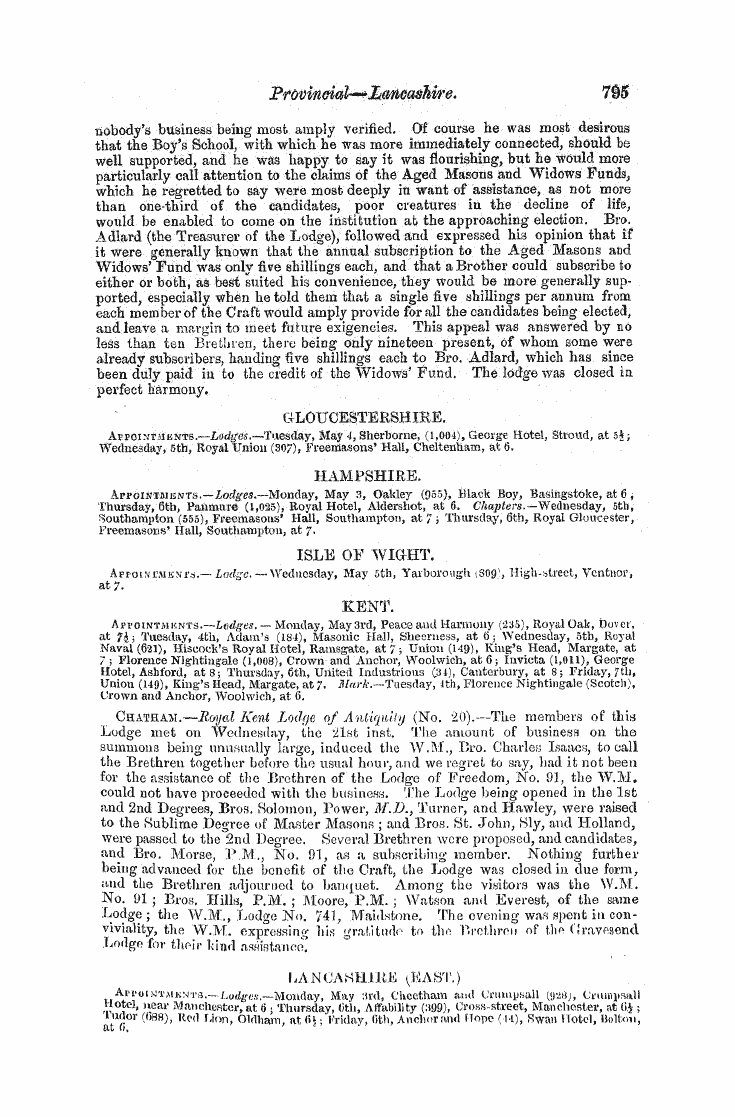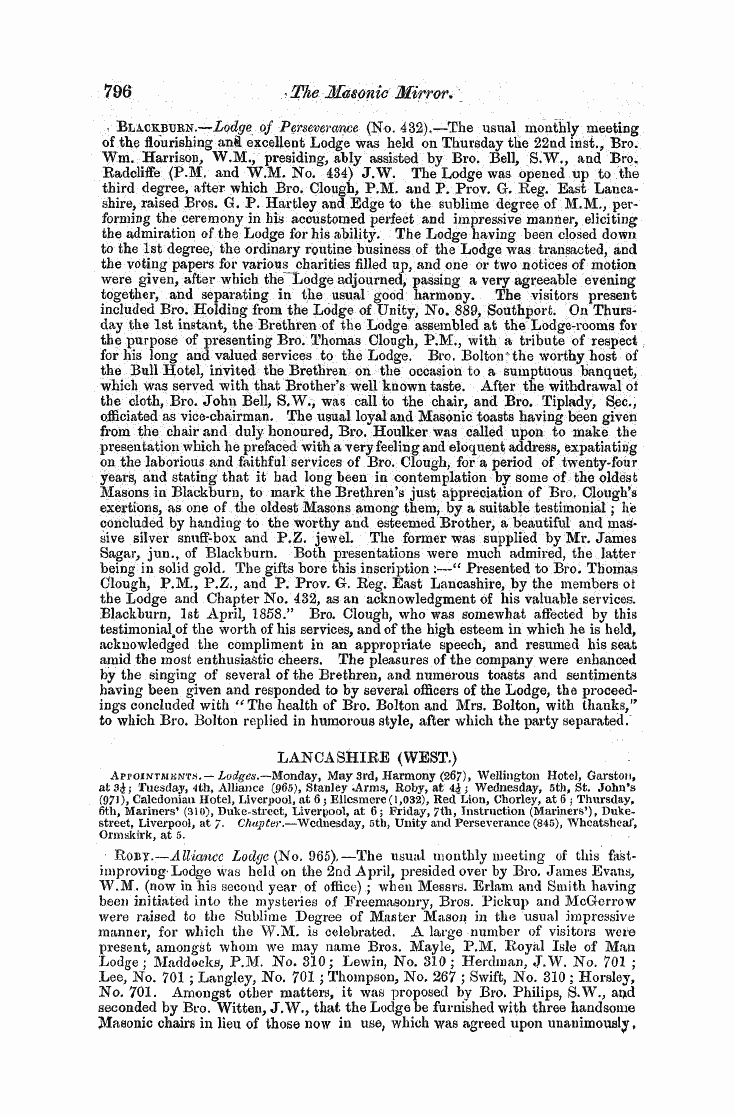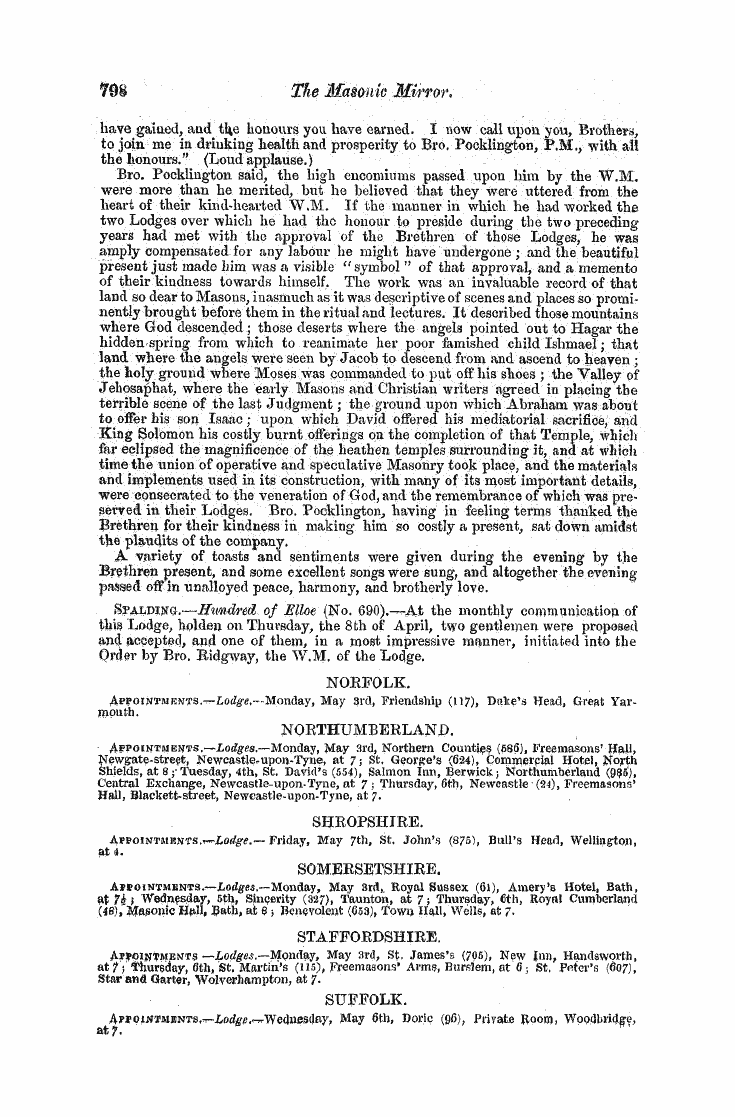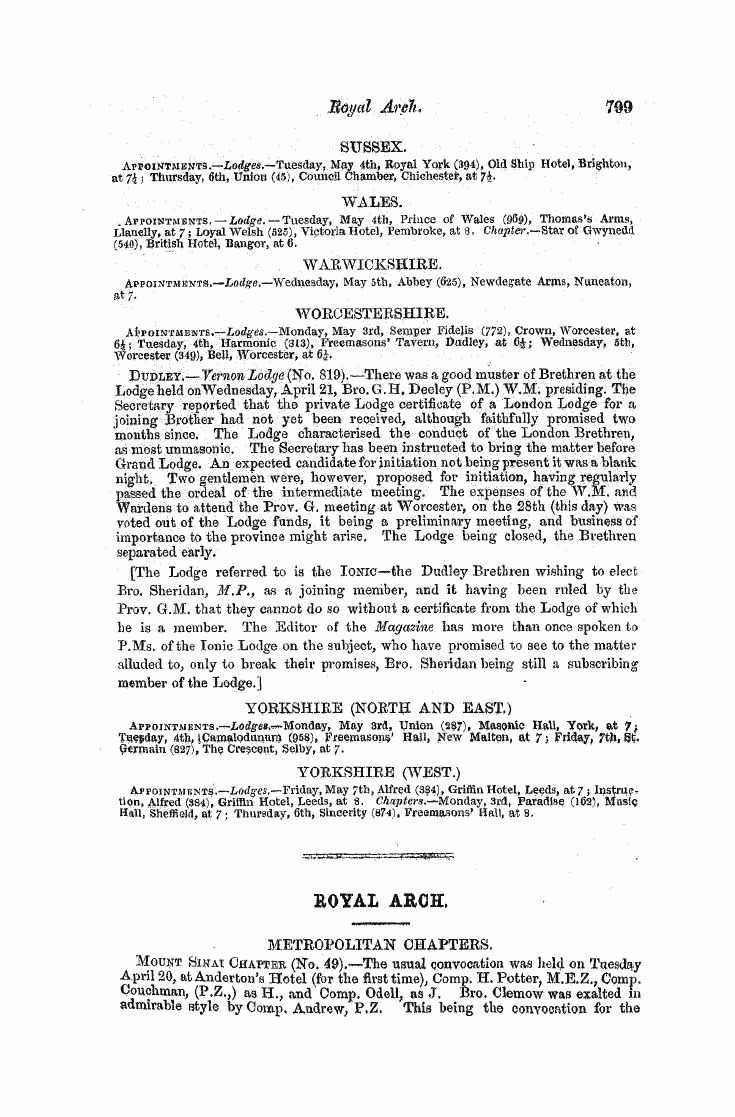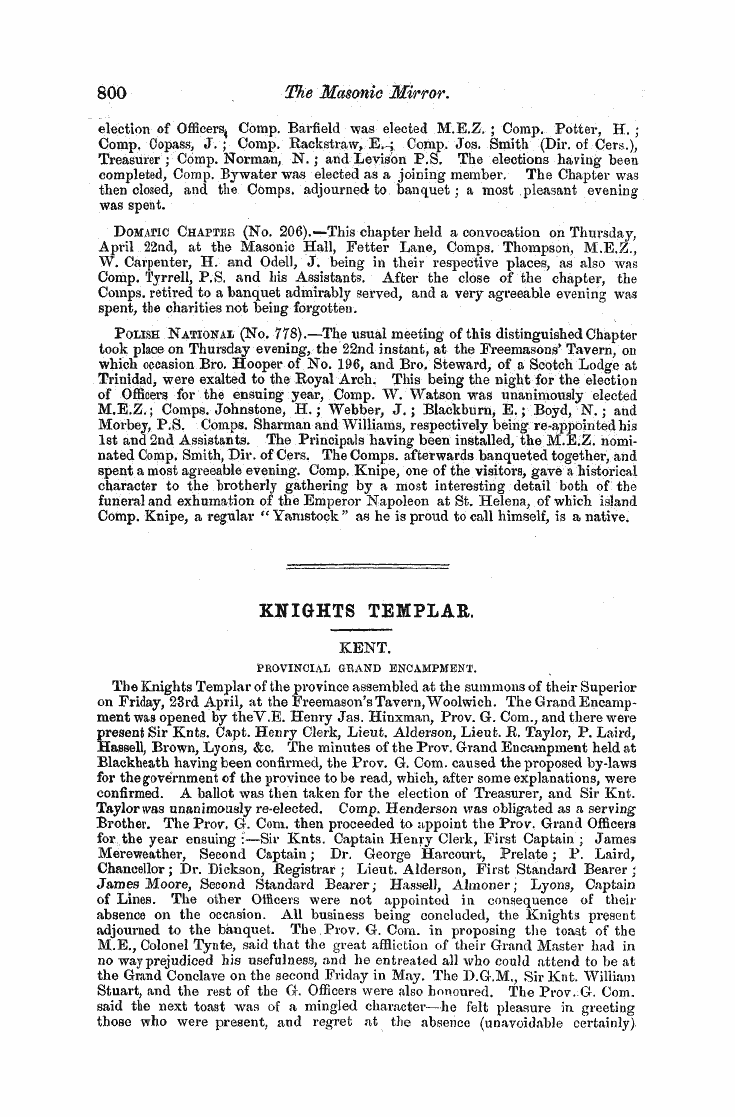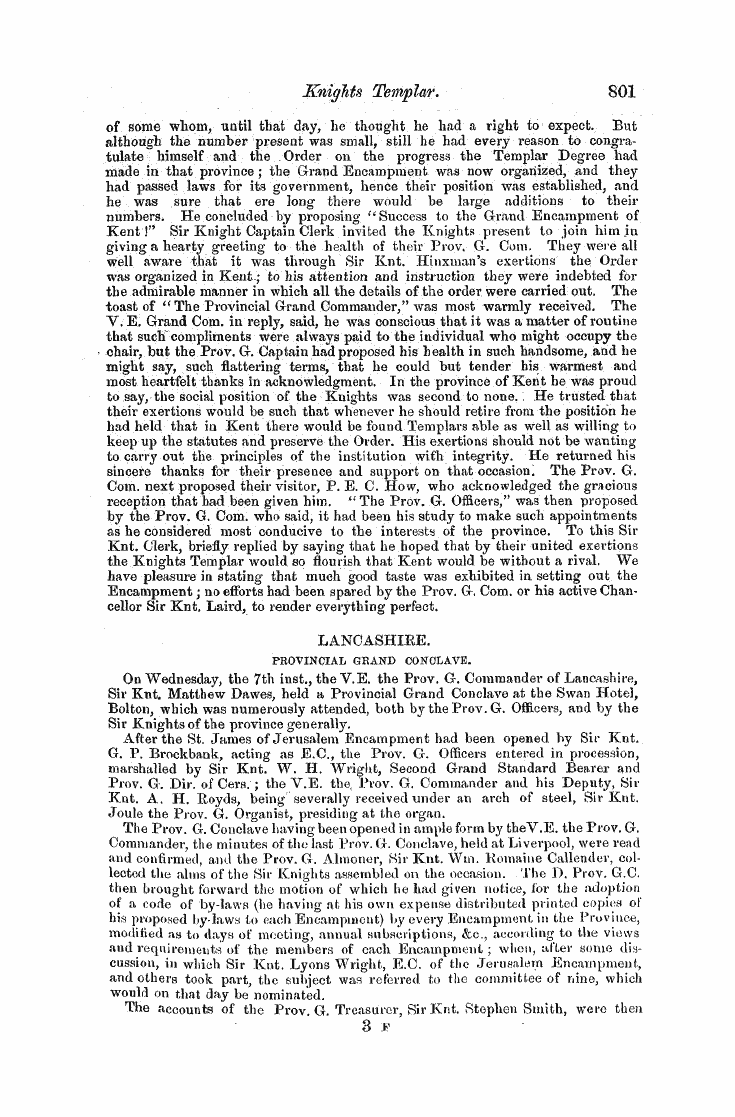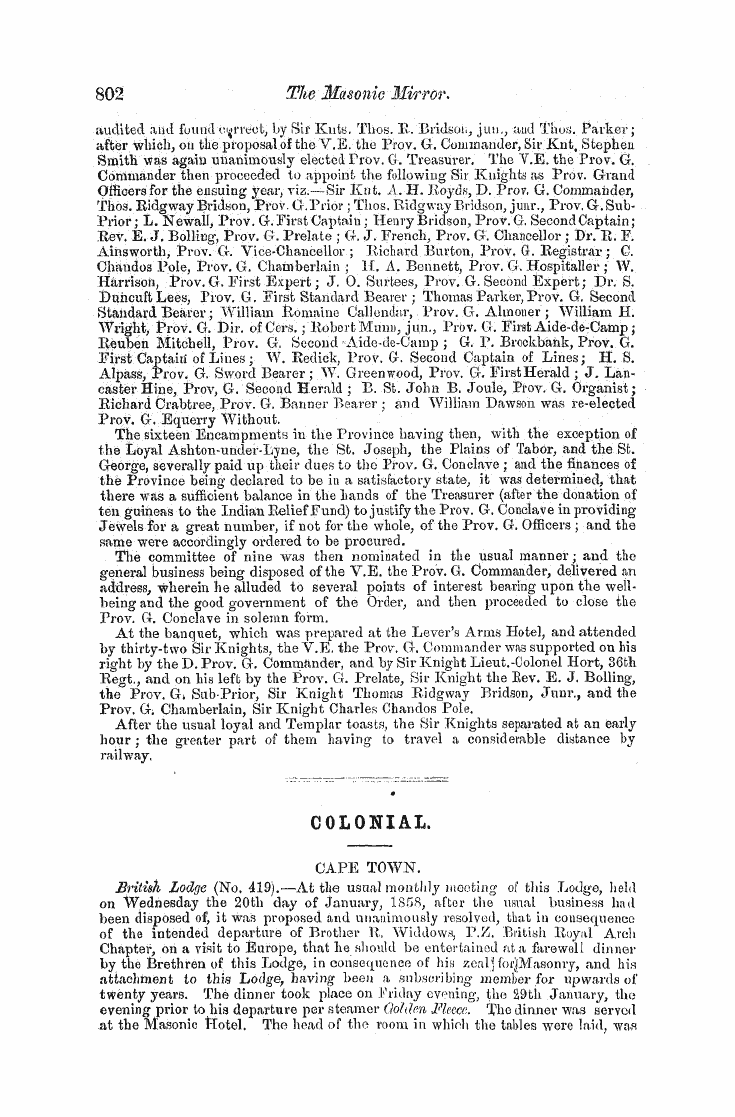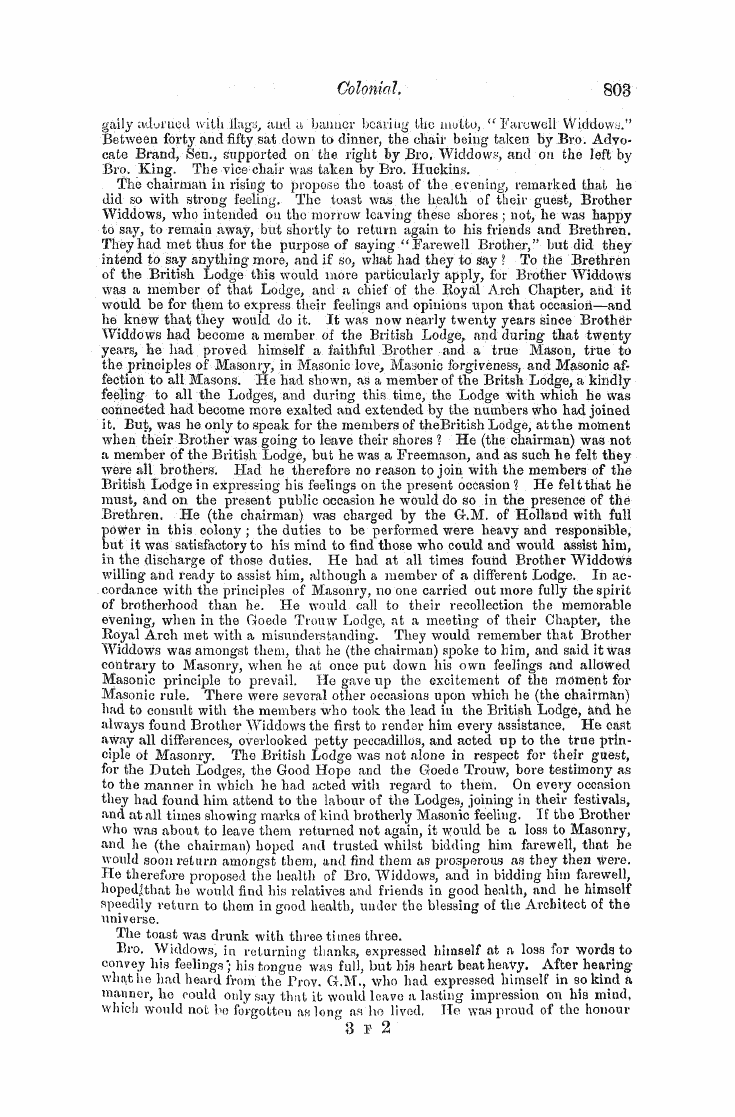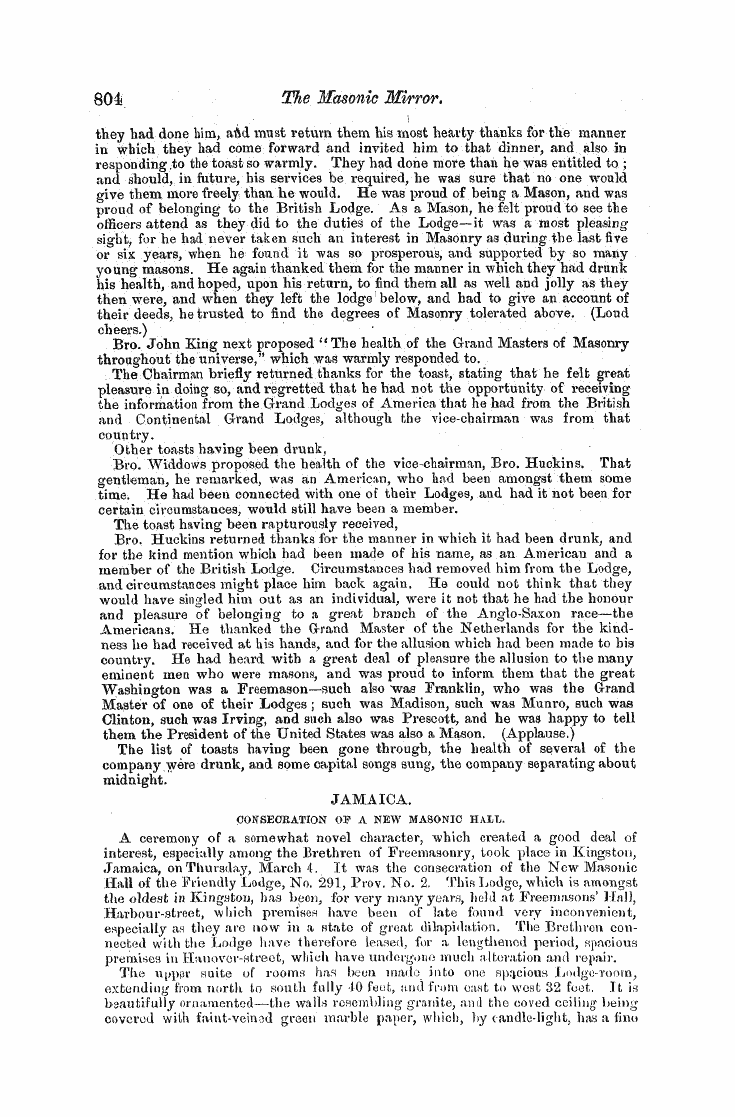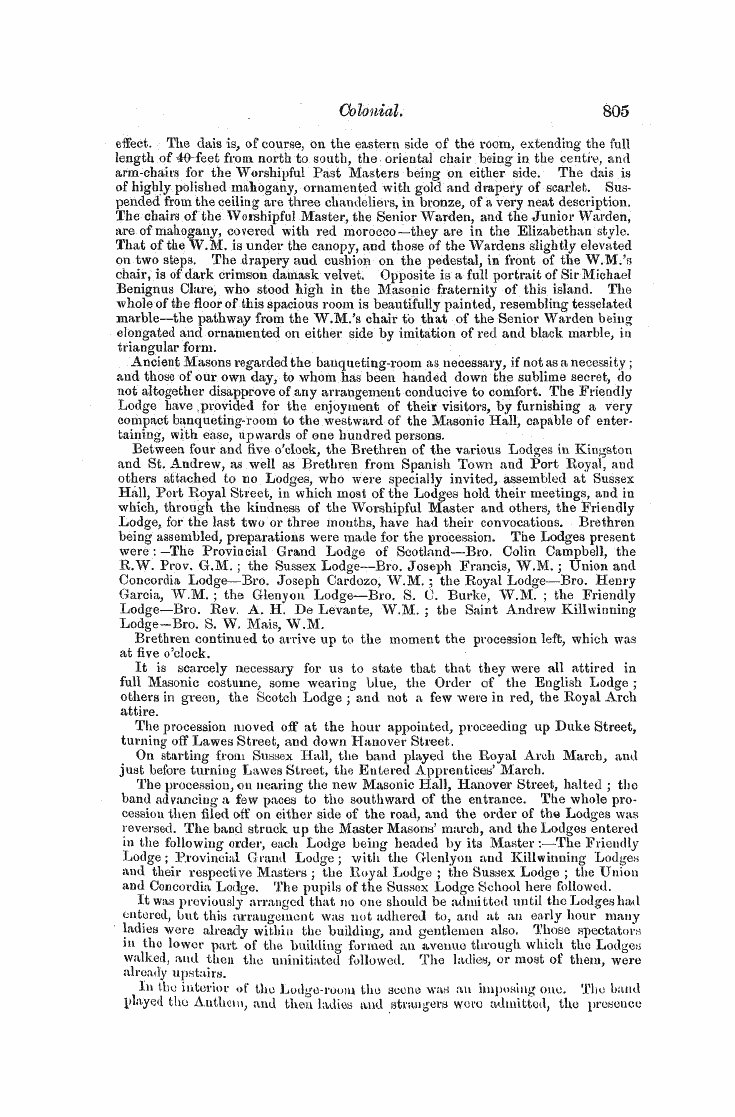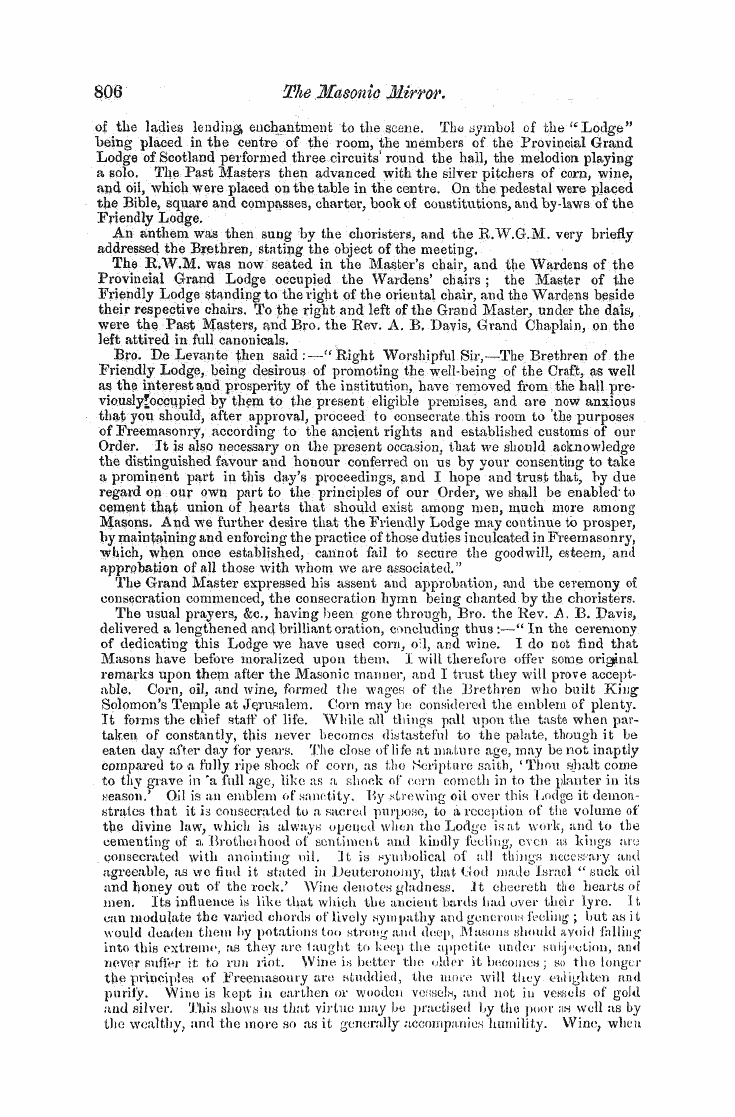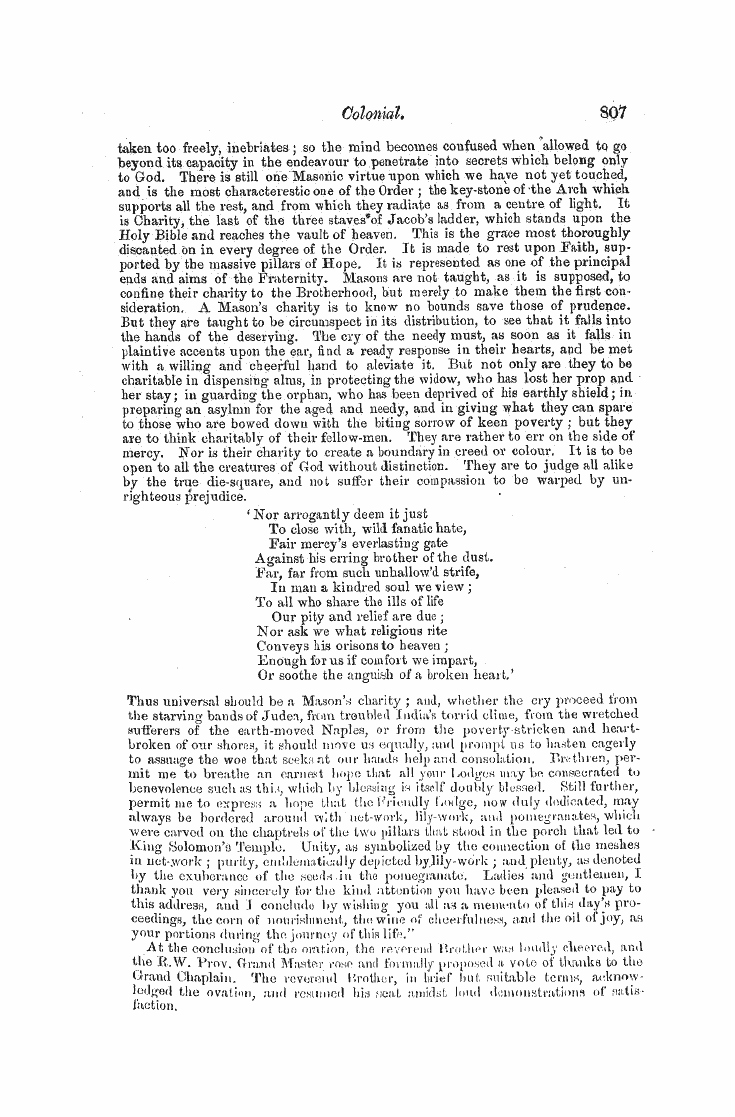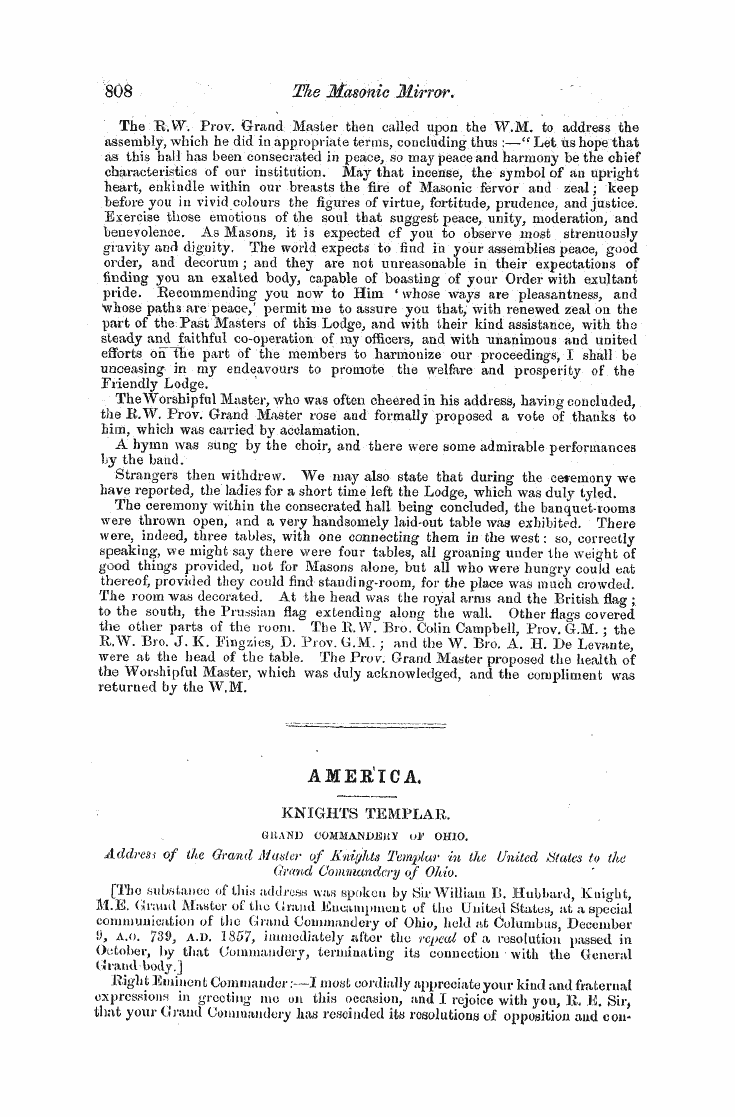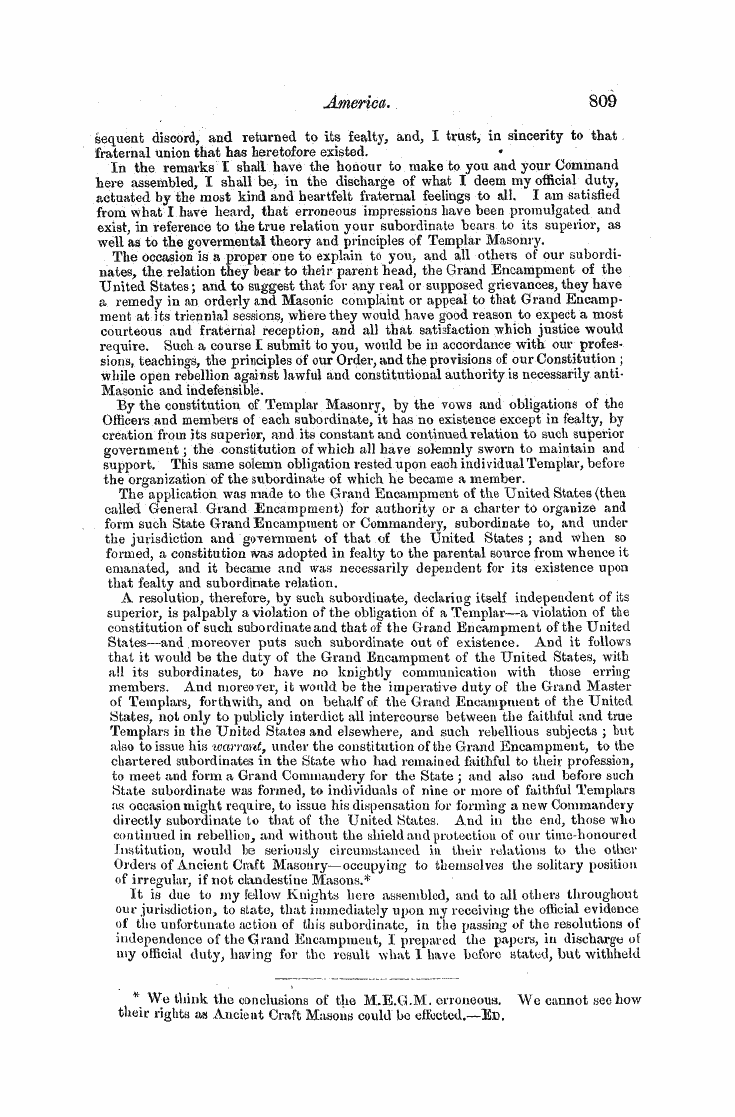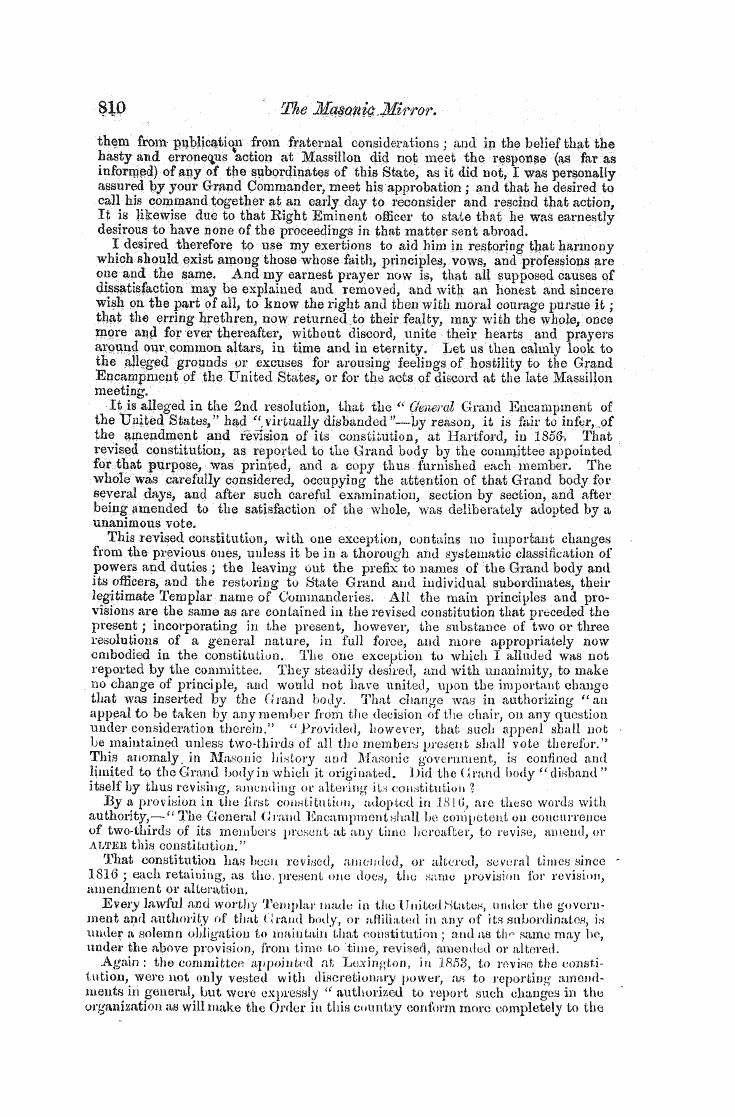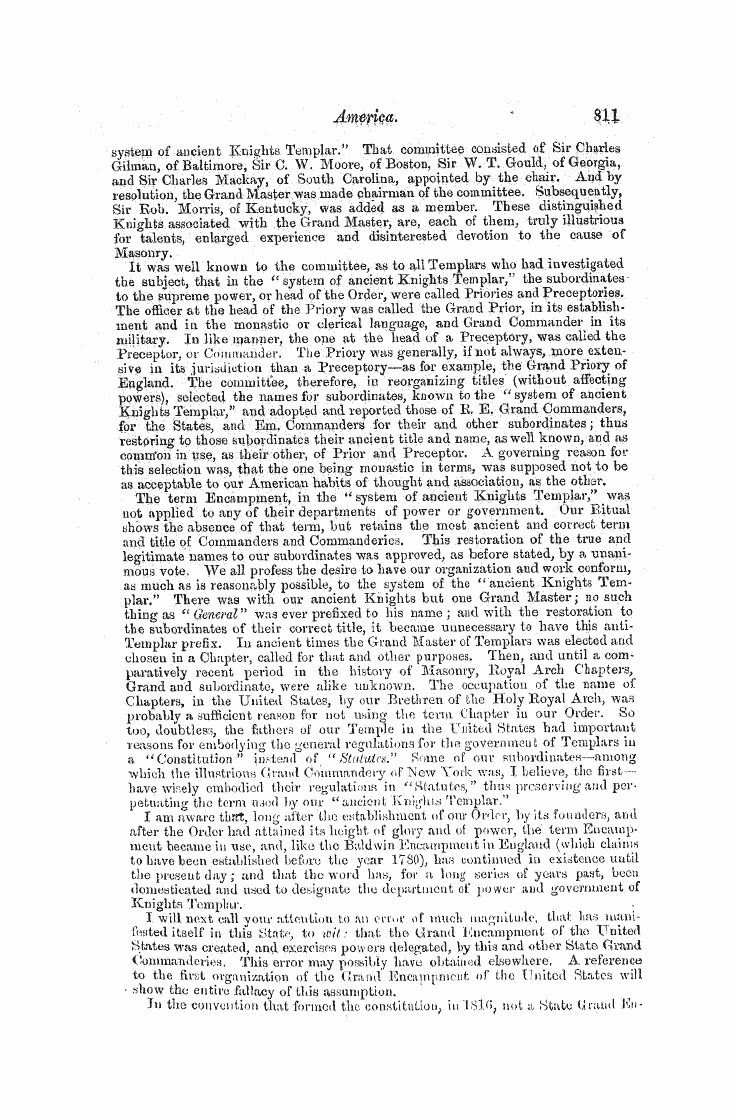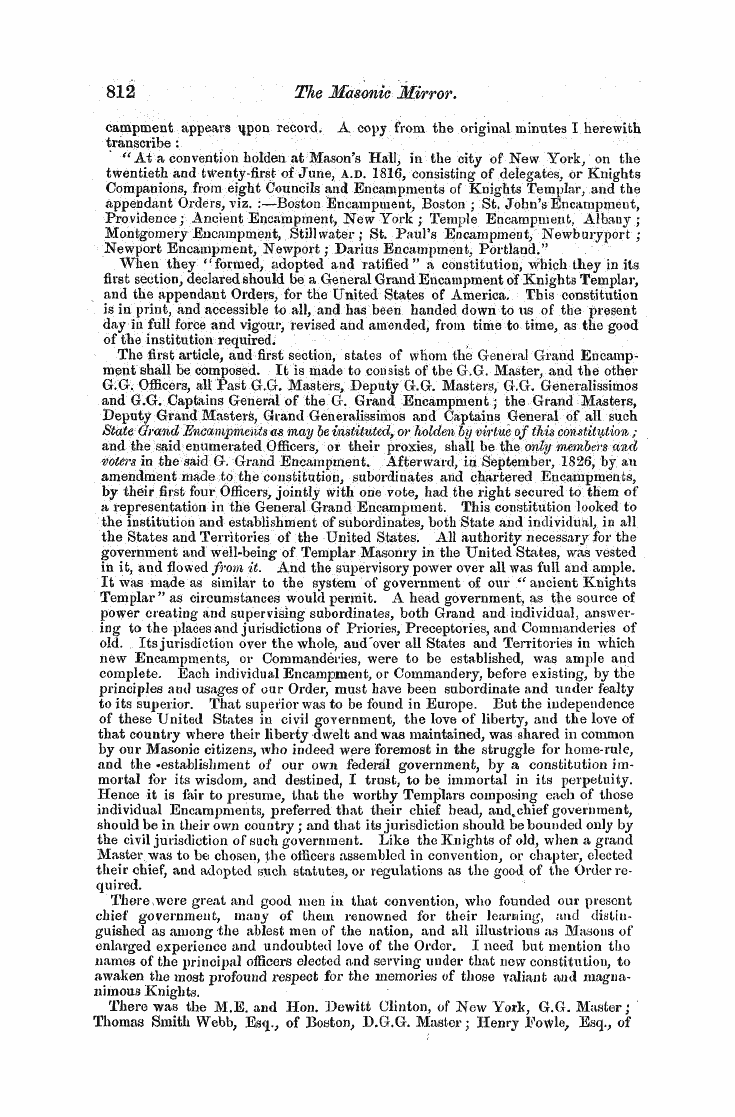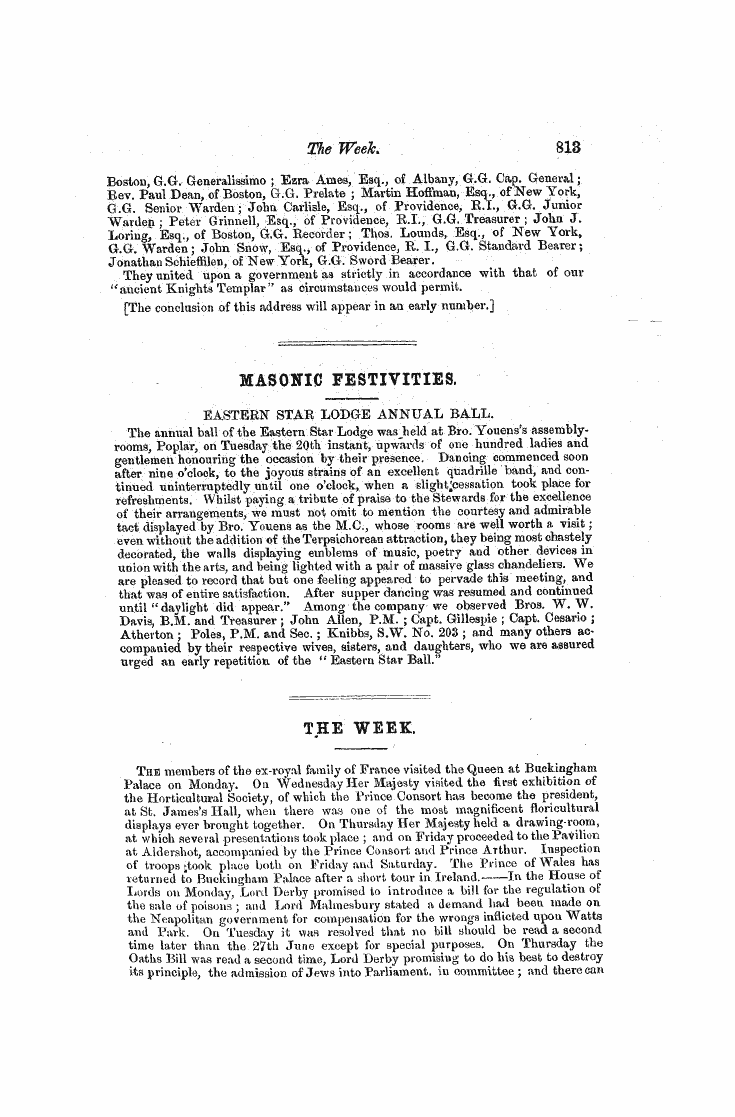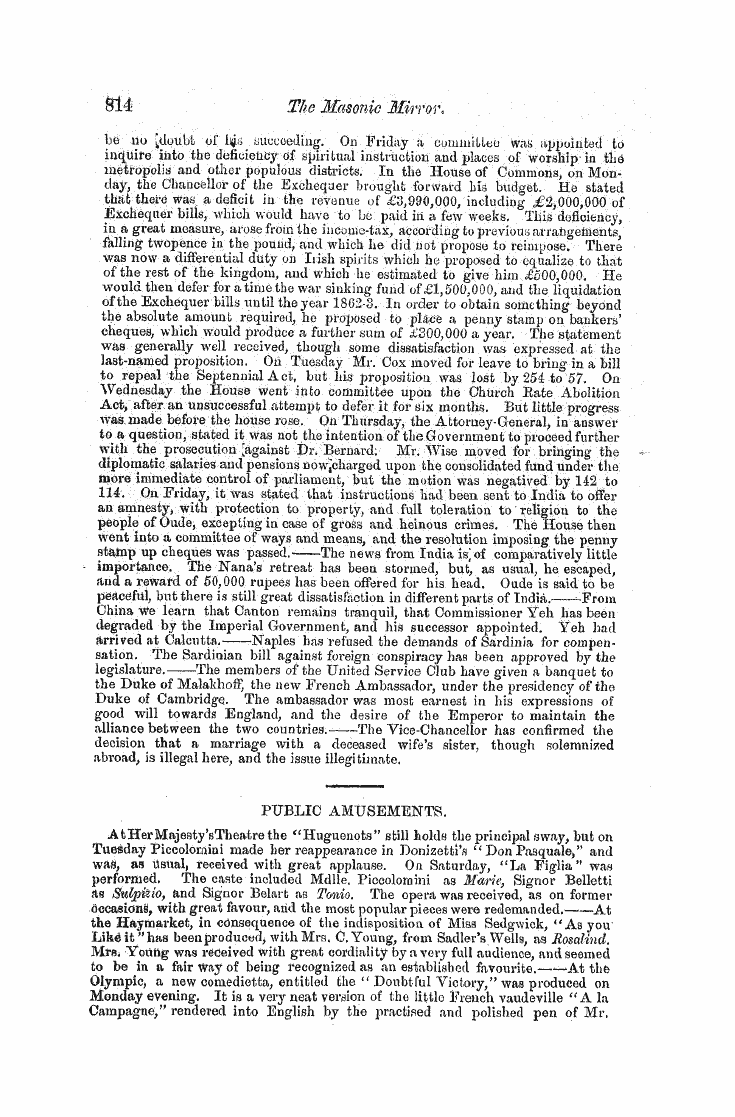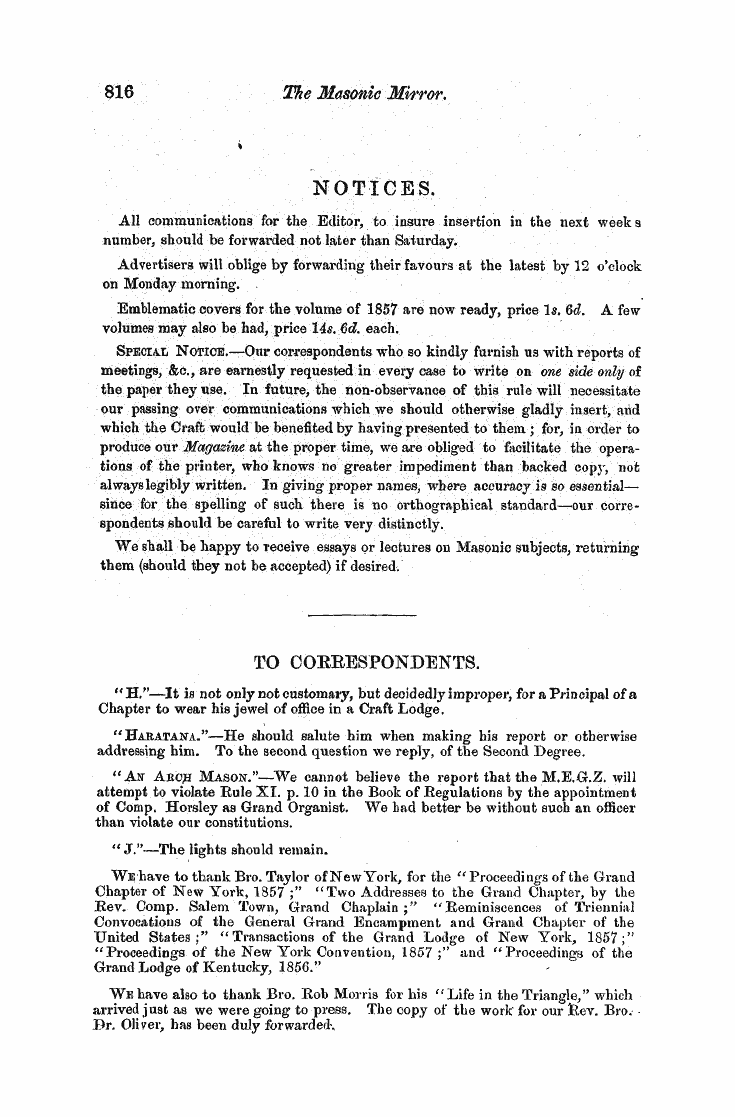-
Articles/Ads
Article ANCIENT WRITERS AND MODERN" PRACTICES, ← Page 4 of 5 →
Note: This text has been automatically extracted via Optical Character Recognition (OCR) software.
Ancient Writers And Modern" Practices,
represented the purpose or object of the Rosicrueians . And what was that purpose ? It was the secret wisdom , or , in their language , magic viz . 1 . Philosophy of nature or occult (?) knowledge of the works
of God ; 2 . Theology , or the occult (?) knowledge of God Himself ; 3 . Religion , or God's occult (?) intercourse with the spirit of man , which they imagined to have been transmitted from Adam through the cabalists to themselves . A spiritual or allegorical house or edifice was then to be built , of which the members werQ to become living stones . " Transmutemini'l says Eludd , " transmtitemini de lapidibus mortidsr in lapides vivos pMhsop ? dcos . " But , says our author , what is a living stone ? A living stone , he replies , is a Mason , who builds himself up into the wall , as a part of the temple of human nature . The society was then to be & Masonic Society , in order to represent typically that temple of holiness which it was
their business to erect in the spirit of man . He then , in the same way as many other writers , proceeds to identify Ereemasonry with Christianity , the correctness or fallacy of which position it is not now our purpose to discuss . The first gre ^ t event , he tells us , in the art of Masonry Was the attempt to build the Tower of Babel , which figuratively expressed the attempt of some unknown Mason to build
up the temple of holiness in anticipation of Christianity ; which attempt , however , had been frustrated by the pride of the builders . The second great occurrence was , he says , the building of Solomon ' s Temple , and had , in his opinion , an obvious meaning as a prefiguration of Christianity . He now for the first time connects the Freemasons with the operative masons , and states that the symbolic
interest to the English Rosicrueians , in the attributes , incidents , and legends of the art exercised by the literal Masons of real life , naturally brought the two orders into some connection with , each other . They were thus enabled to realize to their eyes the symbols of their own allegories ; and the same building which accommodated the guild of builders in their professional meetings , offered a desirable
means of secret assemblies to the early Freemasons . An apparatus of implements and utensils , such as was presented in the fabulous sepulchre of Father Rosy-cross , was here actually brought together . And accordingly , he tells us , it is upon record ( he does not say where , by the way , as we do when we quote an authority ) , that the first formal and solemn Lodge of Freemasons , on the occasion of
which the name of Freemasons was publicly made known , was held in Masons' Hall , Masons' Alley , Basinghall Street , London , in the year 1646 . Into this Lodge he tells us that A . shmole the antiquary was admitted . Private meetings , he says , there may have been ( and one at Warrington , in Lancashire , is mentioned in Ashmole ' s life ) ; but the name of a Freemasons' Lodge , with the insignia , attributes , and circumstances of a Lodge , first came forward , he assures us , at
the date above mentioned . Now we really do not see that in . the foregoing narration our friend De Quincey either does our Order one particle of harm , or proves that it is " a bubble . " In the first place , no one goes out of
Note: This text has been automatically extracted via Optical Character Recognition (OCR) software.
Ancient Writers And Modern" Practices,
represented the purpose or object of the Rosicrueians . And what was that purpose ? It was the secret wisdom , or , in their language , magic viz . 1 . Philosophy of nature or occult (?) knowledge of the works
of God ; 2 . Theology , or the occult (?) knowledge of God Himself ; 3 . Religion , or God's occult (?) intercourse with the spirit of man , which they imagined to have been transmitted from Adam through the cabalists to themselves . A spiritual or allegorical house or edifice was then to be built , of which the members werQ to become living stones . " Transmutemini'l says Eludd , " transmtitemini de lapidibus mortidsr in lapides vivos pMhsop ? dcos . " But , says our author , what is a living stone ? A living stone , he replies , is a Mason , who builds himself up into the wall , as a part of the temple of human nature . The society was then to be & Masonic Society , in order to represent typically that temple of holiness which it was
their business to erect in the spirit of man . He then , in the same way as many other writers , proceeds to identify Ereemasonry with Christianity , the correctness or fallacy of which position it is not now our purpose to discuss . The first gre ^ t event , he tells us , in the art of Masonry Was the attempt to build the Tower of Babel , which figuratively expressed the attempt of some unknown Mason to build
up the temple of holiness in anticipation of Christianity ; which attempt , however , had been frustrated by the pride of the builders . The second great occurrence was , he says , the building of Solomon ' s Temple , and had , in his opinion , an obvious meaning as a prefiguration of Christianity . He now for the first time connects the Freemasons with the operative masons , and states that the symbolic
interest to the English Rosicrueians , in the attributes , incidents , and legends of the art exercised by the literal Masons of real life , naturally brought the two orders into some connection with , each other . They were thus enabled to realize to their eyes the symbols of their own allegories ; and the same building which accommodated the guild of builders in their professional meetings , offered a desirable
means of secret assemblies to the early Freemasons . An apparatus of implements and utensils , such as was presented in the fabulous sepulchre of Father Rosy-cross , was here actually brought together . And accordingly , he tells us , it is upon record ( he does not say where , by the way , as we do when we quote an authority ) , that the first formal and solemn Lodge of Freemasons , on the occasion of
which the name of Freemasons was publicly made known , was held in Masons' Hall , Masons' Alley , Basinghall Street , London , in the year 1646 . Into this Lodge he tells us that A . shmole the antiquary was admitted . Private meetings , he says , there may have been ( and one at Warrington , in Lancashire , is mentioned in Ashmole ' s life ) ; but the name of a Freemasons' Lodge , with the insignia , attributes , and circumstances of a Lodge , first came forward , he assures us , at
the date above mentioned . Now we really do not see that in . the foregoing narration our friend De Quincey either does our Order one particle of harm , or proves that it is " a bubble . " In the first place , no one goes out of
































































